We are happy to present you this year’s contributions from the German HCI labs to CHI 2021! Feel free to browse our list of publications: There are 53 full papers (including one Best Paper and five Honorable Mentions), 16 LBWs, and many demonstrations, workshops, or other interesting publications. Please send us a mail if you feel that your paper is missing or to correct any entries.
“It's a kind of art!”: Understanding Food Influencers as Influential Content Creators
Philip Weber (Cyber-Physical Systems, University of Siegen) and Thomas Ludwig (Cyber-Physical Systems, University of Siegen), Sabrina Brodesser (Cyber-Physical Systems, University of Siegen), Laura Grönewald (Cyber-Physical Systems, University of Siegen)
Abstract | Tags: Full Paper | Links:
@inproceedings{2021WeberFoodInfluencers,
title = {“It's a kind of art!”: Understanding Food Influencers as Influential Content Creators},
author = {Philip Weber (Cyber-Physical Systems, University of Siegen) and
Thomas Ludwig (Cyber-Physical Systems, University of Siegen) and Sabrina Brodesser (Cyber-Physical Systems, University of Siegen) and Laura Grönewald (Cyber-Physical Systems, University of Siegen)},
url = {https://cps.wineme.fb5.uni-siegen.de/ },
doi = {10.1145/3411764.3445607},
year = {2021},
date = {2021-05-08},
publisher = {ACM},
abstract = {Although the number of influencers is increasing and being an influencer is one of the most frequently mentioned career aspirations of young people, we still know very little about influencers’ motivations and actual practices from the HCI perspective. Driven by the emerging field of Human-Food Interaction and novel phenomena on social media such as Finstas, ASMR, Mukbang and live streaming, we would like to highlight the significance of food influencers as influential content creators and their social media practices. We have conducted a qualitative interview study and analyzed over 1,500 posts of food content creators on Instagram, focusing on practices of content creation, photography, staging, posting, and use of technology. Based on our findings, we have derived a process model that outlines the practices of this rather small, but influential user group. We contribute to the field of HCI by outlining the practices of food influencers as influential content creators within the social media sphere to open up design spaces for interaction researchers and practitioners.},
keywords = {Full Paper},
pubstate = {published},
tppubtype = {inproceedings}
}

A Closer Look at Machine Learning Code
Thomas Weber (LMU Munich), Christina Winiker (LMU Munich), Heinrich Hußmann (LMU Munich)
Abstract | Tags: Late Breaking Work | Links:
@inproceedings{2021WeberLook,
title = {A Closer Look at Machine Learning Code},
author = {Thomas Weber (LMU Munich), Christina Winiker (LMU Munich), Heinrich Hußmann (LMU Munich)},
doi = {10.1145/3411763.3451679},
year = {2021},
date = {2021-05-01},
abstract = {"Software using Machine Learning algorithms is becoming ever more ubiquitous making it equally important to have good development processes and practices. Whether we can apply insights from software development research remains open though, since it is not yet clear, whether data-driven development has the same requirements as its traditional counterpart.
We used eye tracking to investigate whether the code reading behaviour of developers differs between code that uses Machine Learning and code that does not.
Our data shows that there are differences in what parts of the code people consider of interest and how they read it. This is a consequence of differences in both syntax and semantics of the code.
This reading behaviour already shows that we cannot take existing solutions as universally applicable. In the future, methods that support Machine Learning must iterate on existing knowledge to meet the challenges of data-driven development."},
keywords = {Late Breaking Work},
pubstate = {published},
tppubtype = {inproceedings}
}
We used eye tracking to investigate whether the code reading behaviour of developers differs between code that uses Machine Learning and code that does not.
Our data shows that there are differences in what parts of the code people consider of interest and how they read it. This is a consequence of differences in both syntax and semantics of the code.
This reading behaviour already shows that we cannot take existing solutions as universally applicable. In the future, methods that support Machine Learning must iterate on existing knowledge to meet the challenges of data-driven development."
A Critical Assessment of the Use of SSQ as a Measure of General Discomfort in VR Head-Mounted Displays
Teresa Hirzle (Ulm University), Maurice Cordts (Ulm University), Enrico Rukzio (Ulm University), Jan Gugenheimer (Télécom Paris), Andreas Bulling (University of Stuttgart)
Abstract | Tags: Full Paper | Links:
@inproceedings{2021HirzleCritical,
title = {A Critical Assessment of the Use of SSQ as a Measure of General Discomfort in VR Head-Mounted Displays},
author = {Teresa Hirzle (Ulm University) and Maurice Cordts (Ulm University) and Enrico Rukzio (Ulm University) and Jan Gugenheimer (Télécom Paris) and Andreas Bulling (University of Stuttgart)},
url = {https://www.uni-ulm.de/en/in/mi/, Website HCI Ulm University},
doi = {10.1145/3411764.3445361},
year = {2021},
date = {2021-05-01},
abstract = {Based on a systematic literature review of more than 300 papers published over the last 10 years, we provide indicators that the simulator sickness questionnaire (SSQ) is extensively used and widely accepted as a general discomfort measure in virtual reality (VR) research – although it actually only accounts for one category of symptoms. This results in important other categories (digital eye strain (DES) and ergonomics) being largely neglected. To contribute to a more comprehensive picture of discomfort in VR head-mounted displays, we further conducted an online study (N=352) on the severity and relevance of all three symptom categories. Most importantly, our results reveal that symptoms of simulator sickness are significantly less severe and of lower prevalence than those of DES and ergonomics. In light of these findings, we critically discuss the current use of SSQ as the only discomfort measure and propose a more comprehensive factor model that also includes DES and ergonomics.},
keywords = {Full Paper},
pubstate = {published},
tppubtype = {inproceedings}
}
A Study on the Size of Tangible Organ-Shaped Controllers for Exploring Medical Data in VR
Anke V. Reinschluessel (Universität Bremen), Thomas Muender (Universität Bremen), Tanja Döring (Universität Bremen), Verena Uslar (Universitätsklinik für Viszeralchirurgie), Thomas Lück (cirp GmbH), Dirk Weyhe (Universitätsklinik für Viszeralchirurgie), Andrea Schenk (Fraunhofer Institute for Digital Medicine MEVIS), Rainer Malaka (Universität Bremen)
Abstract | Tags: Late Breaking Work | Links:
@inproceedings{2021ReinschluesselStudy,
title = {A Study on the Size of Tangible Organ-Shaped Controllers for Exploring Medical Data in VR},
author = {Anke V. Reinschluessel (Universität Bremen) and Thomas Muender (Universität Bremen) and Tanja Döring (Universität Bremen) and Verena Uslar (Universitätsklinik für Viszeralchirurgie) and Thomas Lück (cirp GmbH) and Dirk Weyhe (Universitätsklinik für Viszeralchirurgie) and Andrea Schenk (Fraunhofer Institute for Digital Medicine MEVIS) and Rainer Malaka (Universität Bremen)},
url = {https://www.uni-bremen.de/dmlab, Website - DMLab
https://twitter.com/dmlabbremen, Twitter - DMLab
https://youtu.be/yLlH08jjWzo (video figure)},
doi = {10.1145/3411763.3451594},
year = {2021},
date = {2021-05-01},
abstract = {Virtual reality (VR) is, by nature, excellent in showing spatial relationships, e.g. for viewing medical 3D data. In this work, we propose a VR system to view and manipulate medical 3D images of livers in combination with 3D printed liver models as controllers. We investigate whether users benefit from a controller in the shape of a liver and if the size matters by using three different sizes (50 %, 75 %, 100 %). In a user study with 14 surgeons, we focused on presence, workload and qualitative feedback such as preference. While neither size differences nor the VIVE tracker as control resulted in significant differences, most surgeons preferred the 75 % model. Qualitative results indicate that high similarity of physical and virtual objects regarding shape and a focus on good manageability of the physical object is more important than providing an exact replica in size.},
keywords = {Late Breaking Work},
pubstate = {published},
tppubtype = {inproceedings}
}
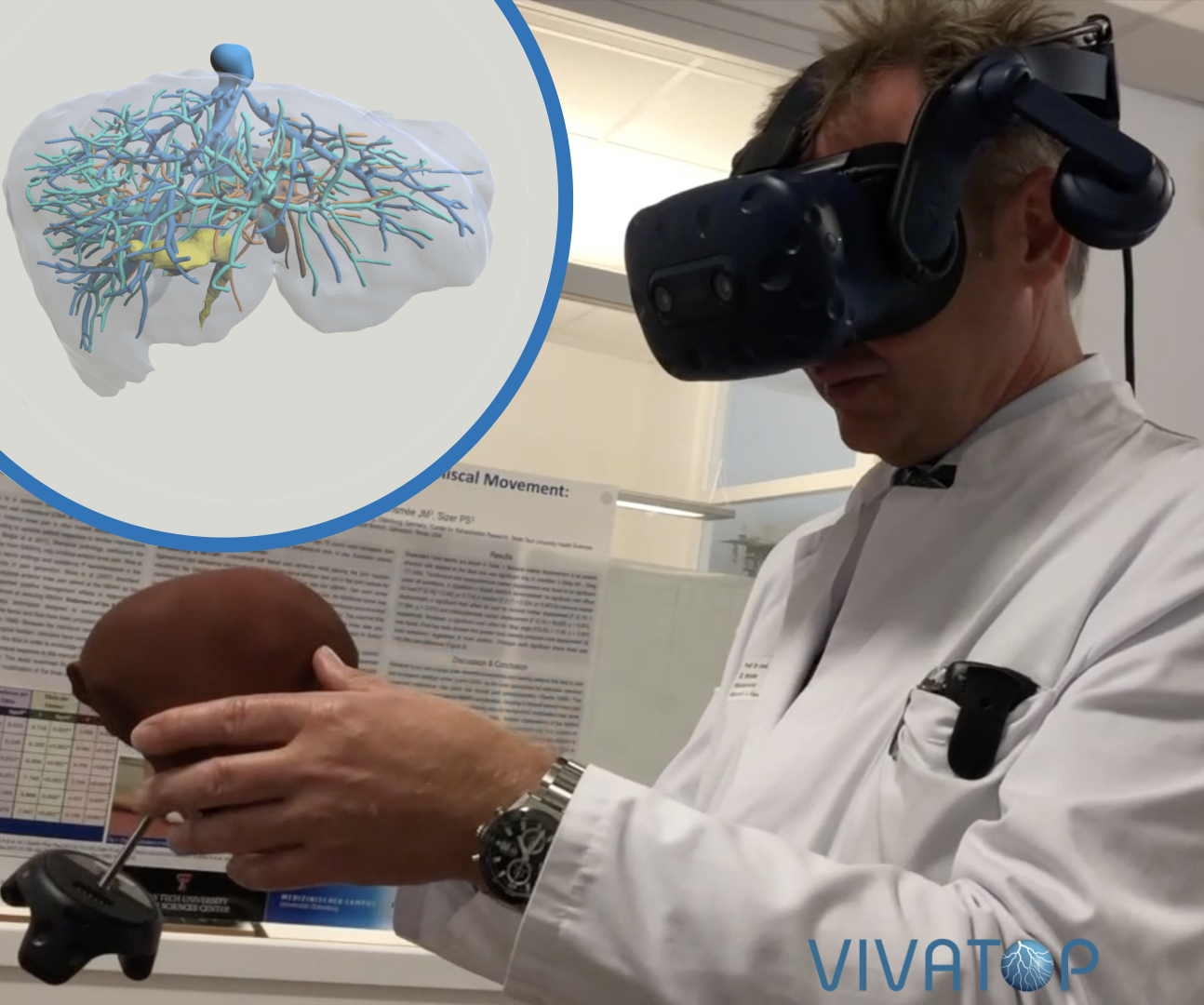
A Taxonomy of Vulnerable Road Users for HCI Based On A Systematic Literature Review
Kai Holländer (LMU Munich), Mark Colley (Institute of Media Informatics, Ulm University), Enrico Rukzio (Institute of Media Informatics, Ulm University), Andreas Butz (LMU Munich)
Abstract | Tags: Full Paper | Links:
@inproceedings{2021HollaenderTaxonomy,
title = {A Taxonomy of Vulnerable Road Users for HCI Based On A Systematic Literature Review},
author = {Kai Holländer (LMU Munich) and Mark Colley (Institute of Media Informatics, Ulm University) and Enrico Rukzio (Institute of Media Informatics, Ulm University) and Andreas Butz (LMU Munich)},
url = {http://www.medien.ifi.lmu.de/, Website - HCI Group LMU Munich
https://www.uni-ulm.de/en/in/mi/hci/, Website - HCI Group Ulm University
https://twitter.com/mimuc, Twitter - HCI Group LMU Munich
https://twitter.com/mi_uulm, Twitter - HCI Group Ulm University
},
doi = {10.1145/3411764.3445480},
year = {2021},
date = {2021-05-01},
abstract = {Recent automotive research often focuses on automated driving, including the interaction between automated vehicles (AVs) and so-called ``vulnerable road users'' (VRUs). While road safety statistics and traffic psychology at least define VRUs as pedestrians, cyclists, and motorcyclists, many publications on human-vehicle interaction use the term without even defining it. The actual target group remains unclear. Since each group already poses a broad spectrum of research challenges, a one-fits-all solution seems unrealistic and inappropriate, and a much clearer differentiation is required. To foster clarity and comprehensibility,
we propose a literature-based taxonomy providing a structured separation of (vulnerable) road users, designed to particularly (but not exclusively) support research on the communication between VRUs and AVs.
It consists of two conceptual hierarchies and will help practitioners and researchers by providing a uniform and comparable set of terms needed for the design, implementation, and description of HCI applications.},
keywords = {Full Paper},
pubstate = {published},
tppubtype = {inproceedings}
}
we propose a literature-based taxonomy providing a structured separation of (vulnerable) road users, designed to particularly (but not exclusively) support research on the communication between VRUs and AVs.
It consists of two conceptual hierarchies and will help practitioners and researchers by providing a uniform and comparable set of terms needed for the design, implementation, and description of HCI applications.

ActPad – A Smart Desk Platform to Enable User Interaction with IoT Devices
Sarah Delgado Rodriguez (Bundeswehr University Munich, LMU Munich), Sarah Prange (Bundeswehr University Munich, LMU Munich), Lukas Mecke (Bundeswehr University Munich, LMU Munich), Florian Alt (Bundeswehr University Munich)
Abstract | Tags: Late Breaking Work | Links:
@inproceedings{2021DelgadoActPad,
title = {ActPad – A Smart Desk Platform to Enable User Interaction with IoT Devices},
author = {Sarah Delgado Rodriguez (Bundeswehr University Munich, LMU Munich) and Sarah Prange (Bundeswehr University Munich, LMU Munich) and Lukas Mecke (Bundeswehr University Munich, LMU Munich) and Florian Alt (Bundeswehr University Munich)},
url = {https://www.unibw.de/usable-security-and-privacy, Website - Usable Security and Privacy Group, CODE Forschungsinstitut Cyber Defence
https://youtu.be/dVjEhE_Pg7w, Teaser Video},
doi = {10.1145/3411763.3451825},
year = {2021},
date = {2021-05-01},
abstract = {ActPad is a desk pad, capable of sensing capacitive touch input in desk setups. Our prototype can sense touches on both, its electrodes and on connected objects. ActPad’s interaction-space is customizable, allowing easy integration and extension of existing desk environments. In smart environments, users may interact with more than one device at the same time. This generates the need for new interaction mechanisms that bundle the control of multiple ubiquitous devices. We support this need through a platform that extends interaction with IoT devices. ActPad accounts for different ways of controlling IoT devices by enabling various modes of interaction – in particular simultaneous, sequential, implicit and explicit – and, hence, a rich input space. As a proof of concept, we illustrate several use cases, including, but not limited to, controlling the browser on a PC, turning lights on/off, switching songs, or preparing coffee.},
keywords = {Late Breaking Work},
pubstate = {published},
tppubtype = {inproceedings}
}

Artificially Intelligent Technology for the Margins: A Multidisciplinary Design Agenda
Franziska Tachtler (TU Wien), Konstantin Aal (University of Siegen), Tanja Ertl (University of Siegen), Daniel Diethei (University of Bremen), Jasmin Niess (University of Bremen), Mohammed Khwaja (Imperial College London), Reem Talhouk (Northumbria University), Giovanna Nunes Vilaza (Technical University of Denmark), Shaimaa Lazem (City of Scientific Research, Technological Applications), Aneesha Singh (University College London), Marguerite Barry (University College Dublin), Volker Wulf (University of Siegen), Geraldine Fitzpatrick (TU Wien)
Abstract | Tags: Workshop | Links:
@inproceedings{Tachtler2021chiworkshop,
title = {Artificially Intelligent Technology for the Margins: A Multidisciplinary Design Agenda},
author = {Franziska Tachtler (TU Wien), Konstantin Aal (University of Siegen), Tanja Ertl (University of Siegen), Daniel Diethei (University of Bremen), Jasmin Niess (University of Bremen), Mohammed Khwaja (Imperial College London), Reem Talhouk (Northumbria University), Giovanna Nunes Vilaza (Technical University of Denmark), Shaimaa Lazem (City of Scientific Research and Technological Applications), Aneesha Singh (University College London), Marguerite Barry (University College Dublin), Volker Wulf (University of Siegen), Geraldine Fitzpatrick (TU Wien)},
url = {http://wineme.uni-siegen.de/, Information Systems and New Media University of Siegen},
doi = {10.1145/3411763.3441333},
year = {2021},
date = {2021-05-01},
abstract = {There has been increasing interest in socially just use of Artificial Intelligence (AI) and Machine Learning (ML) in the development of technology that may be extended to marginalized people. However, the exploration of such technologies entails the development of an understanding of how they may increase and/or counter marginalization. The use of AI/ML algorithms can lead to several challenges, such as privacy and security concerns, biases, unfairness, and lack of cultural awareness, which especially affect marginalized people. This workshop will provide a forum to share experiences and challenges of developing AI/ML health and social wellbeing technologies with/for marginalized people and will work towards developing design methods to engage in the re-envisioning of AI/ML technologies for and with marginalized people. In doing so we will create cross-research area dialogues and collaborations. These discussions build a basis to (1) explore potential tools to support designing AI/ML systems with marginalized people, and (2) develop a design agenda for future research and AI/ML technology for and with marginalized people.},
keywords = {Workshop},
pubstate = {published},
tppubtype = {inproceedings}
}
assembler3: 3D Reconstruction of Laser-Cut Models
Thijs Roumen (Hasso Plattner Institute), Yannis Kommana (Hasso Plattner Institute), Ingo Apel (Hasso Plattner Institute), Conrad Lempert (Hasso Plattner Institute), Markus Brand (Hasso Plattner Institute), Erik Brendel (Hasso Plattner Institute), Laurenz Seidel (Hasso Plattner Institute), Lukas Rambold (Hasso Plattner Institute), Carl Goedecken (Hasso Plattner Institute), Pascal Crenzin (Hasso Plattner Institute), Ben Hurdelhey (Hasso Plattner Institute), Muhammad Abdullah (Hasso Plattner Institute), Patrick Baudisch (Hasso Plattner Institute)
Abstract | Tags: Full Paper | Links:
@inproceedings{2021RoumenAssembler,
title = {assembler3: 3D Reconstruction of Laser-Cut Models},
author = {Thijs Roumen (Hasso Plattner Institute) and Yannis Kommana (Hasso Plattner Institute) and Ingo Apel (Hasso Plattner Institute) and Conrad Lempert (Hasso Plattner Institute) and Markus Brand (Hasso Plattner Institute) and Erik Brendel (Hasso Plattner Institute) and Laurenz Seidel (Hasso Plattner Institute) and Lukas Rambold (Hasso Plattner Institute) and Carl Goedecken (Hasso Plattner Institute) and Pascal Crenzin (Hasso Plattner Institute) and Ben Hurdelhey (Hasso Plattner Institute) and Muhammad Abdullah (Hasso Plattner Institute) and Patrick Baudisch (Hasso Plattner Institute)},
url = {https://www.hpi.de/baudisch/, Website - HCI HPI
https://www.youtube.com/channel/UC74ZNPu98FIn8Wn3JNyTIVQ, YouTube - HCI HPI
https://www.youtube.com/watch?v=9NZNZpKxdfE&t=1s, YouTube - Video},
doi = {10.1145/3411764.3445453},
year = {2021},
date = {2021-05-01},
abstract = {We present Assembler3 a software tool that allows users to perform 3D parametric manipulations on 2D laser cutting plans. Assembler3 achieves this by semi-automatically converting 2D laser cutting plans to 3D, where users modify their models using available 3D tools (kyub), before converting them back to 2D. In our user study, this workflow allowed users to modify mod-els 10x faster than using the traditional approach of editing 2D cutting plans directly. Assembler3 converts models to 3D in 5 steps: (1) plate detection, (2) joint detection, (3) material thickness detection, (4) joint matching based on hashed joint "signatures", and (5) interactive reconstruction. In our technical evaluation, Assembler3 was able to reconstruct 100 of 105 models. Once 3D-reconstructed, we expect users to store and share their models in 3D, which can simplify collaboration and there-by empower the laser cutting community to create models of higher complexity.},
keywords = {Full Paper},
pubstate = {published},
tppubtype = {inproceedings}
}
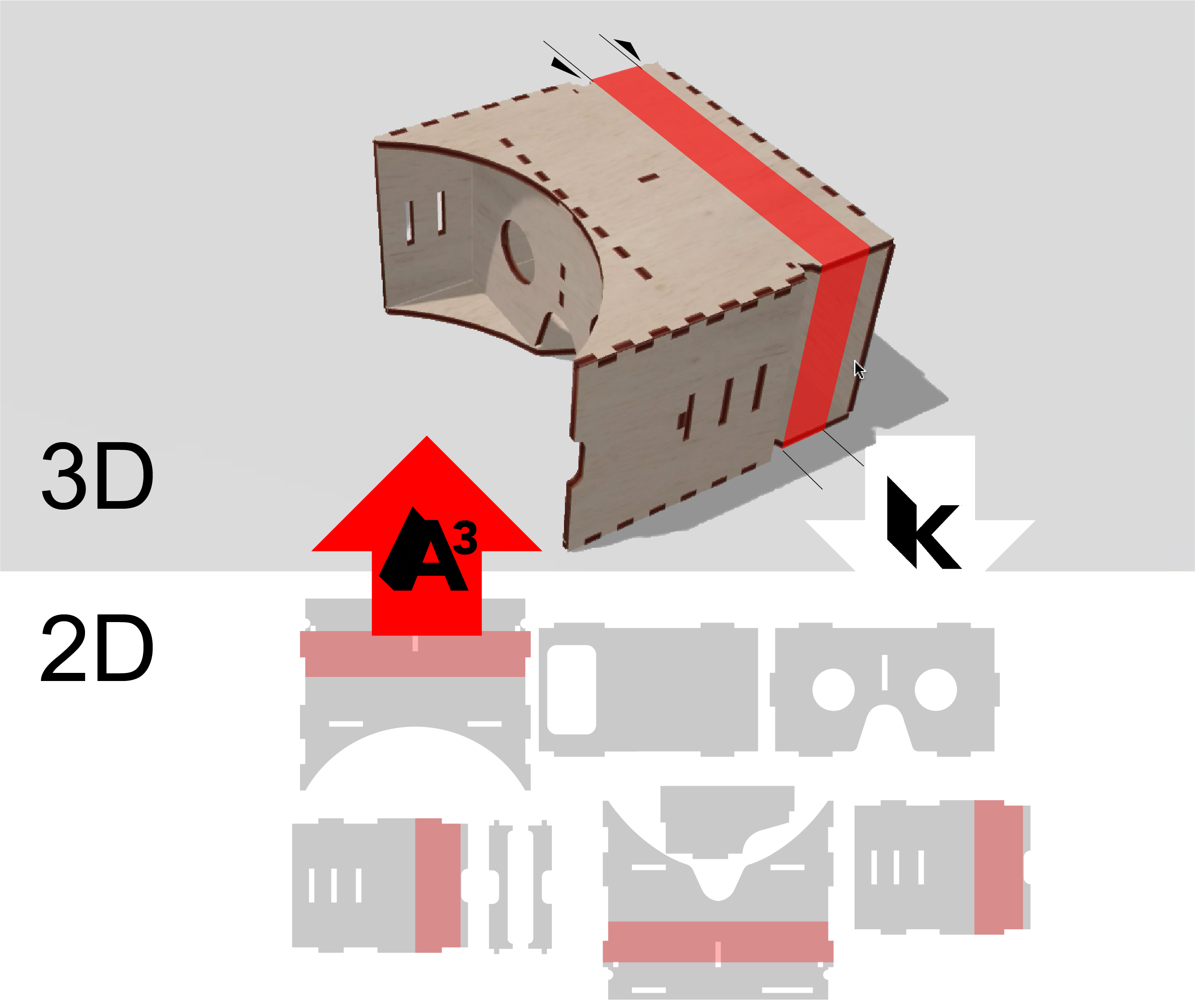
Assisting Manipulation and Grasping in Robot Teleoperation with Augmented Reality Visual Cues
Stephanie Arevalo Arboleda (Westfälische Hochschule), Franziska Rücker (Westfälische Hochschule), Tim Dierks (Westfälische Hochschule), Jens Gerken (Westfälische Hochschule)
Abstract | Tags: Full Paper | Links:
@inproceedings{2021ArboledaAssisting,
title = {Assisting Manipulation and Grasping in Robot Teleoperation with Augmented Reality Visual Cues},
author = {Stephanie Arevalo Arboleda (Westfälische Hochschule) and Franziska Rücker (Westfälische Hochschule) and Tim Dierks (Westfälische Hochschule) and Jens Gerken (Westfälische Hochschule) },
url = {https://hci.w-hs.de/, Website - HCI Group Westfälische Hochschule
http://twitter.com/doozer_jg, Twitter - Jens Gerken
https://www.youtube.com/watch?v=G_H84yliJsY&t=73s&ab_channel=HCIWestf%C3%A4lischeHochschule, YouTube - Teaser Video},
doi = {10.1145/3411764.3445398},
year = {2021},
date = {2021-05-01},
abstract = {Teleoperating industrial manipulators in co-located spaces can be challenging. Facilitating robot teleoperation by providing additional visual information about the environment and the robot affordances using augmented reality (AR), can improve task performance in manipulation and grasping. In this paper, we present two designs of augmented visual cues, that aim to enhance the visual space of the robot operator through hints about the position of the robot gripper in the workspace and in relation to the target. These visual cues aim to improve the distance perception and thus, the task performance. We evaluate both designs against a baseline in an experiment where participants teleoperate a robotic arm to perform pick-and-place tasks. Our results show performance improvements in different levels, reflecting in objective and subjective measures with trade-offs in terms of time, accuracy, and participants’ views of teleoperation. These findings show the potential of AR not only in teleoperation, but in understanding the human-robot workspace.},
keywords = {Full Paper},
pubstate = {published},
tppubtype = {inproceedings}
}
BodyStylus: Freehand On-Body Design and Fabrication of Epidermal Interfaces
Narjes Pourjafarian (Saarland Informatics Campus), Marion Koelle (Saarland Informatics Campus), Bruno Fruchard (Saarland Informatics Campus), Sahar Mavali (Saarland Informatics Campus), Konstantin Klamka (Technische Universität Dresden), Daniel Groeger (Saarland Informatics Campus), Paul Strohmeier (Saarland Informatics Campus), Jürgen Steimle (Saarland Informatics Campus)
Abstract | Tags: Full Paper | Links:
@inproceedings{2021PourjafarianBody,
title = {BodyStylus: Freehand On-Body Design and Fabrication of Epidermal Interfaces},
author = {Narjes Pourjafarian (Saarland Informatics Campus) and Marion Koelle (Saarland Informatics Campus) and Bruno Fruchard (Saarland Informatics Campus) and Sahar Mavali (Saarland Informatics Campus) and Konstantin Klamka (Technische Universität Dresden) and Daniel Groeger (Saarland Informatics Campus) and Paul Strohmeier (Saarland
Informatics Campus) and Jürgen Steimle (Saarland Informatics Campus)},
url = {https://hci.cs.uni-saarland.de/, Website - HCI Saarland University
https://www.youtube.com/watch?v=Lb7ru6AABDE&t=1s&ab_channel=EmbodiedInteraction, YouTube Video Teaser
https://www.youtube.com/watch?v=Lb7ru6AABDE&t=1s&ab_channel=EmbodiedInteraction, Youtube Video Figure},
doi = {10.1145/3411764.3445475},
year = {2021},
date = {2021-05-01},
abstract = {In traditional body-art, designs are adjusted to the body as they are applied, enabling creative improvisation and exploration. Conventional design and fabrication methods of epidermal interfaces, however, separate these steps. With BodyStylus we present the first computer-assisted approach for on-body design and fabrication of epidermal interfaces. Inspired by traditional techniques, we propose a hand-held tool that augments freehand inking with digital support: projected in-situ guidance assists creating valid on-body circuits and aesthetic ornaments that align with the human bodyscape, while pro-active switching between inking and non-inking creates error preventing constraints. We contribute BodyStylus's design rationale and interaction concept along with an interactive prototype that uses self-sintering conductive ink. Results of two focus group explorations showed that guidance was more appreciated by artists, while constraints appeared more useful to engineers, and that working on the body inspired critical reflection on the relationship between bodyscape, interaction, and designs.},
keywords = {Full Paper},
pubstate = {published},
tppubtype = {inproceedings}
}
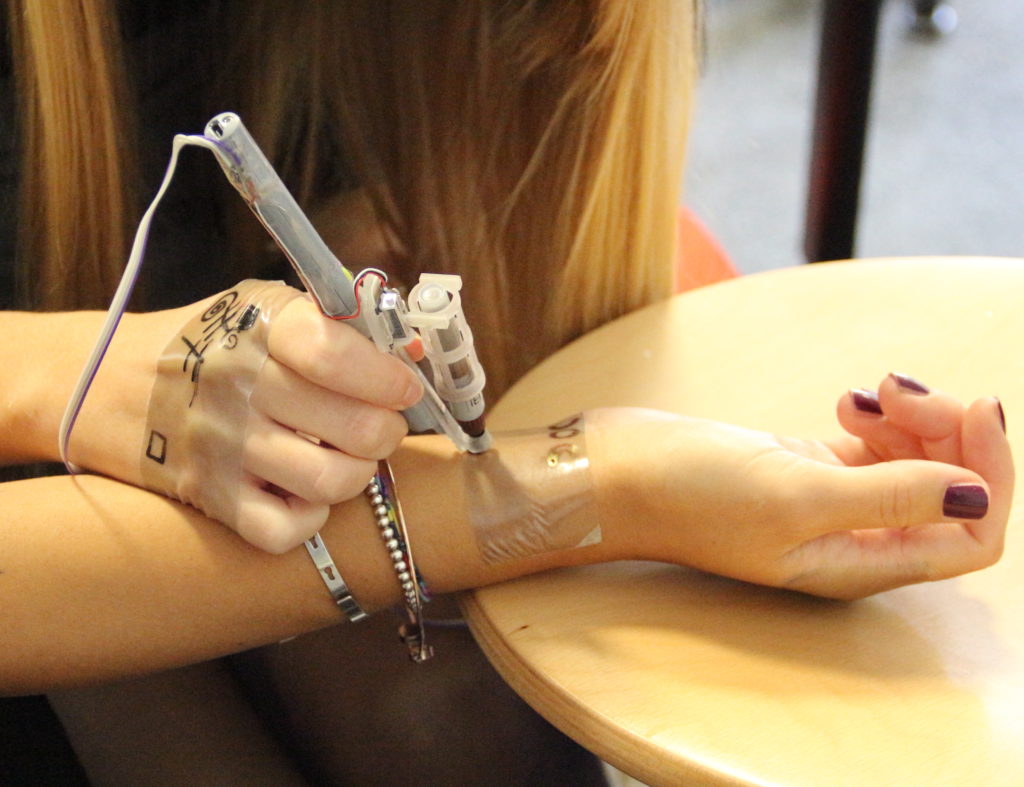
ClothTiles: Fabricating Customized Actuators on Textiles using 3D Printing and Shape-Memory Alloys
Sachith Muthukumarana (University of Auckland), Moritz Messerschmidt (University of Auckland), Denys Matthies (Technical University of Applied Sciences Lübeck), Jürgen Steimle (Saarland University), Philipp Scholl (University of Auckland), Suranga Nanayakkara (University of Auckland)
Abstract | Tags: Full Paper | Links:
@inproceedings{2021MuthukumaranaCloth,
title = {ClothTiles: Fabricating Customized Actuators on Textiles using 3D Printing and Shape-Memory Alloys},
author = {Sachith Muthukumarana (University of Auckland) and Moritz Messerschmidt (University of Auckland) and Denys Matthies (Technical University of Applied Sciences Lübeck) and Jürgen Steimle (Saarland University) and Philipp Scholl (University of Auckland) and Suranga Nanayakkara (University of Auckland)},
url = {https://hci.cs.uni-saarland.de/, Website - HCI Lab Saarland University
https://www.youtube.com/watch?v=ZFUnVONFycI, YouTube - Video Teaser},
doi = {10.1145/3411764.3445613},
year = {2021},
date = {2021-05-07},
abstract = {Emerging research has demonstrated the viability of on-textile actuation mechanisms, however, an easily customizable and versatile on-cloth actuation mechanism is yet to be explored. In this paper, we present ClothTiles along with its rapid fabrication technique that enables actuation of clothes. ClothTiles leverage flexible 3D-printing and Shape-Memory Alloys (SMAs) alongside new parametric actuation designs. We validate the concept of fabric actuation using a base element, and then systematically explore methods of aggregating, scaling, and orienting prospects for ex-tended actuation in garments. A user study demonstrated that our technique enables multiple actuation types applied across a variety of clothes. Users identified both aesthetic and functional applications of ClothTiles. We conclude with a number of insights for the Do-It-Yourself community on how to employ 3D-printing with SMAs to enable actuation on clothes.},
keywords = {Full Paper},
pubstate = {published},
tppubtype = {inproceedings}
}
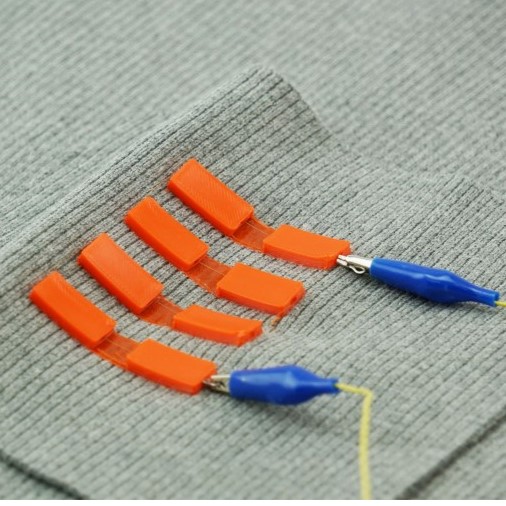
Comparison of Different Types of Augmented Reality Visualizations for Instructions
Florian Jasche (University of Siegen), Sven Hoffmann (University of Siegen), Thomas Ludwig (University of Siegen), Volker Wulf (University of Siegen)
Abstract | Tags: Full Paper | Links:
@inproceedings{2021JascheComparison,
title = {Comparison of Different Types of Augmented Reality Visualizations for Instructions},
author = {Florian Jasche (University of Siegen), Sven Hoffmann (University of Siegen), Thomas Ludwig (University of Siegen), Volker Wulf (University of Siegen)},
url = {http://cps-research.de/, Cyber-Physical Systems University of Siegen},
doi = {10.1145/3411764.3445724},
year = {2021},
date = {2021-05-01},
abstract = {Augmented Reality (AR) is increasingly being used for providing guidance and supporting troubleshooting in industrial settings. While the general application of AR has been shown to provide clear benefts regarding physical tasks, it is important to understand how different visualization types infuence user’s performance during the execution of the tasks. Previous studies evaluating AR and user’s performance compared different media types or types of AR hardware as opposed to different types of visualization for the same hardware type. This paper provides details of our comparative study in which we identifed the infuence of visualization types on the performance of complex machine set-up processes. Although our results show clear advantages to using concrete rather than abstract visualizations, we also fnd abstract visualizations coupled with videos leads to similar user performance as with concrete visualizations.},
keywords = {Full Paper},
pubstate = {published},
tppubtype = {inproceedings}
}

Coping with Messiness in Ethnography: Authority, Bias and Immersion in ethnographic Fieldwork in the non-Western World
Marios Mouratidis (University of Siegen), Sarah Rüller (University of Siegen), Konstantin Aal (University of Siegen), Nina Boulus-Rødje (Roskilde University), Shaimaa Lazem (City of Scientifc Research, Technological Applications), Anicia Peters (Namibia University of Science, Technology), Simon Holdermann (University of Cologne), Vasilis Vlachokyriakos (Newcastle University), Ann Light (University of Sussex), Dave Randall (University of Siegen), Volker Wulf (University of Siegen)
Abstract | Tags: Workshop | Links:
@inproceedings{Mouratidis2021ethnography,
title = {Coping with Messiness in Ethnography: Authority, Bias and Immersion in ethnographic Fieldwork in the non-Western World},
author = {Marios Mouratidis (University of Siegen) and Sarah Rüller (University of Siegen) and Konstantin Aal (University of Siegen) and Nina Boulus-Rødje (Roskilde University) and Shaimaa Lazem (City of Scientifc Research, Technological Applications) and Anicia Peters (Namibia University of Science and Technology), Simon Holdermann (University of Cologne) and Vasilis Vlachokyriakos (Newcastle University) and Ann Light (University of Sussex) and Dave Randall (University of Siegen) and Volker Wulf (University of Siegen)},
url = {https://www.wineme.uni-siegen.de/ (lab page)},
doi = {10.1145/3411763.3441328},
year = {2021},
date = {2021-05-07},
abstract = {Ethnography has frmly established its position in the Human-Computer Interaction (HCI) community. Many studies have benefted from following ethnographic approaches to arrive at a grounded and comprehensive understanding of the respective research context. Applying that to the non-Western world, however, comes with challenges for researchers. Aside from ethical concerns which have been addressed in the past, we want to use this workshop to foster conversations and discussions on authority, bias and immersion when conducting ethnographic feld work in the non-Western world – especially as a Western researcher. The main objective of this workshop is to exchange experiences and to identify common aspects and ways of overcoming, coping with or even embracing the messiness in ethnographic work and derive guidelines based on these discussions.},
keywords = {Workshop},
pubstate = {published},
tppubtype = {inproceedings}
}
Creepy Technology: What Is It and How Do You Measure It?
Paweł W. Woźniak (Utrecht University), Jakob Karolus (LMU Munich), Florian Lang (LMU Munich), Caroline Eckerth (LMU Munich), Johannes Schöning (University of Bremen), Yvonne Rogers (University College London, University of Bremen), Jasmin Niess (University of Bremen)
Abstract | Tags: Full Paper | Links:
@inproceedings{2021WozniakCreepy,
title = {Creepy Technology: What Is It and How Do You Measure It?},
author = {Paweł W. Woźniak (Utrecht University), Jakob Karolus (LMU Munich), Florian Lang (LMU Munich), Caroline Eckerth (LMU Munich), Johannes Schöning (University of Bremen), Yvonne Rogers (University College London, University of Bremen), Jasmin Niess (University of Bremen)},
url = {https://hci.uni-bremen.de/, Website HCI Group University of Bremen
https://twitter.com/HCIBremen, HCI Group University of Bremen
https://youtu.be/3AQVJ8rUjf0, Youtube - Video},
doi = {10.1145/3411764.3445299},
year = {2021},
date = {2021-05-01},
abstract = {Interactive technologies are getting closer to our bodies and permeate the infrastructure of our homes. While such technologies offer many benefits, they can also cause an initial feeling of unease in users. It is important for Human-Computer Interaction to manage first impressions and avoid designing technologies that appear creepy. To that end, we developed the Perceived Creepiness of Technology Scale (PCTS), which measures how creepy a technology appears to a user in an initial encounter with a new artefact. The scale was developed based on past work on creepiness and a set of ten focus groups conducted with users from diverse backgrounds. We followed a structured process of analytically developing and validating the scale. The PCTS is designed to enable designers and researchers to quickly compare interactive technologies and ensure that they do not design technologies that produce initial feelings of creepiness in users.},
keywords = {Full Paper},
pubstate = {published},
tppubtype = {inproceedings}
}
Current Practices, Challenges, and Design Implications for Collaborative AR/VR Application Development
Veronika Krauß (Fraunhofer FIT, Universität Siegen), Alexander Boden (Fraunhofer FIT, Hochschule Bonn-Rhein-Sieg), Leif Oppermann (Fraunhofer FIT), René Reiners (Fraunhofer FIT)
Abstract | Tags: Full Paper | Links:
@inproceedings{FIT2021,
title = {Current Practices, Challenges, and Design Implications for Collaborative AR/VR Application Development},
author = {Veronika Krauß (Fraunhofer FIT, Universität Siegen) and Alexander Boden (Fraunhofer FIT, Hochschule Bonn-Rhein-Sieg) and Leif Oppermann (Fraunhofer FIT) and René Reiners (Fraunhofer FIT)},
doi = {10.1145/3411764.3445335},
year = {2021},
date = {2021-05-01},
abstract = {Augmented/Virtual Reality (AR/VR) is still a fragmented space to design for due to the rapidly evolving hardware, the interdisciplinarity of teams, and a lack of standards and best practices. We interviewed 26 professional AR/VR designers and developers to shed light on their tasks, approaches, tools, and challenges. Based on their work and the artifacts they generated, we found that AR/VR application creators fulfill four roles: concept developers, interaction designers, content authors, and technical developers. One person often incorporates multiple roles and faces a variety of challenges during the design process from the initial contextual analysis to the deployment. From analysis of their tool sets, methods, and artifacts, we describe critical key challenges. Finally, we discuss the importance of prototyping for the communication in AR/VR development teams and highlight design implications for future tools to create a more usable AR/VR tool chain.},
keywords = {Full Paper},
pubstate = {published},
tppubtype = {inproceedings}
}
Cycling@CHI: Towards a Research Agenda for HCI in the Bike Lane
Gian-Luca Savino (University of Bremen), Tamara von Sawitzky (Technische Hochschule Ingolstadt), Andrii Matviienko (Technical University of Darmstadt), Miriam Sturdee (Lancaster University), Paweł W. Woźniak (Utrecht University), Markus Löchtefeld (Aalborg University), Andrew L. Kun (University of New Hampshire), Andreas Riener (Technische Hochschule Ingolstadt), Jonna Häkkilä (University of Lapland)
Abstract | Tags: Workshop | Links:
@workshop{2021SavinoCycling,
title = {Cycling@CHI: Towards a Research Agenda for HCI in the Bike Lane},
author = {Gian-Luca Savino (University of Bremen) and Tamara von Sawitzky (Technische Hochschule Ingolstadt) and Andrii Matviienko (Technical University of Darmstadt) and Miriam Sturdee (Lancaster University) and Paweł W. Woźniak (Utrecht University) and Markus Löchtefeld (Aalborg University) and Andrew L. Kun (University of New Hampshire) and Andreas Riener (Technische Hochschule Ingolstadt) and Jonna Häkkilä (University of Lapland)},
url = {https://hci.uni-bremen.de/, Website - HCI University of Bremen
https://twitter.com/HCIBremen, Twitter - HCI University of Bremen
},
doi = {10.1145/3411763.3441316},
year = {2021},
date = {2021-05-01},
abstract = {In this workshop, we will explore and discuss future developments in mobile user-interfaces for cyclists and users of similar interfaces or services. We highlight the challenge of balancing safety and ecological validity in experiments, and how novel and improved evaluation methods can improve the current situation. We aim to bring together researchers with a strong background in designing and evaluating novel user interfaces in the domain of bicycles and mobility, as well as practitioners who build consumer products in that domain. The workshop's goal is to explore novel ways of designing and evaluating user interfaces for cyclists and similar users when it comes to interacting with mobile devices and services on the ride.},
keywords = {Workshop},
pubstate = {published},
tppubtype = {workshop}
}

Decolonizing HCI Across Borders
Vikram Kamath Cannanure (Carnegie Mellon University), Dilrukshi Gamage (University of Moratuwa), Christian Sturm (Hamm-Lippstadt University of Applied Sciences), Heike Winschiers-Theophilus (Namibia University of Science, Technology), F. Maestre (Indiana University Bloomington), Naveena Karusala (University of Washington), Pedro Reynolds-Cuéllar (MIT), Neha Kumar (Georgia Tech)
Abstract | Tags: Workshop | Links:
@inproceedings{Cannanure2021Across,
title = {Decolonizing HCI Across Borders},
author = {Vikram Kamath Cannanure (Carnegie Mellon University) and Dilrukshi Gamage (University of Moratuwa) and Christian Sturm (Hamm-Lippstadt University of Applied Sciences) and Heike Winschiers-Theophilus (Namibia University of Science and Technology) and F. Maestre (Indiana University Bloomington) and Naveena Karusala (University of Washington) and Pedro Reynolds-Cuéllar (MIT) and Neha Kumar (Georgia Tech)},
doi = {10.1145/3411763.3441348},
year = {2021},
date = {2021-05-07},
abstract = {The HCI Across Borders (HCIxB) community has been growing in recent years, starting with the Development Consortium at CHI 2016 and the HCIxB Symposia at CHI 2017, 2018, and 2019. This year, we propose an HCIxB symposium that continues to foster scholarship potential of early-career HCIxB researchers across the world, particularly those from and in the Global South, engaging on the topic of decoloniality. Through this symposium, we aim to create the space for discussions that have been emerging in pockets of the HCI community but could benefit from greater attention in the interest of demarginalizing members and research areas of the community that have thus far been on the margins of HCI. We expect this virtual workshop at CHI 2021 to be the inaugural session for a series of virtual events to continue this conversation on decolonizing HCI's borders into individual subgroups.},
keywords = {Workshop},
pubstate = {published},
tppubtype = {inproceedings}
}
Designing for New Forms of Vulnerability: Exploring transformation and empowerment in times of COVID-19
David Struzek (University of Siegen, Information Systems/IT for the ageing society, Germany), Katerina Cerna University of Siegen, Information Systems/IT for the ageing society, Germany), Richard Paluch University of Siegen, Information Systems/IT for the ageing society, Germany), Sven Bittenbinder University of Siegen, Information Systems/IT for the ageing society, Germany), Claudia Müller (University of Siegen, Information Systems/IT for the ageing society, Germany), Arlind Reuter (Open Lab, Newcastle University, United Kingdom), Lydia Stamato (Department of Information Systems at the University of Maryland, Baltimore County, United States), Özge Subasi (College of Social Sciences, Humanities at Koc University, Turkey), Foad Hamidi (Department of Information Systems at the University of Maryland, Baltimore County, United States), John Vines (University of Edinburgh, United Kingdom)
Abstract | Tags: Workshop | Links:
@inproceedings{Struzek2021Vulnerability,
title = {Designing for New Forms of Vulnerability: Exploring transformation and empowerment in times of COVID-19},
author = {David Struzek (University of Siegen, Information Systems/IT for the ageing society, Germany) and Katerina Cerna University of Siegen, Information Systems/IT for the ageing society, Germany) and Richard Paluch University of Siegen, Information Systems/IT for the ageing society, Germany) and Sven Bittenbinder University of Siegen, Information Systems/IT for the ageing society, Germany), Claudia Müller (University of Siegen, Information Systems/IT for the ageing society, Germany) and Arlind Reuter (Open Lab, Newcastle University, United Kingdom) and Lydia Stamato (Department of Information Systems at the University of Maryland, Baltimore County, United States) and Özge Subasi (College of Social Sciences and Humanities at Koc University, Turkey), Foad Hamidi (Department of Information Systems at the University of Maryland, Baltimore County, United States) and John Vines (University of Edinburgh, United Kingdom)},
url = {https://italg.wineme.uni-siegen.de/ (lab page)},
doi = {10.1145/3411763.3441339},
year = {2021},
date = {2021-05-07},
abstract = {Our workshop will concentrate on vulnerability of specific social groups due to various reasons, including COVID-19, and the potential for technology design to result in empowerment. We want to address issues of what new forms of vulnerabilities emerge and how we can design digital environments in a way that acknowledges vulnerability but also has the potential to empower people in ways that are meaningful for them. When planning the workshop, we will also reflect on social situations that can result in vulnerabilities for participants. Therefore, we will ensure that interested participants will experience low barriers to participation include a variety of people with different backgrounds and ensure that interaction happens based on equality principles and in an atmosphere of solidarity. Participants can exchange ideas and thoughts without worrying about being exposed to biased assumptions. The workshop will allow for non-hierarchical and cooperative discussion and collaboration through interactive online exercises, resulting in a collaboratively developed zine. Finally, the social sustainability of the workshop will be ensured through a website, mailing lists, joint publications and continuous contact.},
keywords = {Workshop},
pubstate = {published},
tppubtype = {inproceedings}
}
Effects of Semantic Segmentation Visualization on Trust, Situation Awareness, and Cognitive Load in Highly Automated Vehicles
Mark Colley (Institute of Media Informatics, Ulm University), Benjamin Eder (Institute of Media Informatics, Ulm University), Jan Ole Rixen (Institute of Media Informatics, Ulm University), Enrico Rukzio (Institute of Media Informatics, Ulm University)
Abstract | Tags: Full Paper | Links:
@inproceedings{2021ColleyEffects,
title = {Effects of Semantic Segmentation Visualization on Trust, Situation Awareness, and Cognitive Load in Highly Automated Vehicles},
author = {Mark Colley (Institute of Media Informatics, Ulm University) and Benjamin Eder (Institute of Media Informatics, Ulm University) and Jan Ole Rixen (Institute of Media Informatics, Ulm University) and Enrico Rukzio (Institute of Media Informatics, Ulm University)},
url = {https://www.uni-ulm.de/en/in/mi/hci/, Website - HCI Group Ulm University
https://twitter.com/mi_uulm, Twitter - HCI Group Ulm University},
doi = {10.1145/3411764.3445351},
year = {2021},
date = {2021-05-01},
abstract = {Autonomous vehicles could improve mobility, safety, and inclusion in traffic. While this technology seems within reach, its successful introduction depends on the intended user's acceptance. A substantial factor for this acceptance is trust in the autonomous vehicle's capabilities. Visualizing internal information processed by an autonomous vehicle could calibrate this trust by enabling the perception of the vehicle's detection capabilities (and its failures) while only inducing a low cognitive load. Additionally, the simultaneously raised situation awareness could benefit potential take-overs. We report the results of two comparative online studies on visualizing semantic segmentation information for the human user of autonomous vehicles. Effects on trust, cognitive load, and situation awareness were measured using a simulation (N=32) and state-of-the-art panoptic segmentation on a pre-recorded real-world video (N=41). Results show that the visualization using Augmented Reality increases situation awareness while remaining low cognitive load."},
keywords = {Full Paper},
pubstate = {published},
tppubtype = {inproceedings}
}
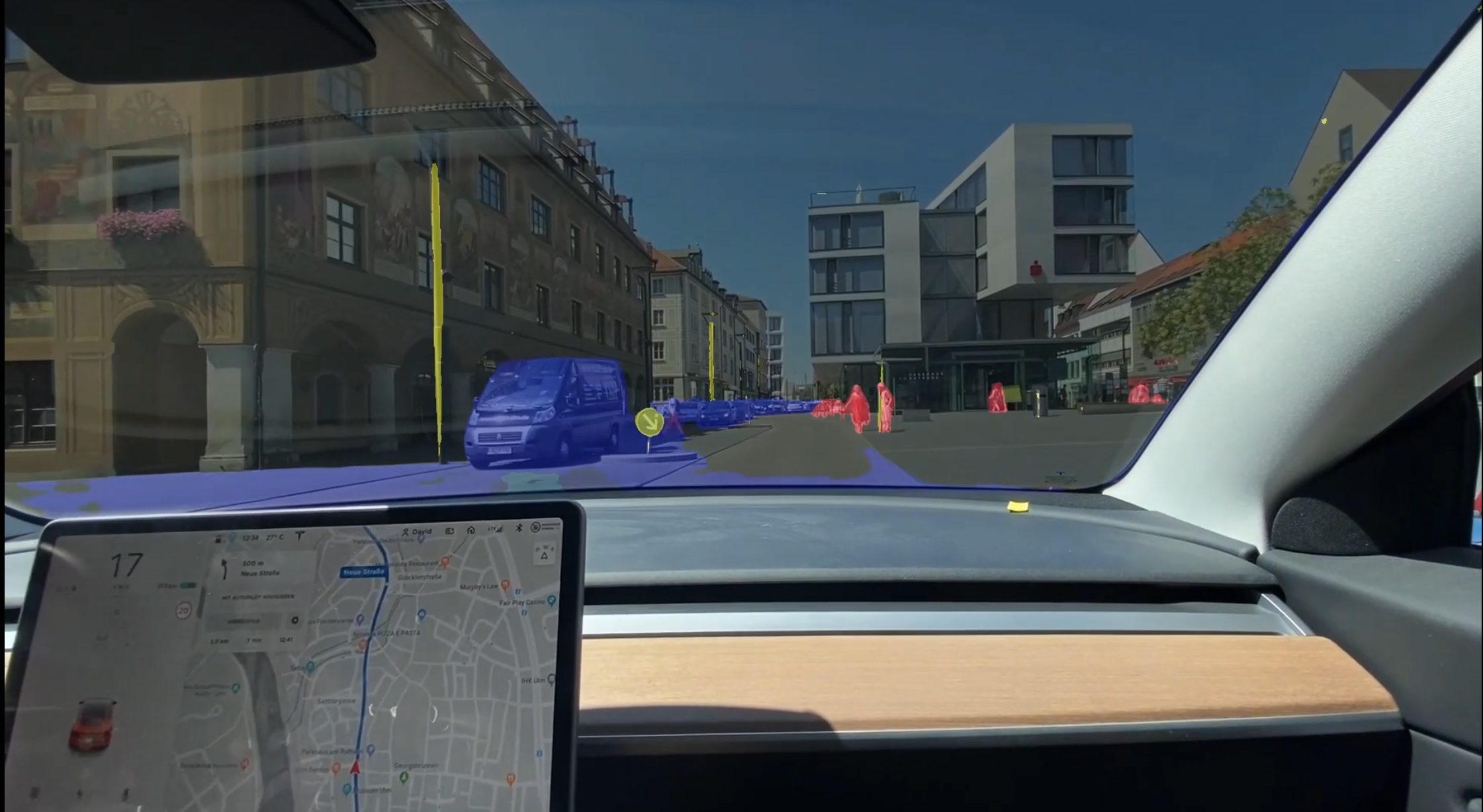
Eliciting and Analysing Users’ Envisioned Dialogues with Perfect Voice Assistants
Sarah Theres Völkel (LMU Munich), Daniel Buschek (University of Bayreuth), Malin Eiband (LMU Munich), Benjamin R. Cowan (University College Dublin), Heinrich Hussmann (LMU Munich)
Abstract | Tags: Full Paper | Links:
@inproceedings{2021VoelkelEliciting,
title = {Eliciting and Analysing Users’ Envisioned Dialogues with Perfect Voice Assistants},
author = {Sarah Theres Völkel (LMU Munich), Daniel Buschek (University of Bayreuth), Malin Eiband (LMU Munich), Benjamin R. Cowan (University College Dublin), Heinrich Hussmann (LMU Munich)},
url = {https://www.medien.ifi.lmu.de, Media Informatics Group LMU Munich
https://youtu.be/zRRnArDdS3k, Youtube Video},
doi = {10.1145/3411764.3445536},
year = {2021},
date = {2021-05-01},
abstract = {We present a dialogue elicitation study to assess how users envision conversations with a perfect voice assistant (VA). In an online survey, N=205 participants were prompted with everyday scenarios, and wrote the lines of both user and VA in dialogues that they imagined as perfect. We analysed the dialogues with text analytics and qualitative analysis, including number of words and turns, social aspects of conversation, implied VA capabilities, and the influence of user personality. The majority envisioned dialogues with a VA that is interactive and not purely functional; it is smart, proactive, and has knowledge about the user. Attitudes diverged regarding the assistant's role as well as it expressing humour and opinions. An exploratory analysis suggested a relationship with personality for these aspects, but correlations were low overall. We discuss implications for research and design of future VAs, underlining the vision of enabling conversational UIs, rather than single command "Q&As". },
keywords = {Full Paper},
pubstate = {published},
tppubtype = {inproceedings}
}
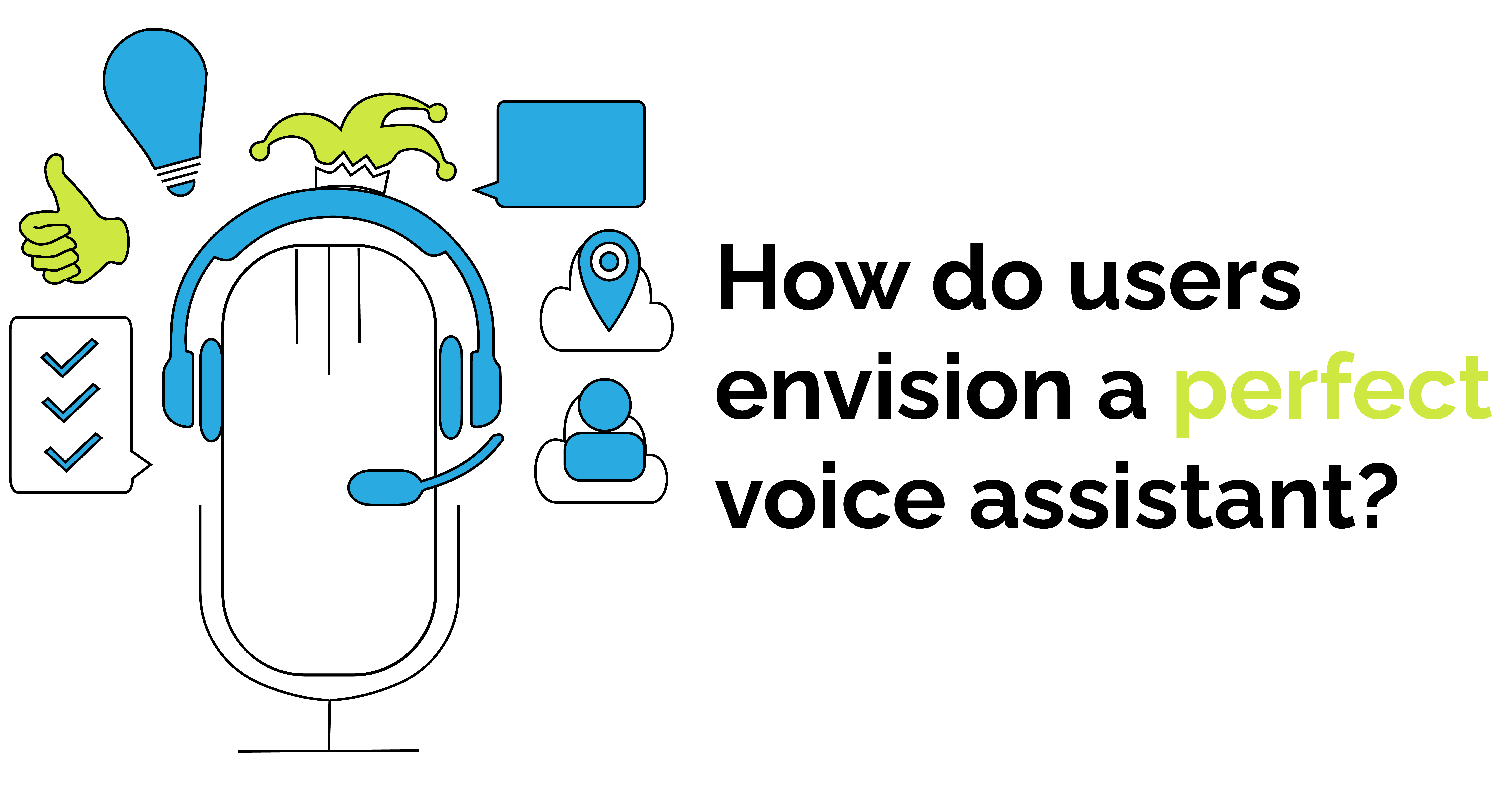
EMPiano: Electromyographic Pitch Control on the Piano Keyboard
Annika Kilian (LMU Munich), Jakob Karolus (LMU Munich), Thomas Kosch (TU Darmstadt), Albrecht Schmidt (LMU Munich), Paweł W. Woźniak (Utrecht University)
Abstract | Tags: Interactivity/Demonstration | Links:
@inproceedings{2021KilianEMPiano,
title = {EMPiano: Electromyographic Pitch Control on the Piano Keyboard},
author = {Annika Kilian (LMU Munich) and Jakob Karolus (LMU Munich) and Thomas Kosch (TU Darmstadt) and Albrecht Schmidt (LMU Munich) and Paweł W. Woźniak (Utrecht University)},
url = {https://www.um.informatik.uni-muenchen.de/, Website - Human-Centered Ubiquitous Media
},
doi = {10.1145/3411763.3451556},
year = {2021},
date = {2021-05-01},
abstract = {The piano keyboard offers a significant range and polyphony for well-trained pianists. Yet, apart from dynamics, the piano is incapable of translating expressive movements such as vibrato onto the played note. Adding sound effects requires additional modalities. A pitch wheel can be found on the side of most electric pianos. To add a vibrato or pitch bend, the pianist needs to actively operate the pitch wheel with their hand, which requires cognitive effort and may disrupt play. In this work, we present EMPiano, a system that allows pianists to incorporate a soft pitch vibrato into their play seamlessly. Vibrato can be triggered through muscle activity and is recognized via electromyography. This allows EMPiano to integrate into piano play. Our system offers new interaction opportunities with the piano to increase the player's potential for expressive play. In this paper, we contribute the open-source implementation and the workflow behind EMPiano.},
keywords = {Interactivity/Demonstration},
pubstate = {published},
tppubtype = {inproceedings}
}
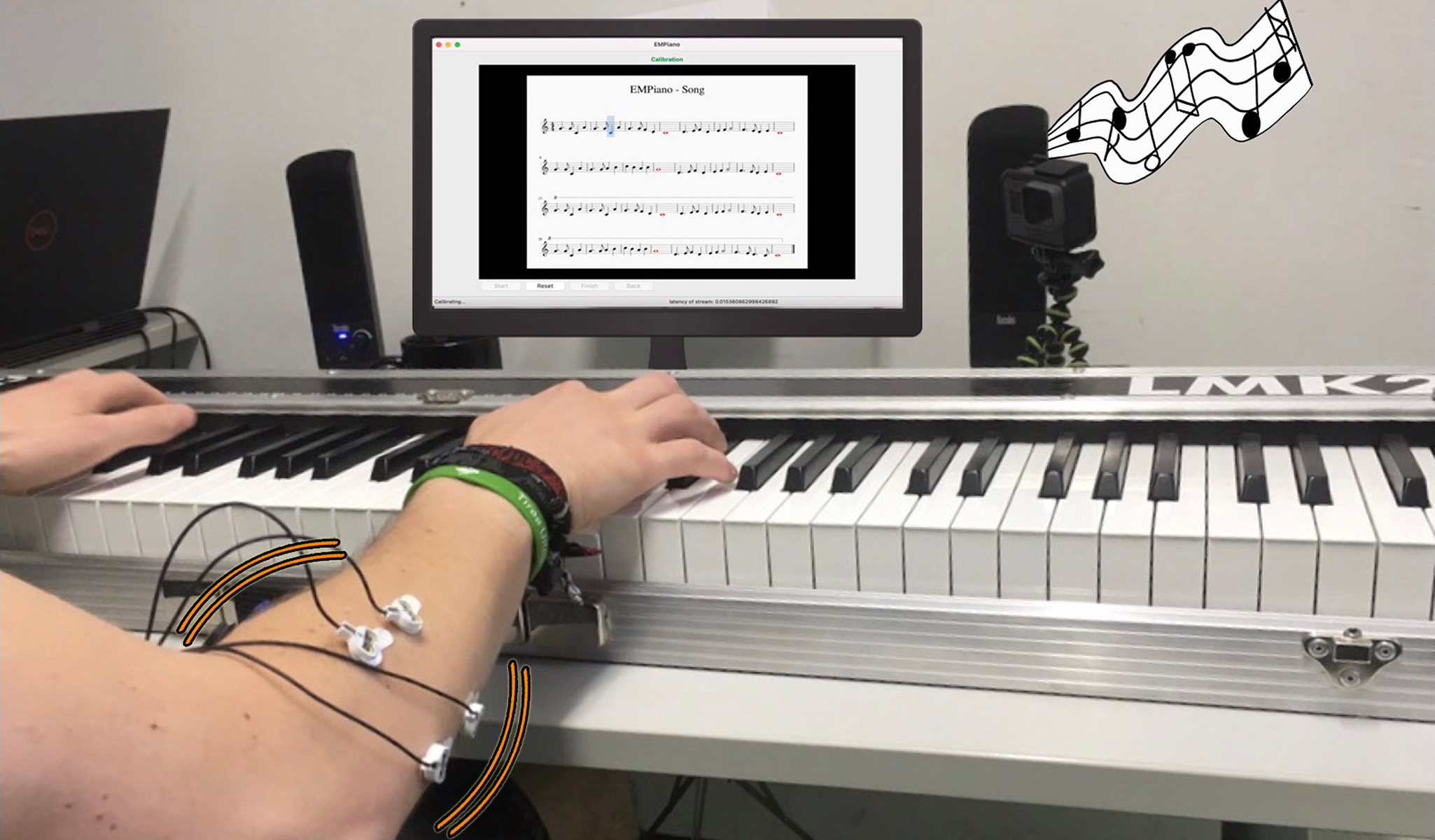
Ethical User Interfaces: Exploring the Effects of Dark Patterns on Facebook
Thomas Mildner (University of Bremen), Gian-Luca Savino (Human-Computer Interaction)
Abstract | Tags: Late Breaking Work | Links:
@inproceedings{2021MildnerEthical,
title = {Ethical User Interfaces: Exploring the Effects of Dark Patterns on Facebook},
author = {Thomas Mildner (University of Bremen) and Gian-Luca Savino (Human-Computer Interaction) },
url = {https://www.uni-bremen.de/dmlab, Website - DMLab University of Bremen
https://twitter.com/thmsmldnr, Twitter - Thomas Mildner
https://youtu.be/E_bzMOuQdgQ, YouTube - Teaser Video},
doi = {10.1145/3411763.3451659},
year = {2021},
date = {2021-05-01},
abstract = {Many researchers have been concerned with whether social media has a negative impact on the well-being of their audience. With the popularity of social networking sites (SNS) steadily increasing, psychological and social sciences have shown great interest in their effects and consequences on humans. In this work, we investigate Facebook using the tools of HCI to find connections between interface features and the concerns raised by these do- mains. Using an empirical design analysis, we identify interface interferences impacting users' online privacy. Through a subsequent survey (? = 116), we find usage behaviour changes due to increased privacy concerns and report individual cases of addiction and mental health issues. These observations are the results of a rapidly changing SNS creating a gap of understanding between users' interactions with the platform and future consequences. We explore how HCI can help close this gap and work towards more ethical user interfaces in the future.},
keywords = {Late Breaking Work},
pubstate = {published},
tppubtype = {inproceedings}
}

Evaluating User Experiences in Mixed Reality
Dmitry Alexandrovsky (University of Bremen, Digital Media Lab), Susanne Putze (University of Bremen, Digital Media Lab), Valentin Schwind (Frankfurt University of Applied Sciences), Elisa D Mekler (Aalto University), Jan David Smeddinck (Newcastle University), Denise Kahl (German Research Center for Artificial Intelligence (DFKI), Saarland Informatics Campus), Antonio Krüger (DFKI, Saarland Informatics Campus), Rainer Malaka (University of Bremen, Digital Media Lab)
Abstract | Tags: Workshop | Links:
@inproceedings{2021AlexandrovskyEvaluating,
title = {Evaluating User Experiences in Mixed Reality},
author = {Dmitry Alexandrovsky (University of Bremen, Digital Media Lab) and Susanne Putze (University of Bremen, Digital Media Lab) and Valentin Schwind (Frankfurt University of Applied Sciences) and Elisa D Mekler (Aalto University) and Jan David Smeddinck (Newcastle University) and Denise Kahl (German Research Center for Artificial Intelligence (DFKI), Saarland Informatics Campus) and Antonio Krüger (DFKI, Saarland Informatics Campus) and Rainer Malaka (University of Bremen, Digital Media Lab)},
url = {http://dm.tzi.de/, Website - Digital Media Lab
https://twitter.com/dmlabbremen, Twitter - Digital Media Lab
https://sputze.github.io/evaluating-mr/, Workshop Website},
doi = {10.1145/3411763.3441337},
year = {2021},
date = {2021-05-07},
abstract = {Measuring user experience in MR (i.e., AR/VR) user studies is essential. Researchers apply a wide range of measuring methods using objective (e.g., biosignals, time logging), behavioral (e.g., gaze direction, movement amplitude), and subjective (e.g., standardized questionnaires) metrics. Many of these measurement instruments were adapted from use-cases outside ofvMR, but have not been validated for usage in MR experiments. However, researchers are faced with various challenges and design alternatives when measuring immersive experiences. These challenges become even more diverse when running out-of-the lab studies. Measurement methods of VR experience received recently much attention. For example, research has started embedding questionnaires in the VE for various applications, as this allows users to stay closer to the ongoing experience while filling out the survey. However, there is a diversity in the interaction methods and practices on how the assessment procedure is conducted. This diversity in methods underlines a missing shared agreement of standardized measurement tools for VR experiences. AR research strongly orients on the research methods from VR, e.g., using the same type of subjective questionnaires. However, there are some crucial technical differences that require deliberate considerations during the evaluation. This workshop at CHI 2021 provides a foundation to exchange expertise and to address challenges as well as opportunities of research methods in MR user studies. By this, our workshop launches a discussion of research methods that should lead to standardizing assessment methods in MR user studies. The outcomes of the workshop will be aggregated into a collective special issue journal article.},
keywords = {Workshop},
pubstate = {published},
tppubtype = {inproceedings}
}
Evaluation in Human-Computer Interaction – Beyond Lab Studies
Albrecht Schmidt (LMU München), Florian Alt (Bundeswehr University Munich), Ville Mäkelä (Bundeswehr University Munich)
Abstract | Tags: Course | Links:
@inproceedings{Schmidt2021Beyond,
title = {Evaluation in Human-Computer Interaction – Beyond Lab Studies},
author = {Albrecht Schmidt (LMU München) and Florian Alt (Bundeswehr University Munich) and Ville Mäkelä (Bundeswehr University Munich)},
url = {https://www.unibw.de/usable-security-and-privacy-en (lab page)},
doi = {10.1145/3411763.3445022},
year = {2021},
date = {2021-05-07},
publisher = {ACM},
abstract = {Many research contributions in human-computer interaction are based on user studies in the lab. However, lab studies are not always possible, and they may come with significant challenges and limitations. In this course, we take a broader look at different approaches to doing research. We present a set of evaluation methods and research contributions that do not rely on user studies in labs. The discussion focuses on research approaches, data collection methods, and tools that can be conducted without direct interaction between the researchers and the participants.},
keywords = {Course},
pubstate = {published},
tppubtype = {inproceedings}
}
Everyday Proxy Objects for Virtual Reality
Florian Daiber (DFKI), Donald Degraen (DFKI), André Zenner (DFKI), Tanja Döring (University of Bremen), Frank Steinicke (Universität Hamburg), Oscar Javier Ariza Núñez (Universität Hamburg), Adalberto L. Simeone (KU Leuven)
Abstract | Tags: Workshop | Links:
@inproceedings{2021DaiberEveryday,
title = {Everyday Proxy Objects for Virtual Reality},
author = {Florian Daiber (DFKI) and Donald Degraen (DFKI) and André Zenner (DFKI) and Tanja Döring (University of Bremen) and Frank Steinicke (Universität Hamburg) and Oscar Javier Ariza Núñez (Universität Hamburg) and Adalberto L. Simeone (KU Leuven)},
url = {https://umtl.cs.uni-saarland.de/, Website - Ubiquitous Media Technology Lab
https://twitter.com/umtl, Twitter - Ubiquitous Media Technology Lab
http://epo4vr.dfki.de/, Workshop Website},
doi = {10.1145/3411763.3441343},
year = {2021},
date = {2021-05-01},
abstract = {Immersive virtual experiences are becoming ubiquitous in our daily lives. Besides visual and auditory feedback, other senses like haptics, smell and taste can enhance immersion in virtual environments. Most solutions presented in the past require specialized hardware to provide appropriate feedback. To mitigate this need, researchers conceptualized approaches leveraging everyday physical objects as proxies instead. Transferring these approaches to varying physical environments and conditions, however, poses significant challenges to a variety of disciplines such as HCI, VR, haptics, tracking, perceptual science, design, etc. This workshop will explore the integration of everyday items for multi-sensory feedback in virtual experiences and sets course for respective future research endeavors. Since the community still seems to lack a cohesive agenda for advancing this domain, the goal of this workshop is to bring together individuals interested in everyday proxy objects to review past work, build a unifying research agenda, share ongoing work, and encourage collaboration.},
keywords = {Workshop},
pubstate = {published},
tppubtype = {inproceedings}
}
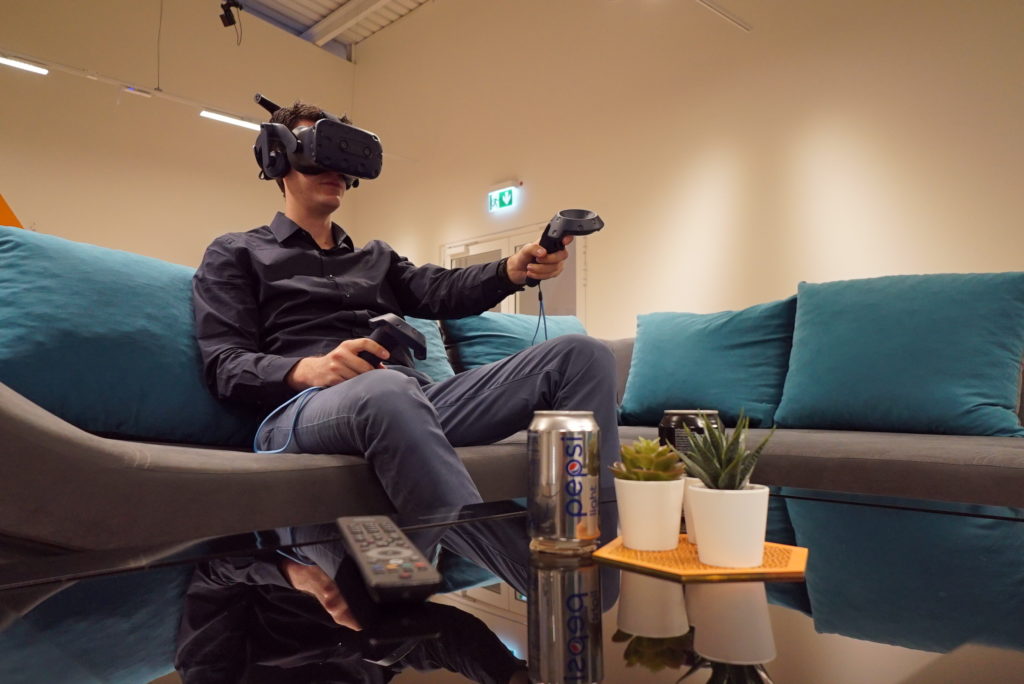
Exploring Augmented Visual Alterations in Interpersonal Communication
Jan Ole Rixen (Ulm University), Mark Colley (Ulm University), Yannick Etzel (Ulm University), Enrico Rukzio (Ulm University), Jan Gugenheimer (Télécom Paris)
Abstract | Tags: Full Paper | Links:
@inproceedings{2021RixenExploring,
title = {Exploring Augmented Visual Alterations in Interpersonal Communication},
author = {Jan Ole Rixen (Ulm University) and Mark Colley (Ulm University) and Yannick Etzel (Ulm University) and Enrico Rukzio (Ulm University) and Jan Gugenheimer (Télécom Paris)},
url = {https://www.uni-ulm.de/en/in/mi/hci/, Website - HCI Ulm University
https://twitter.com/mi_uulm, Twitter - HCI Ulm University},
doi = {10.1145/3411764.3445597},
year = {2021},
date = {2021-05-01},
abstract = {Augmented Reality (AR) glasses equip users with the tools to modify the visual appearance of their surrounding environment. This might severely impact interpersonal communication, as the conversational partners will no longer share the same visual perception of reality. Grounded in color-in-context theory, we present a potential
AR application scenario in which users can modify the color of the environment to achieve subconscious benefits. In a consecutive online survey (N=64), we measured the user’s comfort, acceptance of altering and being altered, and how it is impacted by being able to perceive or not perceive the alteration. We identified significant
differences depending on (1) who or what is the target of the alteration, (2) which body part is altered, and (3) which relationship the conversational partners share. In light of our quantitative and qualitative findings, we discuss ethical and practical implications for future devices and applications that employ visual alterations.},
keywords = {Full Paper},
pubstate = {published},
tppubtype = {inproceedings}
}
AR application scenario in which users can modify the color of the environment to achieve subconscious benefits. In a consecutive online survey (N=64), we measured the user’s comfort, acceptance of altering and being altered, and how it is impacted by being able to perceive or not perceive the alteration. We identified significant
differences depending on (1) who or what is the target of the alteration, (2) which body part is altered, and (3) which relationship the conversational partners share. In light of our quantitative and qualitative findings, we discuss ethical and practical implications for future devices and applications that employ visual alterations.
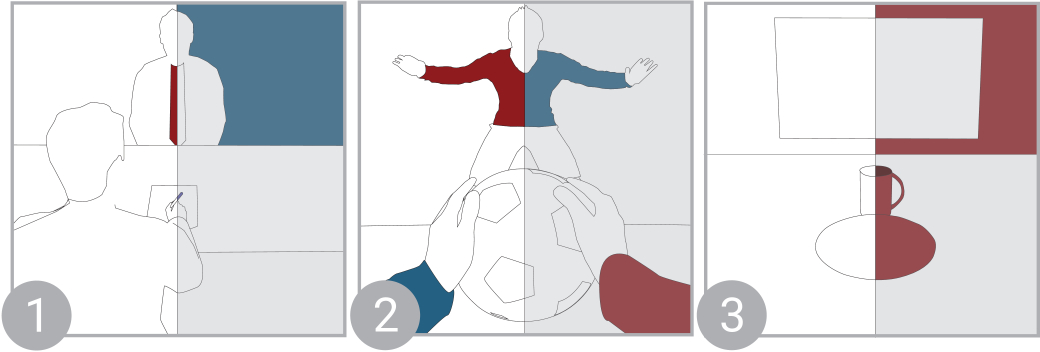
Eyecam: Revealing Relations Between Humans and Sensing Devices Through an Anthropomorphic Webcam
Marc Teyssier (Saarland University), Marion Koelle (Saarland University), Paul Strohmeier (Saarland University), Bruno Fruchard (Saarland University), Jürgen Steimle (Saarland University)
Abstract | Tags: Full Paper | Links:
@inproceedings{2021TeyssierEyecam,
title = {Eyecam: Revealing Relations Between Humans and Sensing Devices Through an Anthropomorphic Webcam},
author = {Marc Teyssier (Saarland University) and Marion Koelle (Saarland University) and Paul Strohmeier (Saarland University) and Bruno Fruchard (Saarland University) and Jürgen Steimle (Saarland University)},
url = {https://hci.cs.uni-saarland.de/, Website - HCI Lab Saarland University
https://www.youtube.com/watch?v=JMxr8Nq-w_w, YouTube - Video Figure},
doi = {10.1145/1122445.1122456},
year = {2021},
date = {2021-05-07},
abstract = {We routinely surround ourselves with sensing devices. We get accustomed to them, appreciate their benefits, and even create affective bonds and might neglect the implications they might have for our daily life. By presenting EyeCam, an anthropomorphic webcam mimicking a human eye, we challenge conventional relationships with ubiquitous sensing devices and call to re-think how these look and act. Inspired by critical design, EyeCam is an exaggeration of a familiar sensing device which allows for critical reflections on its perceived functionalities and its impact on human-human and human-device relations. We identify 5 different roles EyeCam can take: Mediator, Observer, Mirror, Feature, and Agent. Contributing design fictions and thinking prompts, we allow for articulation on privacy awareness and intrusion, affect in mediated communication, agency and self-perception along with speculation on potential futures. We envision this work to contribute to a bold and responsible design of ubiquitous sensing devices.},
keywords = {Full Paper},
pubstate = {published},
tppubtype = {inproceedings}
}
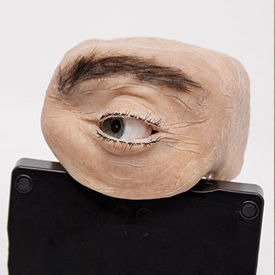
Fake Moods: Can Users Trick an Emotion-Aware VoiceBot?
Yong Ma (LMU Munich), Heiko Drewes (LMU Munich), Andreas Butz (LMU Munich)
Abstract | Tags: Late Breaking Work | Links:
@inproceedings{2021MaFake,
title = {Fake Moods: Can Users Trick an Emotion-Aware VoiceBot?},
author = {Yong Ma (LMU Munich) and Heiko Drewes (LMU Munich) and Andreas Butz (LMU Munich)},
url = {https://www.medien.ifi.lmu.de
},
doi = {10.1145/3411763.3451744 },
year = {2021},
date = {2021-05-01},
abstract = {The ability to deal properly with emotion could be a critical feature of future VoiceBots. Humans might even choose to use fake emotions, e.g., sound angry to emphasize what they are saying or sound nice to get what they want. However, it is unclear whether current emotion detection methods detect such acted emotions properly, or rather the true emotion of the speaker. We asked a small number of participants (26) to mimic five basic emotions and used an open source emotion-in-voice detector to provide feedback on whether their acted emotion was recognized as intended. We found that it was difficult for participants to mimic all five emotions and that certain emotions were easier to mimic than others. However, it remains unclear whether this is due to the fact that emotion was only acted or due to the insufficiency of the detection software. As an intended side effect, we collected a small corpus of labeled data for acted emotion in speech, which we plan to extend and eventually use as training data for our own emotion detection. We present the study setup and discuss some insights on our results.},
keywords = {Late Breaking Work},
pubstate = {published},
tppubtype = {inproceedings}
}
Fastforce: Real-Time Reinforcement of Laser-Cut Structures
Muhammad Abdullah (Hasso Plattner Institute), Martin Taraz (Hasso Plattner Institute), Yannis Kommana (Hasso Plattner Institute), Shohei Katakura (Hasso Plattner Institute), Robert Kovacs (Hasso Plattner Institute), Jotaro Shigeyama (Hasso Plattner Institute), Thijs Roumen (Hasso Plattner Institute), Patrick Baudisch (Hasso Plattner Institute)
Abstract | Tags: Full Paper | Links:
@inproceedings{2021AbdullahFast,
title = {Fastforce: Real-Time Reinforcement of Laser-Cut Structures},
author = {Muhammad Abdullah (Hasso Plattner Institute) and Martin Taraz (Hasso Plattner Institute) and Yannis Kommana (Hasso Plattner Institute) and Shohei Katakura (Hasso Plattner Institute) and Robert Kovacs (Hasso Plattner Institute) and Jotaro Shigeyama (Hasso Plattner Institute) and Thijs Roumen (Hasso Plattner Institute) and Patrick Baudisch (Hasso Plattner Institute)},
url = {https://www.hpi.de/baudisch/, Website - HCI HPI
https://www.youtube.com/channel/UC74ZNPu98FIn8Wn3JNyTIVQ, YouTube - HCI HPI
https://www.youtube.com/watch?v=oMBZPJQuwBQ, YouTube - Video},
doi = {10.1145/3411764.3445466},
year = {2021},
date = {2021-05-01},
abstract = {We present fastForce, a software tool that detects structural flaws in laser cut 3D models and fixes them by introducing additional plates into the model, thereby making models up to 52x stronger. By focusing on a specific type of structural issue, i.e., poorly connected sub-structures in closed box structures, fastForce achieves real-time performance (106x faster than finite element analysis, in the specific case of the wheelbarrow from Figure 1). This allows fastForce to fix structural issues continuously in the background, while users stay focused on editing their models and without ever becoming aware of any structural issues. In our study, six of seven participants inadvertently introduced severe structural flaws into the guitar stands they designed. Similarly, we found 286 of 402 relevant models in the kyub [1] model library to contain such flaws. We integrated fastForce into a 3D editor for lasercutting (kyub) and found that even with high plate counts fastForce achieves real-time performance.},
keywords = {Full Paper},
pubstate = {published},
tppubtype = {inproceedings}
}
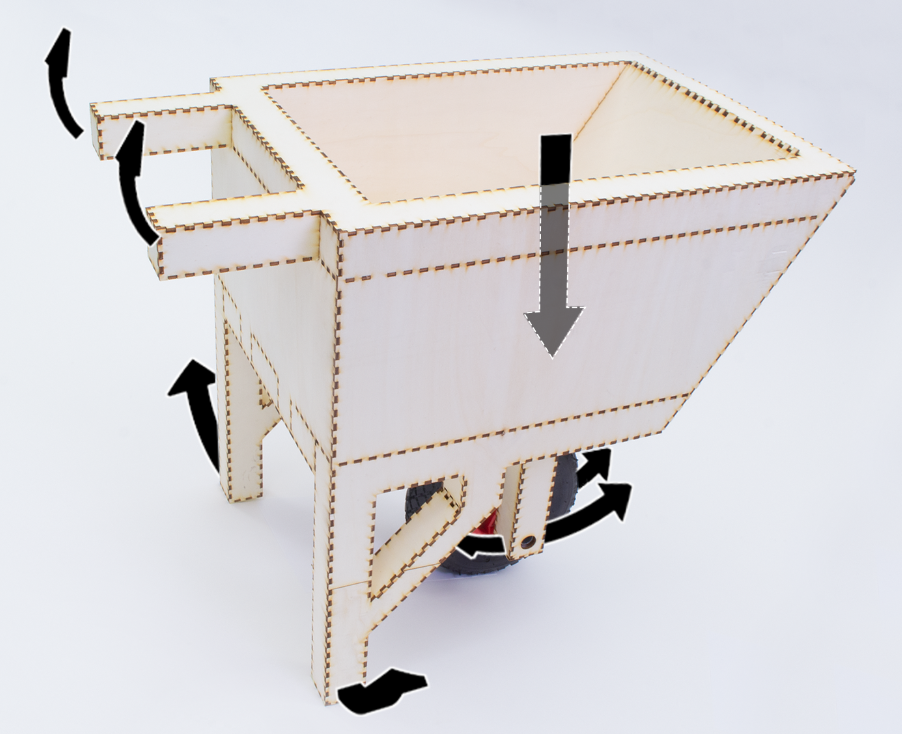
Feels like Team Spirit: Biometric and Strategic Interdependence in Asymmetric Multiplayer VR Games
Sukran Karaosmanoglu (Universität Hamburg), Katja Rogers (University of Waterloo), Dennis Wolf (Ulm University), Enrico Rukzio (Ulm University), Frank Steinicke (Universität Hamburg), Lennart E. Nacke (University of Waterloo)
Abstract | Tags: Full Paper | Links:
@inproceedings{2021KaraosmanogluFeels,
title = {Feels like Team Spirit: Biometric and Strategic Interdependence in Asymmetric Multiplayer VR Games},
author = {Sukran Karaosmanoglu (Universität Hamburg) and Katja Rogers (University of Waterloo) and Dennis Wolf (Ulm University) and Enrico Rukzio (Ulm University) and Frank Steinicke (Universität Hamburg) and Lennart E. Nacke (University of Waterloo)},
url = {https://www.inf.uni-hamburg.de/en/inst/ab/hci.html, Website - HCI Universität Hamburg
https://twitter.com/uhhhci, Twitter - HCI Universität Hamburg},
doi = {10.1145/3411764.3445492},
year = {2021},
date = {2021-05-01},
abstract = {Virtual reality (VR) multiplayer games increasingly use asymmetry (e.g., differences in a person’s capability or the user interface) and resulting interdependence between players to create engagement even when one player has no access to a head-mounted display (HMD). Previous work shows this enhances player experience (PX). Until now, it remains unclear whether and how an asymmetric game design with interdependences creates comparably enjoyable PX for both an HMD and a non-HMD player. In this work, we designed and implemented an asymmetric VR game (different in its user interface) with two types of interdependence: strategic (difference in game information/player capability) and biometric (difference in player’s biometric influence). Our mixed-methods user study (N=30) shows that asymmetries positively impact PX for both player roles, that interdependence strongly affects players’ perception of agency, and that biometric feedback---while subjective---is a valuable game mechanic.},
keywords = {Full Paper},
pubstate = {published},
tppubtype = {inproceedings}
}

Fighting Fires and Powering Steam Locomotives: Distribution of Control and Its Role in Social Interaction at Tangible Interactive Museum Exhibits
Loraine Clarke, Eva Hornecker, Ian Ruthven
Abstract | Tags: Full Paper | Links:
@inproceedings{Clarke2021Fires,
title = {Fighting Fires and Powering Steam Locomotives: Distribution of Control and Its Role in Social Interaction at Tangible Interactive Museum Exhibits},
author = { Loraine Clarke and Eva Hornecker and Ian Ruthven},
doi = {10.1145/3411764.3445534},
isbn = {9781450380966},
year = {2021},
date = {2021-01-01},
booktitle = {Proceedings of the 2021 CHI Conference on Human Factors in Computing Systems},
publisher = {Association for Computing Machinery},
address = {Yokohama, Japan},
series = {CHI '21},
abstract = {We present a video-analysis study of museum visitors’ interactions at two tangible interactive exhibits in a transport museum. Our focus is on groups’ social and shared interactions, in particular how exhibit setup and structure influence collaboration patterns. Behaviors at the exhibits included individuals focusing beyond their personal activity towards companions’ interaction, adults participating via physical interaction, and visitors taking opportunities to interact when companions moved between sections of the exhibit or stepped back from interaction. We demonstrate how exhibits’ physical configuration and interactive control engendered behavioral patterns. Systematic analysis reveals how different configurations (concerning physical-spatial hardware and interactive software) distribute control differently amongst visitors. We present four mechanisms for how control can be distributed at an interactive installation: functional, temporal, physical and indirect verbal. In summary, our work explores how mechanisms that distribute control influence patterns of shared interaction with the exhibits and social interaction between museum visitor companions.},
keywords = {Full Paper},
pubstate = {published},
tppubtype = {inproceedings}
}
From Detectables to Inspectables: Understanding Qualitative Analysis of Audiovisual Data
Krishna Subramanian (RWTH Aachen University), Johannes Maas (RWTH Aachen University), Jan Borchers (RWTH Aachen University), and Jim Hollan (University of California, San Diego)
Abstract | Tags: Full Paper, Honorable Mention | Links:
@inproceedings{Subramanian2021detectables,
title = {From Detectables to Inspectables: Understanding Qualitative Analysis of Audiovisual Data},
author = {Krishna Subramanian (RWTH Aachen University) and Johannes Maas (RWTH Aachen University) and Jan Borchers (RWTH Aachen University) and and Jim Hollan (University of California, San Diego)},
url = {https://hci.rwth-aachen.de (lab page)
https://www.youtube.com/watch?v=YJw2gMJ8cSY (teaser)},
doi = {10.1145/3411764.3445458},
year = {2021},
date = {2021-05-07},
publisher = {ACM},
abstract = {Audiovisual recordings of user studies and interviews provide important data in qualitative HCI research. Even when a textual transcription is available, researchers frequently turn to these recordings due to their rich information content. However, the temporal, unstructured nature of audiovisual recordings makes them less efficient to work with than text. Through interviews and a survey, we explored how HCI researchers work with audiovisual recordings. We investigated researchers' transcription and annotation practice, their overall analysis workflow, and the prevalence of direct analysis of audiovisual recordings. We found that a key task was locating and analyzing inspectables, interesting segments in recordings. Since locating inspectables can be time consuming, participants look for detectables, visual or auditory cues that indicate the presence of an inspectable. Based on our findings, we discuss the potential for automation in locating detectables in qualitative audiovisual analysis.},
keywords = {Full Paper, Honorable Mention},
pubstate = {published},
tppubtype = {inproceedings}
}
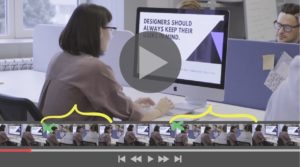
GestureMap: Supporting Visual Analytics and Quantitative Analysis of Motion Elicitation Data by Learning 2D Embeddings
Hai Dang (University of Bayreuth), Daniel Buschek (University of Bayreuth)
Abstract | Tags: Full Paper | Links:
@inproceedings{2021DangGesture,
title = {GestureMap: Supporting Visual Analytics and Quantitative Analysis of Motion Elicitation Data by Learning 2D Embeddings},
author = {Hai Dang (University of Bayreuth) and Daniel Buschek (University of Bayreuth)},
url = {https://www.hciai.uni-bayreuth.de/, Website - HCI+AI University of Bayreuth
https://twitter.com/DBuschek, Twitter - Daniel Buschek
https://www.youtube.com/watch?v=4HYbMak47fs, YouTube - Teaser Video
https://www.youtube.com/watch?v=bh3An6NdQh8, YouTube - Video Figure},
doi = {10.1145/3411764.3445765},
year = {2021},
date = {2021-05-01},
abstract = {This paper presents GestureMap, a visual analytics tool for gesture elicitation which directly visualises the space of gestures. Concretely, a Variational Autoencoder embeds gestures recorded as 3D skeletons on an interactive 2D map. GestureMap further integrates three computational capabilities to connect exploration to quantitative measures: Leveraging DTW Barycenter Averaging (DBA), we compute average gestures to 1) represent gesture groups at a glance; 2) compute a new consensus measure (variance around average gesture); and 3) cluster gestures with k-means. We evaluate GestureMap and its concepts with eight experts and an in-depth analysis of published data. Our findings show how GestureMap facilitates exploring large datasets and helps researchers to gain a visual understanding of elicited gesture spaces. It further opens new directions, such as comparing elicitations across studies. We discuss implications for elicitation studies and research, and opportunities to extend our approach to additional tasks in gesture elicitation.},
keywords = {Full Paper},
pubstate = {published},
tppubtype = {inproceedings}
}
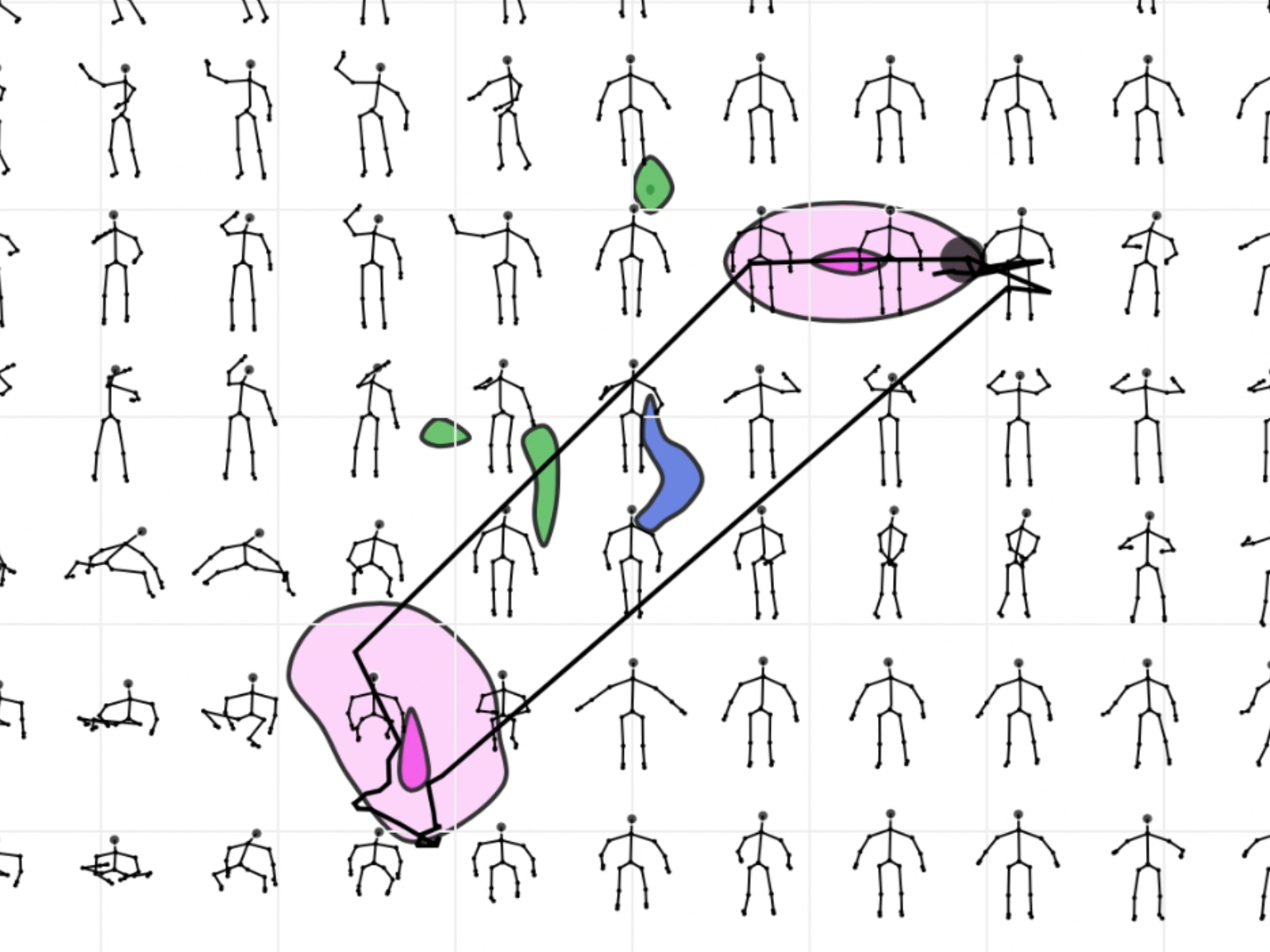
Grand Challenges in Immersive Analytics
Barrett Ens (Monash University), Benjamin Bach (University of Edinburgh), Maxime Cordeil (Monash University), Ulrich Engelke (CSIRO Data61), Marcos Serrano (IRIT - University of Toulouse), Wesley Willett (University of Calgary), Arnaud Prouzeau (Inria + Monash University), Christoph Anthes (HIVE, University of Applied Sciences Upper Austria), Wolfgang Büschel (Technische Universität Dresden), Cody Dunne (Northeastern University Khoury), Tim Dwyer (Monash University), Jens Grubert (Coburg University of Applied Sciences, Arts), Jason H. Haga (Digital Architecture Promotion Center, National Institute of Advanced Industrial Science, Technology), Nurit Kirshenbaum (LAVA, University of Hawaii at Manoa), Dylan Kobayashi (LAVA, University of Hawaii at Manoa), Tica Lin (Harvard University), Monsurat Olaosebikan (Tufts University), Fabian Pointecker (HIVE, University of Applied Sciences Upper Austria), David Saffo (Northeastern University Khoury), Nazmus Saquib (MIT Media Lab), Dieter Schmalstieg (Graz University of Technology), Danielle Albers Szafir (University of Colorado Boulder), Matthew Whitlock (University of Colorado Boulder), Yalong Yang (Harvard University)
Abstract | Tags: Full Paper | Links:
@inproceedings{2021EnsGrand,
title = {Grand Challenges in Immersive Analytics},
author = {Barrett Ens (Monash University) and Benjamin Bach (University of Edinburgh) and Maxime Cordeil (Monash University) and Ulrich Engelke (CSIRO Data61) and Marcos Serrano (IRIT - University of Toulouse) and Wesley Willett (University of Calgary) and Arnaud Prouzeau (Inria + Monash University) and Christoph Anthes (HIVE, University of Applied Sciences Upper Austria) and Wolfgang Büschel (Technische Universität Dresden) and Cody Dunne (Northeastern University Khoury) and Tim Dwyer (Monash University) and Jens Grubert (Coburg University of Applied Sciences and Arts) and Jason H. Haga (Digital Architecture Promotion Center, National Institute of Advanced Industrial Science and Technology) and Nurit Kirshenbaum (LAVA, University of Hawaii at Manoa) and Dylan Kobayashi (LAVA, University of Hawaii at Manoa) and Tica Lin (Harvard University) and Monsurat Olaosebikan (Tufts University) and Fabian Pointecker (HIVE, University of Applied Sciences Upper Austria) and David Saffo (Northeastern University Khoury) and Nazmus Saquib (MIT Media Lab) and Dieter Schmalstieg (Graz University of Technology) and Danielle Albers Szafir (University of Colorado Boulder) and Matthew Whitlock (University of Colorado Boulder) and Yalong Yang (Harvard University)},
doi = {10.1145/3411764.3446866},
year = {2021},
date = {2021-05-01},
abstract = {Immersive Analytics is a quickly evolving field that unites several areas such as visualisation, immersive environments, and human-computer interaction to support human data analysis with emerging technologies. This research has thrived over the past years with multiple workshops, seminars, and a growing body of publications, spanning several conferences. Given the rapid advancement of interaction technologies and novel application domains, this paper aims toward a broader research agenda to enable widespread adoption. We present 17 key research challenges developed over multiple sessions by a diverse group of 24 international experts, initiated from a virtual scientific workshop at ACM CHI 2020. These challenges aim to coordinate future work by providing a systematic roadmap of current directions and impending hurdles to facilitate productive and effective applications for Immersive Analytics.},
keywords = {Full Paper},
pubstate = {published},
tppubtype = {inproceedings}
}
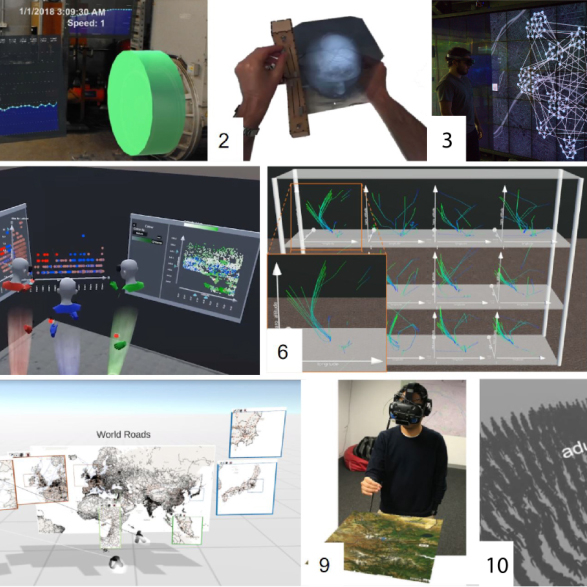
HaRT - The Virtual Reality Hand Redirection Toolkit
André Zenner (Saarland University & DFKI), Hannah Maria Kriegler (Saarland University & DFKI), Antonio Krüger (Saarland University & DFKI)
Abstract | Tags: Late Breaking Work | Links:
@inproceedings{Zenner2021Hart,
title = {HaRT - The Virtual Reality Hand Redirection Toolkit},
author = {André Zenner (Saarland University & DFKI) and Hannah Maria Kriegler (Saarland University & DFKI) and Antonio Krüger (Saarland University & DFKI)},
url = {https://umtl.cs.uni-saarland.de/ (lab page)
https://twitter.com/umtl
https://youtu.be/w_HhzcV0ndM (teaser)
https://youtu.be/4Gz2Sh8eduk (video figure)
https://github.com/AndreZenner/hand-redirection-toolkit},
doi = {0.1145/3411763.3451814},
year = {2021},
date = {2021-05-08},
publisher = {ACM},
abstract = {Past research has proposed various hand redirection techniques for virtual reality (VR). Such techniques modify a user's hand movements and have been successfully used to enhance haptics and 3D user interfaces. Up to now, however, no unified framework exists that implements previously proposed techniques such as body warping, world warping, and hybrid methods. In this work, we present the Virtual Reality Hand Redirection Toolkit (HaRT), an open-source framework developed for the Unity engine. The toolkit aims to support both novice and expert VR researchers and practitioners in implementing and evaluating hand redirection techniques. It provides implementations of popular redirection algorithms and exposes a modular class hierarchy for easy integration of new approaches. Moreover, simulation, logging, and visualization features allow users of the toolkit to analyze hand redirection setups with minimal technical effort. We present the architecture of the toolkit along with the results of a qualitative expert study.},
keywords = {Late Breaking Work},
pubstate = {published},
tppubtype = {inproceedings}
}
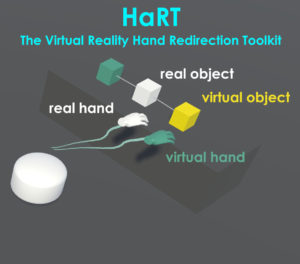
Hidden Interaction Techniques: Concealed Information Acquisition and Texting on Smartphones and Wearables
Ville Mäkelä (LMU Munich), Johannes Kleine (LMU Munich), Maxine Hood (Wellesley College), Florian Alt (Bundeswehr University Munich), Albrecht Schmidt (LMU Munich)
Abstract | Tags: Full Paper | Links:
@inproceedings{2021MakelaHidden,
title = {Hidden Interaction Techniques: Concealed Information Acquisition and Texting on Smartphones and Wearables},
author = {Ville Mäkelä (LMU Munich) and Johannes Kleine (LMU Munich) and Maxine Hood (Wellesley College) and Florian Alt (Bundeswehr University Munich) and Albrecht Schmidt (LMU Munich)},
url = {https://www.en.um.informatik.uni-muenchen.de, Website - Human Centered Ubiquitous Media (HCUM)
https://www.youtube.com/watch?v=hlybyJlJFxI, YouTube Teaser},
doi = {10.1145/3411764.3445504},
year = {2021},
date = {2021-05-01},
abstract = {There are many situations where using personal devices is not socially acceptable, or where nearby people present a privacy risk. For these situations, we explore the concept of hidden interaction techniques through two prototype applications. HiddenHaptics allows users to receive information through vibrotactile cues on a smartphone, and HideWrite allows users to write text messages by drawing on a dimmed smartwatch screen. We conducted three user studies to investigate whether, and how, these techniques can be used without being exposed. Our primary findings are (1) users can effectively hide their interactions while attending to a social situation, (2) users seek to interact when another person is speaking, and they also tend to hide the interaction using their body or furniture, and (3) users can sufficiently focus on the social situation despite their interaction, whereas non-users feel that observing the user hinders their ability to focus on the social activity.},
keywords = {Full Paper},
pubstate = {published},
tppubtype = {inproceedings}
}
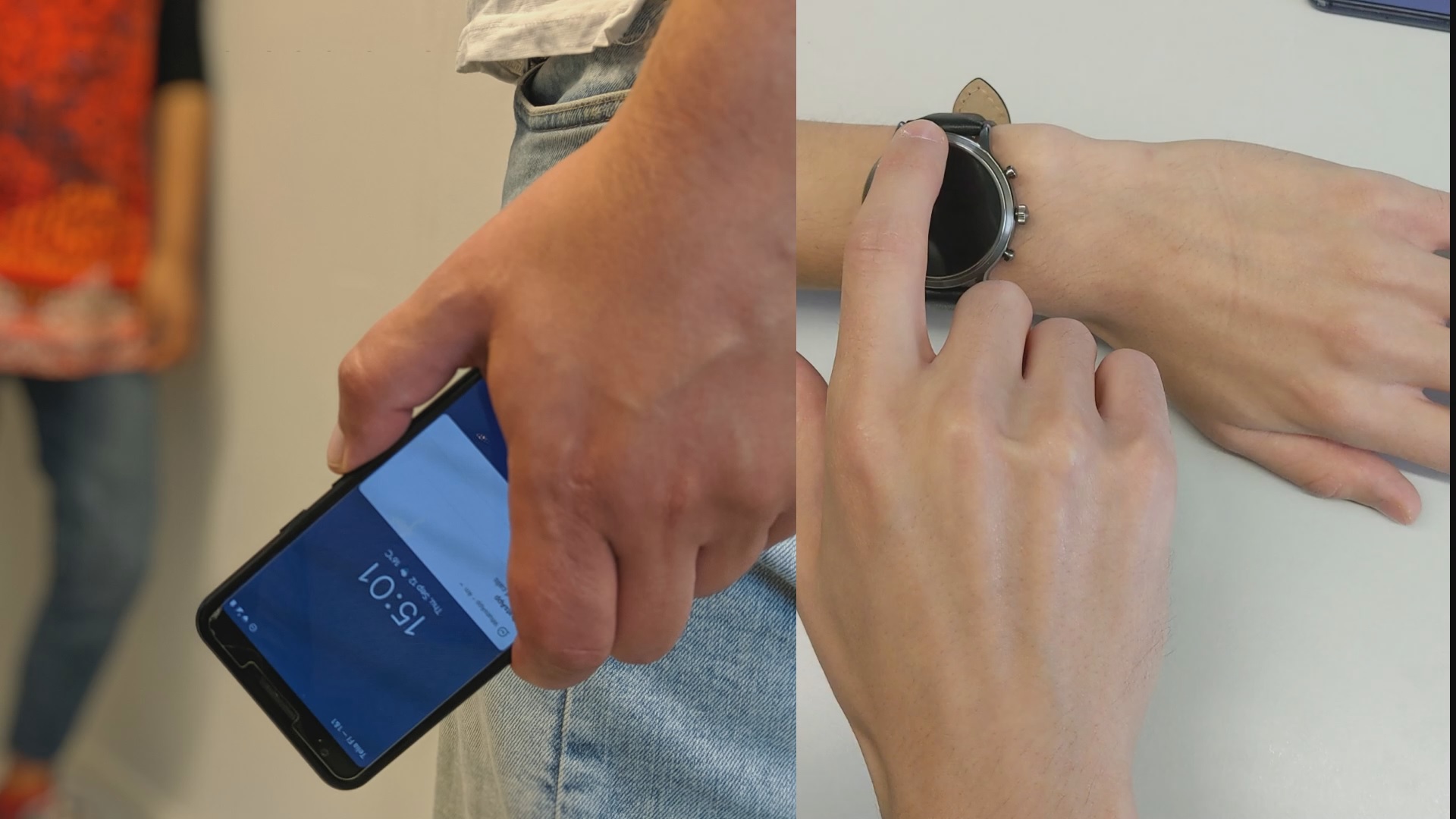
How WEIRD is CHI?
Sebastian Linxen (University of Basel), Christian Sturm (Hamm-Lippstadt University of Applied Sciences), Florian Brühlmann (University of Basel), Vincent Cassau (Hochschule Hamm- Lippstadt), Klaus Opwis (University of Basel), Katharina Reinecke (University of Washington)
Abstract | Tags: Full Paper | Links:
@inproceedings{Linxen2021Weird,
title = {How WEIRD is CHI?},
author = {Sebastian Linxen (University of Basel) and Christian Sturm (Hamm-Lippstadt University of Applied Sciences) and Florian Brühlmann (University of Basel) and Vincent Cassau (Hochschule Hamm- Lippstadt) and Klaus Opwis (University of Basel) and Katharina Reinecke (University of Washington)},
doi = {10.1145/3411764.3445488},
year = {2021},
date = {2021-05-07},
publisher = {ACM},
abstract = {Computer technology is often designed in technology hubs in Western countries, invariably making it "WEIRD", because it is based on the intuition, knowledge, and values of people who are Western, Educated, Industrialized, Rich, and Democratic. Developing technology that is universally useful and engaging requires knowledge about members of WEIRD and non-WEIRD societies alike. In other words, it requires us, the CHI community, to generate this knowledge by studying representative participant samples. To find out to what extent CHI participant samples are from Western societies, we analyzed papers published in the CHI proceedings between 2016-2020. Our findings show that 73% of CHI study findings are based on Western participant samples, representing less than 12% of the world's population. Furthermore, we show that most participant samples at CHI tend to come from industrialized, rich, and democratic countries with generally highly educated populations. Encouragingly, recent years have seen a slight increase in non-Western samples and those that include several countries. We discuss suggestions for further broadening the international representation of CHI participant samples.},
keywords = {Full Paper},
pubstate = {published},
tppubtype = {inproceedings}
}
Hummer: Text Entry by Gaze and Hum
Ramin Hedeshy (University of Stuttgart), Chandan Kumar (University of Stuttgart), Raphael Menges (University of Koblenz), Steffen Staab (University of Stuttgart, University of Southhampton)
Abstract | Tags: Full Paper | Links:
@inproceedings{2021HedeshyHummer,
title = {Hummer: Text Entry by Gaze and Hum},
author = {Ramin Hedeshy (University of Stuttgart) and Chandan Kumar (University of Stuttgart) and Raphael Menges (University of Koblenz) and Steffen Staab (University of Stuttgart and University of Southhampton)},
url = {https://www.ipvs.uni-stuttgart.de/departments/ac/, Website - Analytic Computing
https://twitter.com/AnalyticComp, Twitter - Analytic Computing
https://youtu.be/UR2sX7zrXGw, YouTube - Teaser Video},
doi = {10.1145/3411764.3445501},
year = {2021},
date = {2021-05-01},
abstract = {Text entry by gaze is a useful means of hands-free interaction that is applicable in settings where dictation suffers from poor voice recognition or where spoken words and sentences jeopardize privacy or confidentiality. However, text entry by gaze still shows inferior performance and it quickly exhausts its users. We introduce text entry by gaze and hum as a novel hands-free text entry. We review related literature to converge to word-level text entry by analysis of gaze paths that are temporally constrained by humming. We develop and evaluate two design choices: ``HumHum'' and ``Hummer.'' The first method requires short hums to indicate the start and end of a word. The second method interprets one continuous humming as an indication of the start and end of a word. In an experiment with 12 participants, Hummer achieved a commendable text entry rate of 20.45 words per minute, and outperformed HumHum and the gaze-only method EyeSwipe in both quantitative and qualitative measures. },
keywords = {Full Paper},
pubstate = {published},
tppubtype = {inproceedings}
}

Investigating Document Layout and Placement Strategies for Collaborative Sensemaking in Augmented Reality
Weizhou Luo (Interactive Media Lab Dresden, Technische Universität Dresden), Anke Lehmann (Interactive Media Lab Dresden, Technische Universität Dresden), Yushan Yang (Interactive Media Lab Dresden, Technische Universität Dresden), Raimund Dachselt (Interactive Media Lab Dresden, Technische Universität Dresden)
Abstract | Tags: Late Breaking Work | Links:
@inproceedings{weizhuo2021document,
title = {Investigating Document Layout and Placement Strategies for Collaborative Sensemaking in Augmented Reality},
author = {Weizhou Luo (Interactive Media Lab Dresden, Technische Universität Dresden) and Anke Lehmann (Interactive Media Lab Dresden, Technische Universität Dresden) and Yushan Yang (Interactive Media Lab Dresden, Technische Universität Dresden) and Raimund Dachselt (Interactive Media Lab Dresden, Technische Universität Dresden)},
url = {https://imld.de/
https://twitter.com/imldresden
https://www.youtube.com/watch?v=0JTPCFsHvmc (teaser)
https://www.youtube.com/watch?v=xpGPXnAvaLg (video figure)},
doi = {10.1145/3411763.3451588},
year = {2021},
date = {2021-05-07},
abstract = {Augmented Reality (AR) has the potential to revolutionize our workspaces, since it considerably extends the limits of current displays while keeping users aware of their collaborators and surroundings. Collective activities like brainstorming and sensemaking often use space for arranging documents and information and thus will likely benefit from AR-enhanced offices. Until now, there has been very little research on how the physical surroundings might affect virtual content placement for collaborative sensemaking.
We therefore conducted an initial study with eight participants in which we compared two different room settings for collaborative image categorization regarding content placement, spatiality, and layout. We found that participants tend to utilize the room's vertical surfaces as well as the room's furniture, particularly through edges and gaps, for placement and organization. We also identified three different spatial layout patterns (panoramic-strip, semi-cylindrical layout, furniture-based distribution) and observed the usage of temporary storage spaces specifically for collaboration.},
keywords = {Late Breaking Work},
pubstate = {published},
tppubtype = {inproceedings}
}
We therefore conducted an initial study with eight participants in which we compared two different room settings for collaborative image categorization regarding content placement, spatiality, and layout. We found that participants tend to utilize the room's vertical surfaces as well as the room's furniture, particularly through edges and gaps, for placement and organization. We also identified three different spatial layout patterns (panoramic-strip, semi-cylindrical layout, furniture-based distribution) and observed the usage of temporary storage spaces specifically for collaboration.
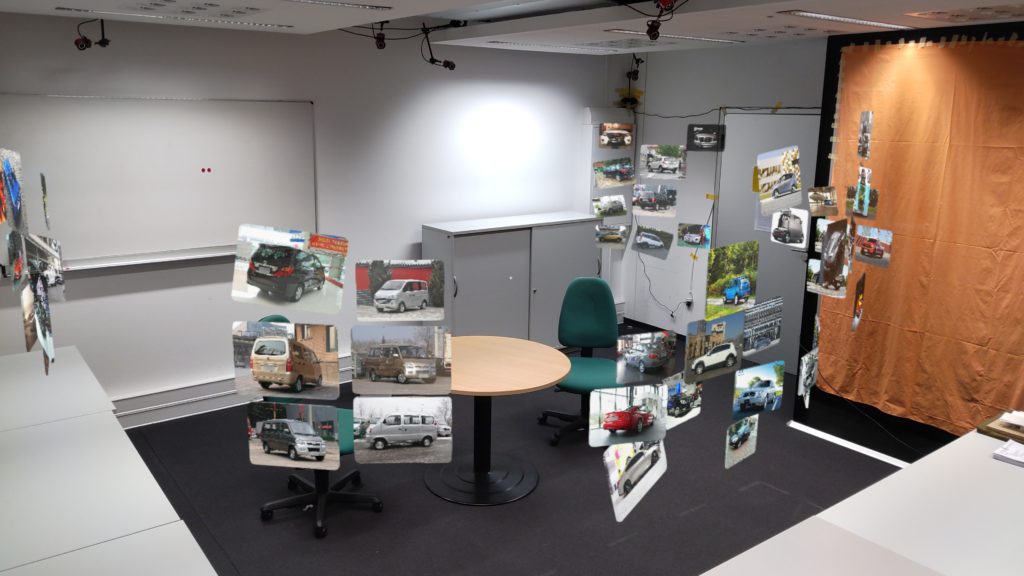
Investigating Simple Privacy Indicators for Supporting Users when Installing New Mobile Apps
Alina Stöver (Technical University of Darmstadt), Nina Gerber (Technical University of Darmstadt), Sushma Kaushik (Technical University of Darmstadt), Max Mühlhäuser (Technical University of Darmstadt), Karola Marky (University of Glasgow, Technical University of Darmstadt)
Abstract | Tags: Late Breaking Work | Links:
@inproceedings{2021StoeverInvestigating,
title = {Investigating Simple Privacy Indicators for Supporting Users when Installing New Mobile Apps},
author = {Alina Stöver (Technical University of Darmstadt) and Nina Gerber (Technical University of Darmstadt) and Sushma Kaushik (Technical University of Darmstadt) and Max Mühlhäuser (Technical University of Darmstadt) and Karola Marky (University of Glasgow, Technical University of Darmstadt)},
url = {https://teamdarmstadt.de, Website - Team Darmstadt},
doi = {10.1145/3411763.3451791},
year = {2021},
date = {2021-05-01},
abstract = {Mobile devices have become daily companions for millions of users. They have access to privacy-sensitive data about their users which stresses the importance of privacy. Users have to make privacy-related decisions already before app installation because once installed, apps can access potential privacy-sensitive data. In this work-in-progress, we present an in-depth investigation of privacy indicator visualizations for mobile app stores. We report the results of two consecutive user studies in which we investigate 1) visual depiction, 2) score, and 3) monetary value of collected data. Our studies reveal that a visual depiction by a privacy meter were easiest to understand for users, scores were easiest to spot, and monetary value was most difficult to interpret and requires further investigation. },
keywords = {Late Breaking Work},
pubstate = {published},
tppubtype = {inproceedings}
}
Investigating the Impact of Real-World Environments on the Perception of 2D Visualizations in Augmented Reality
Marc Satkowski (Technische Universität Dresden), Raimund Dachselt (Technische Universität Dresden)
Abstract | Tags: Full Paper | Links:
@inproceedings{2021SatkowskiInvestigating,
title = {Investigating the Impact of Real-World Environments on the Perception of 2D Visualizations in Augmented Reality},
author = {Marc Satkowski (Technische Universität Dresden) and Raimund Dachselt (Technische Universität Dresden)},
url = {http://www.imld.de, Website - Interactive Media Lab Technische Universität Dresden
https://www.twitter.com/imldresden, Twitter - Interactive Media Lab Technische Universität Dresden
https://youtu.be/W42kTaINqZ4, YouTube - Teaser
https://youtu.be/DNPhOJ6AyRE, YouTube - Video},
doi = {10.1145/3411764.3445330},
year = {2021},
date = {2021-05-01},
abstract = {In this work we report on two comprehensive user studies investigating the perception of Augmented Reality (AR) visualizations influenced by real-world backgrounds. Since AR is an emerging technology, it is important to also consider productive use cases, which is why we chose an exemplary and challenging industry 4.0 environment. Our basic perceptual research focuses on both the visual complexity of backgrounds as well as the influence of a secondary task. In contrast to our expectation, data of our 34 study participants indicate that the background has far less influence on the perception of AR visualizations. Moreover, we observed a mismatch between measured and subjectively reported performance. We discuss the importance of the background and recommendations for visual real-world augmentations. Overall, our results suggest that AR can be used in many visually challenging environments without losing the ability to productively work with the visualizations shown.},
keywords = {Full Paper},
pubstate = {published},
tppubtype = {inproceedings}
}
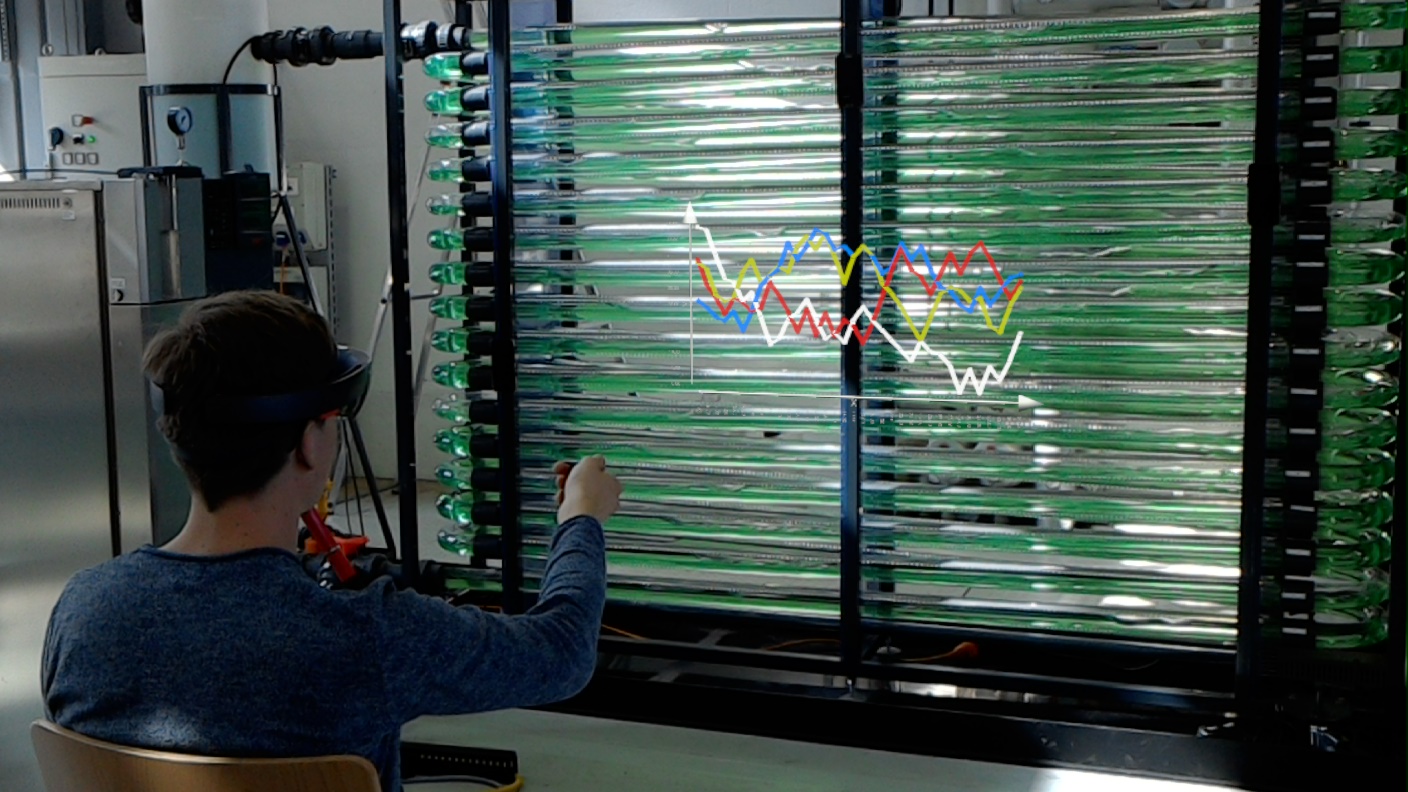
It Takes More Than One Hand to Clap: On the Role of ‘Care’ in Maintaining Design Results
Max Krüger (Universität Siegen), Anne Weibert (Universität Siegen), Débora de Castro Leal (Universität Siegen), Dave Randall (Universität Siegen), Volker Wulf (Universität Siegen)
Abstract | Tags: Full Paper, Honorable Mention | Links:
@inproceedings{Krueger2021CareRole,
title = {It Takes More Than One Hand to Clap: On the Role of ‘Care’ in Maintaining Design Results},
author = {Max Krüger (Universität Siegen) and Anne Weibert (Universität Siegen) and Débora de Castro Leal (Universität Siegen) and Dave Randall (Universität Siegen) and Volker Wulf (Universität Siegen)},
url = {https://www.wineme.uni-siegen.de/ (lab page)},
doi = {10.1145/3411764.3445389},
year = {2021},
date = {2021-05-07},
abstract = {Within Participatory- and Co-Design projects, the issue of sustainability and maintenance of the co-designed artefacts is a crucial yet largely unresolved issue. In this paper, we look back on four years of work on co-designing tools that assist refugees and migrants in their efforts to settle in Germany, the last of which the project has been independently maintained by our community collaborators. We reflect on the role of pre-existing care practices amongst our community collaborators, and a continued openness throughout the project, that allowed a complex constellation of actors to be involved in its ongoing maintenance and our own, often mundane activities which have contributed to the sustainability of the results. Situating our account within an HCI for Social Justice agenda, we thereby contribute to an ongoing discussion about the sustainability of such activities.},
keywords = {Full Paper, Honorable Mention},
pubstate = {published},
tppubtype = {inproceedings}
}
Itsy-Bits: Fabrication and Recognition of 3D-Printed Tangibles with Small Footprints on Capacitive Touchscreens
Martin Schmitz (Technical University of Darmstadt), Florian Müller (Technical University of Darmstadt), Max Mühlhäuser (Technical University of Darmstadt), Jan Riemann (Technical University of Darmstadt), Huy Viet Le (University of Stuttgart)
Abstract | Tags: Full Paper, Honorable Mention | Links:
@inproceedings{2021SchmitzItsy,
title = {Itsy-Bits: Fabrication and Recognition of 3D-Printed Tangibles with Small Footprints on Capacitive Touchscreens},
author = {Martin Schmitz (Technical University of Darmstadt) and Florian Müller (Technical University of Darmstadt) and Max Mühlhäuser (Technical University of Darmstadt) and Jan Riemann (Technical University of Darmstadt) and Huy Viet Le (University of Stuttgart)},
url = {https://www.teamdarmstadt.de/, Website - Team Darmstadt
https://www.facebook.com/teamdarmstadt/, Facebook - Team Darmstadt
https://youtu.be/55vHxnOKl6k, YouTube - Teaser},
doi = {10.1145/3411764.3445502},
year = {2021},
date = {2021-05-01},
abstract = {Tangibles on capacitive touchscreens are a promising approach to overcome the limited expressiveness of touch input. While research has suggested many approaches to detect tangibles, the corresponding tangibles are either costly or have a considerable minimal size. This makes them bulky and unattractive for many applications. At the same time, they obscure valuable display space for interaction. To address these shortcomings, we contribute Itsy-Bits: a fabrication pipeline for 3D printing and recognition of tangibles on capacitive touchscreens with a footprint as small as a fingertip. Each Itsy-Bit consists of an enclosing 3D object and a unique conductive 2D shape on its bottom. Using only raw data of commodity capacitive touchscreens, Itsy-Bits reliably identifies and locates a variety of shapes in different sizes and estimates their orientation. Through example applications and a technical evaluation, we demonstrate the feasibility and applicability of Itsy-Bits for tangibles with small footprints.},
keywords = {Full Paper, Honorable Mention},
pubstate = {published},
tppubtype = {inproceedings}
}
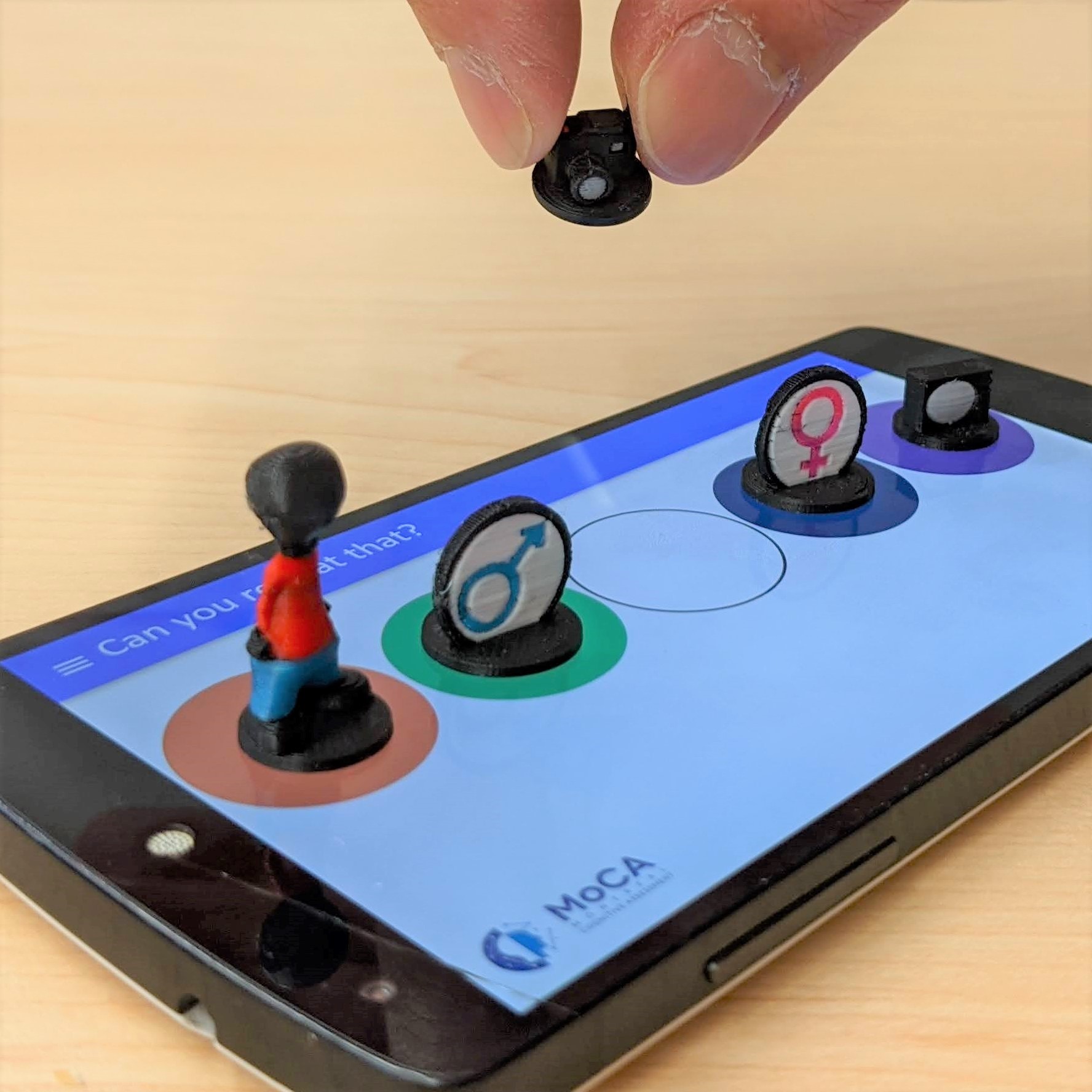
KiTT - The Kinaesthetics Transfer Teacher: Design and Evaluation of a Tablet-based System to Promote the Learning of Ergonomic Patient Transfers
Maximilian Dürr (University of Konstanz), Marcel Borowski (Aarhus University), Carla Gröschel (University of Konstanz), Ulrike Pfeil (University of Konstanz), Jens Müller (University of Konstanz), Harald Reiterer (University of Konstanz)
Abstract | Tags: Full Paper | Links:
@inproceedings{2021DuerrKitt,
title = {KiTT - The Kinaesthetics Transfer Teacher: Design and Evaluation of a Tablet-based System to Promote the Learning of Ergonomic Patient Transfers},
author = {Maximilian Dürr (University of Konstanz) and Marcel Borowski (Aarhus University) and Carla Gröschel (University of Konstanz) and Ulrike Pfeil (University of Konstanz) and Jens Müller (University of Konstanz) and Harald Reiterer (University of Konstanz) },
url = {https://hci.uni-konstanz.de/en/, Website - HCI Group Konstanz
https://twitter.com/HCIGroupKN, Twitter - @HCIGroupKN
https://youtu.be/sIfW0Q3HGZI, YouTube - Teaser
https://www.youtube.com/watch?v=BtwAbytRrJQ, YouTube - Video},
doi = {10.1145/3411764.3445496},
year = {2021},
date = {2021-05-01},
abstract = {Nurses frequently transfer patients as part of their daily work. However, manual patient transfers pose a major risk to nurses’ health. Although the Kinaesthetics care conception can help address this issue, existing support to learn the concept is low. We present KiTT, a tablet-based system, to promote the learning of ergonomic patient transfers based on the Kinaesthetics care conception. KiTT supports the training of Kinaesthetics-based patient transfers by two nurses. The nurses are guided by the phases (i) interactive instructions, (ii) training of transfer conduct, and (iii) feedback and reflection. We evaluated KiTT with 26 nursing-care students in a nursing-care school. Our results indicate that KiTT provides a good subjective support for the learning of Kinaesthetics. Our results also suggest that KiTT can promote the ergonomically correct conduct of patient transfers while providing a good user experience adequate to the nursing-school context, and reveal how KiTT can extend existing practices.},
keywords = {Full Paper},
pubstate = {published},
tppubtype = {inproceedings}
}
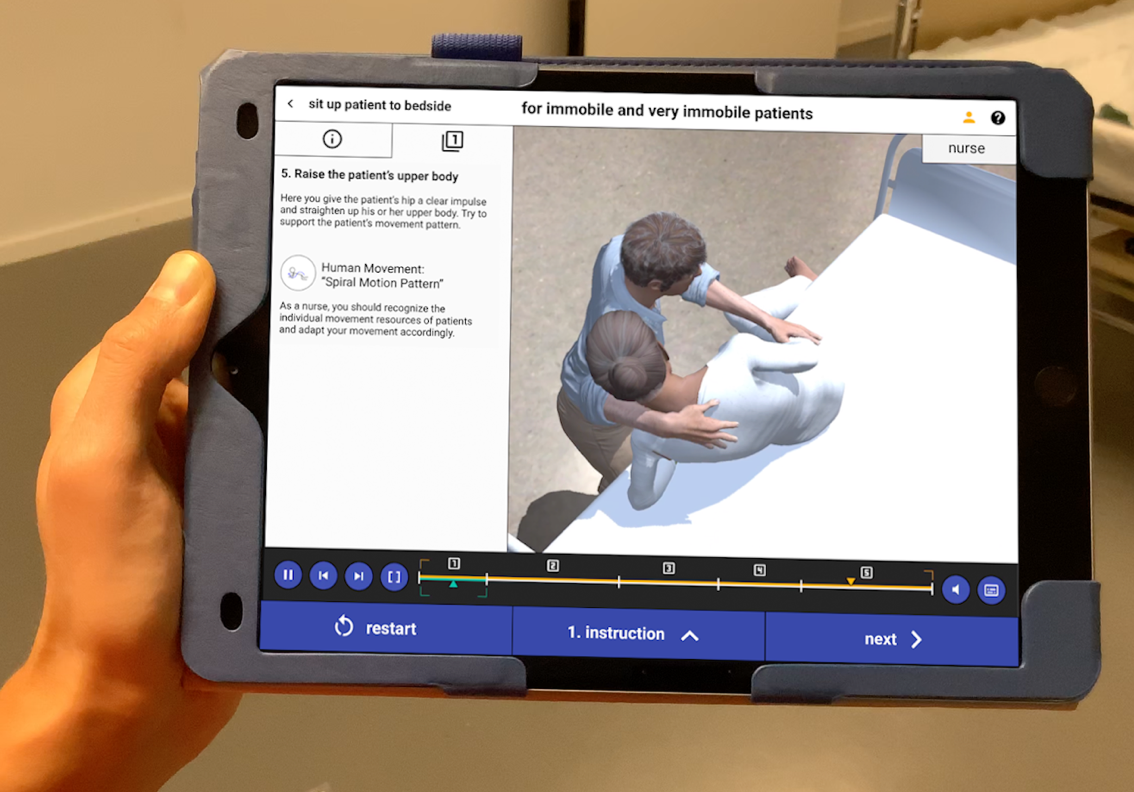
Let's Frets! Mastering Guitar Playing with Capacitive Sensing and Visual Guidance
Karola Marky (Technical University of Darmstadt), Andreas Weiß (Music School Schallkultur), Florian Müller (Technical University of Darmstadt), Martin Schmitz (Technical University of Darmstadt), Max Mühlhäuser (Technical University of Darmstadt), Thomas Kosch (Technical University of Darmstadt)
Abstract | Tags: Interactivity/Demonstration | Links:
@inproceedings{2021MarkyFrets,
title = {Let's Frets! Mastering Guitar Playing with Capacitive Sensing and Visual Guidance},
author = {Karola Marky (Technical University of Darmstadt) and Andreas Weiß (Music School Schallkultur) and Florian Müller (Technical University of Darmstadt) and Martin Schmitz (Technical University of Darmstadt) and Max Mühlhäuser (Technical University of Darmstadt) and Thomas Kosch (Technical University of Darmstadt)},
url = {http://www.teamdarmstadt.de/, Website - Team Darmstadt},
doi = {10.1145/3411763.3451536},
year = {2021},
date = {2021-05-01},
abstract = {Mastering the guitar requires regular exercise to develop new skills and maintain existing abilities. We present Let's Frets - a modular guitar support system that provides visual guidance through LEDs that are integrated into a capacitive fretboard to support the practice of chords, scales, melodies, and exercises. Additional feedback is provided through a 3D-printed fretboard that senses the finger positions through capacitive sensing. We envision Let's Frets as an integrated guitar support system that raises the awareness of guitarists about their playing styles, their training progress, the composition of new pieces, and facilitating remote collaborations between teachers as well as guitar students. This interactivity demonstrates Let's Frets with an augmented fretboard and supporting software that runs on a mobile device.},
keywords = {Interactivity/Demonstration},
pubstate = {published},
tppubtype = {inproceedings}
}

Let’s Frets! Assisting Guitar Students during Practice via Capacitive Sensing
Karola Marky (Technical University of Darmstadt), Andreas Weiß (Musical School Schallkultur), Andrii Matviienko (Technical University of Darmstadt), Florian Brandherm (Technical University of Darmstadt), Sebastian Wolf (Technical University of Darmstadt), Martin Schmitz (Technical University of Darmstadt), Florian Krell (Technical University of Darmstadt), Florian Müller (Technical University of Darmstadt), Max Mühlhäuser (Technical University of Darmstadt), Thomas Kosch (Technical University of Darmstadt)
Abstract | Tags: Full Paper | Links:
@inproceedings{2021MarkyFretsPaper,
title = {Let’s Frets! Assisting Guitar Students during Practice via Capacitive Sensing},
author = {Karola Marky (Technical University of Darmstadt) and Andreas Weiß (Musical School Schallkultur) and Andrii Matviienko (Technical University of Darmstadt) and Florian Brandherm (Technical University of Darmstadt) and Sebastian Wolf (Technical University of Darmstadt) and Martin Schmitz (Technical University of Darmstadt) and Florian Krell (Technical University of Darmstadt) and Florian Müller (Technical University of Darmstadt) and Max Mühlhäuser (Technical University of Darmstadt) and Thomas Kosch (Technical University of Darmstadt)},
doi = {10.1145/3411764.3445595},
year = {2021},
date = {2021-05-01},
abstract = {Learning a musical instrument requires regular exercise. However, students are often on their own during their practice sessions due to the limited time with their teachers, which increases the likelihood of mislearning playing techniques. To address this issue, we present Let's Frets - a modular guitar learning system that provides visual indicators and capturing of finger positions on a 3D-printed capacitive guitar fretboard. We based the design of Let's Frets on requirements collected through in-depth interviews with professional guitarists and teachers. In a user study (N=24), we evaluated the feedback modules of Let's Frets against fretboard charts. Our results show that visual indicators require the least time to realize new finger positions while a combination of visual indicators and position capturing yielded the highest playing accuracy. We conclude how Let's Frets enables independent practice sessions that can be translated to other musical instruments.},
keywords = {Full Paper},
pubstate = {published},
tppubtype = {inproceedings}
}
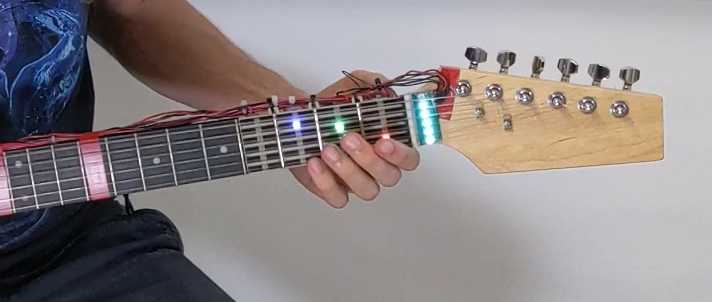
Let’s Share a Ride into the Future: A Qalitative Study Comparing Hypothetical Implementation Scenarios of Automated Vehicles
Martina Schuß (Technische Hochschule Ingolstadt), Philipp Wintersberger (Technische Hochschule Ingolstadt), Andreas Riener (Technische Hochschule Ingolstadt )
Abstract | Tags: Full Paper | Links:
@inproceedings{2021SchussShare,
title = {Let’s Share a Ride into the Future: A Qalitative Study Comparing Hypothetical Implementation Scenarios of Automated Vehicles},
author = {Martina Schuß (Technische Hochschule Ingolstadt) and Philipp Wintersberger (Technische Hochschule Ingolstadt) and Andreas Riener (Technische Hochschule Ingolstadt )},
url = {https://hcig.thi.de/, HCI Group Technische Hochschule Ingolstadt},
doi = {10.1145/3411764.3445609},
year = {2021},
date = {2021-05-01},
abstract = {Automated Vehicles (AVs) are expected to radically disrupt our mobility. Whereas much is speculated about how AVs will actually be implemented in the future, we argue that their advent should be taken as an opportunity to enhance all people’s mobility and improve their lives. Thus, it is important to focus on both the environment and the needs of target groups that have not been sufficiently considered in the past. In this paper, we present the findings from a qualitative study (N=11) of public attitude on hypothetical implementation scenarios for AVs. Our results indicate that people are aware of the benefits of shared mobility for the environment and society, and are generally open to using it. However, 1) emotional factors mitigate this openness and 2) security concerns were expressed by female participants. We recommend that identified concerns must be addressed to allow AVs fully exploiting their benefits for society and environment.},
keywords = {Full Paper},
pubstate = {published},
tppubtype = {inproceedings}
}
LYLO – Exploring Disclosed Configurations for Inter-Personal Location Sharing
Christina Schneegass (LMU Munich), Diana Irmscher (LMU Munich), Florian Bemmann (LMU Munich), Daniel Buschek (University of Bayreuth)
Abstract | Tags: Late Breaking Work | Links:
@inproceedings{Schneegass2021LYLO,
title = {LYLO – Exploring Disclosed Configurations for Inter-Personal Location Sharing},
author = {Christina Schneegass (LMU Munich) and Diana Irmscher (LMU Munich) and Florian Bemmann (LMU Munich) and Daniel Buschek (University of Bayreuth)},
url = {http://mimuc.de/, Website - MIMUC
https://twitter.com/mimuc, Twitter - MIMUC
https://www.instagram.com/mediagroup.lmu/, Instagram - MIMUC},
doi = {10.1145/3411763.3451652},
year = {2021},
date = {2021-05-07},
abstract = {Continuous location sharing (CLS) can foster intimacy, for example, for couples in long-distance relationships. However, turning off CLS can then raise suspicions. To address this, we developed nuanced sharing settings in a focus group (N = 6) and implemented them to moderate CLS in an Android app. Crucially, the app also discloses each person's current sharing settings to the partner. In a 16-day field study, four couples interacted with our app and the disclosed configurations, confirming the disclosure's positive effect on transparency. However, features obfuscating the location were considered superfluous, as participants preferred sharing their location exactly or not at all. While participants overall appreciated having the configuration options, changes in their partners’ configurations raised questions about their motivations. Instead, participants would adjust the configuration for different intimacy levels (colleague vs. partner) rather than different activities when using CLS with the same person.},
note = {LMU Medieninformatik (facebook) - cannot find a direct link},
keywords = {Late Breaking Work},
pubstate = {published},
tppubtype = {inproceedings}
}
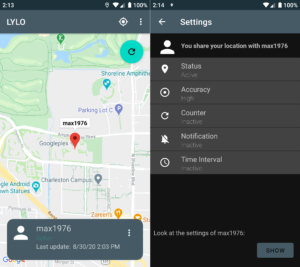
Machine Learning Uncertainty as a Design Material: A Post-Phenomenological Inquiry into Pragmatic Concepts for Design Research
Jesse Josua Benjamin (UTwente), Arne Berger (HS Anhalt), Nick Merrill (UC Berkeley), James Pierce (University of Washington)
Abstract | Tags: Full Paper | Links:
@inproceedings{2021BenjaminMachine,
title = {Machine Learning Uncertainty as a Design Material: A Post-Phenomenological Inquiry into Pragmatic Concepts for Design Research},
author = {Jesse Josua Benjamin (UTwente) and Arne Berger (HS Anhalt) and Nick Merrill (UC Berkeley) and James Pierce (University of Washington)},
url = {https://www.hs-anhalt.de/hochschule-anhalt/fachbereich-5/personen-kontakt/professorinnen-und-professoren.html#modal4780, Website - Arne Berger
https://twitter.com/arneberger, Twitter - Arne Berger},
doi = {10.1145/3411764.3445481},
year = {2021},
date = {2021-05-01},
abstract = {Design research is important for understanding and interrogating how emerging technologies shape human experience. However, design research with Machine Learning (ML) is relatively underdeveloped. Crucially, designers have not found a grasp on ML uncertainty as a design opportunity rather than an obstacle. The technical literature points to data and model uncertainties as two main properties of ML. Through post-phenomenology, we position uncertainty as one defning material attribute of ML processes which mediate human experience. To understand ML uncertainty as a design material, we investigate four design research case studies involving ML. We derive three provocative concepts: thingly uncertainty: ML-driven artefacts have uncertain, variable relations to their environments; pattern leakage: ML uncertainty can lead to patterns shaping the world they are meant to represent; and futures creep: ML technologies texture human relations to time with uncertainty. Finally, we outline design research trajectories and sketch a post-phenomenological approach to human-ML relations.},
keywords = {Full Paper},
pubstate = {published},
tppubtype = {inproceedings}
}
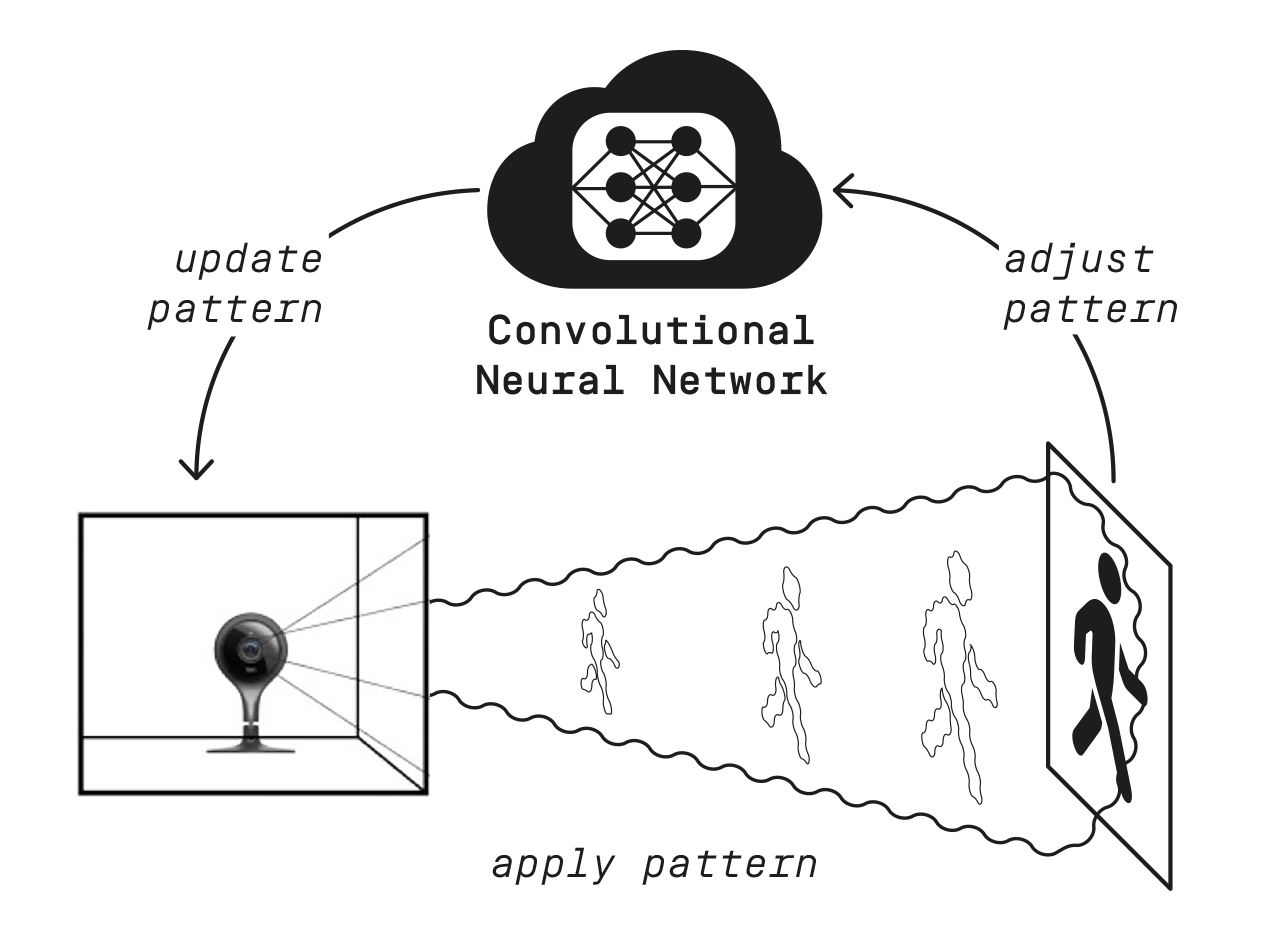
Making Sense of Complex Running Metrics Using a Modified Running Shoe
Paweł W. Woźniak (Utrecht University), Monika Zbytniewska (ETH Zurich), Francisco Kiss (BETESO - Bürger Electronic GmbH), Jasmin Niess (University of Bremen)
Abstract | Tags: Full Paper | Links:
@inproceedings{Wozniak2021Running,
title = {Making Sense of Complex Running Metrics Using a Modified Running Shoe},
author = {Paweł W. Woźniak (Utrecht University) and Monika Zbytniewska (ETH Zurich) and Francisco Kiss (BETESO - Bürger Electronic GmbH) and Jasmin Niess (University of Bremen)},
url = {https://hci.uni-bremen.de/ (lab page)
https://twitter.com/HCIBremen
https://www.youtube.com/watch?v=E5Y6wGDmbls (teaser)},
doi = {10.1145/3411764.3445506},
year = {2021},
date = {2021-05-07},
publisher = {ACM},
abstract = {Running is a widely popular physical activity that offers many health benefits. As runners progress with their training, understanding one's own body becomes a key concern in achieving wellbeing through running. While extensive bodily sensing opportunities exist for runners, understanding complex sensor data is a challenge. In this paper, we investigate how data from shoe-worn sensors can be visualised to empower runners to improve their technique. We designed GraFeet---an augmented running shoe that visualises kinesiological data about the runner's feet and gait. We compared our prototype with a standard sensor dashboard in a user study where users ran with the sensor and analysed the generated data after the run. GraFeet was perceived as more usable; producing more insights and less confusion in the users. Based on our inquiry, we contribute findings about using data from body-worn sensors to support physically active individuals.},
keywords = {Full Paper},
pubstate = {published},
tppubtype = {inproceedings}
}
MARVIS: Combining Mobile Devices and Augmented Reality for Visual Data Analysis
Ricardo Langner (Technische Universität Dresden), Marc Satkowski (Technische Universität Dresden), Wolfgang Büschel (Technische Universität Dresden), Raimund Dachselt (Technische Universität Dresden)
Abstract | Tags: Full Paper | Links:
@inproceedings{2021LangnerMarvis,
title = {MARVIS: Combining Mobile Devices and Augmented Reality for Visual Data Analysis},
author = {Ricardo Langner (Technische Universität Dresden) and Marc Satkowski (Technische Universität Dresden) and Wolfgang Büschel (Technische Universität Dresden) and Raimund Dachselt (Technische Universität Dresden)},
url = {https://imld.de/marvis, Website - Marvis @ IMLD
https://twitter.com/imldresde, Twitter - IMLD
https://youtu.be/DHvnkpmjUhw, YouTube - Teaser Video
https://youtu.be/bDS7kRFYgjY, YouTube - Video Figure},
doi = {10.1145/3411764.3445593},
year = {2021},
date = {2021-05-01},
abstract = {We present MARVIS, a conceptual framework that combines mobile devices and head-mounted Augmented Reality (AR) for visual data analysis. We propose novel concepts and techniques addressing visualization-specific challenges. By showing additional 2D and 3D information around and above displays, we extend their limited screen space. AR views between displays as well as linking and brushing are also supported, making relationships between separated visualizations plausible. We introduce the design process and rationale for our techniques. To validate MARVIS' concepts and show their versatility and widespread applicability, we describe six implemented example use cases. Finally, we discuss insights from expert hands-on reviews. As a result, we contribute to a better understanding of how the combination of one or more mobile devices with AR can benefit visual data analysis. By exploring this new type of visualization environment, we hope to provide a foundation and inspiration for future mobile data visualizations.},
keywords = {Full Paper},
pubstate = {published},
tppubtype = {inproceedings}
}

MEMEography: Understanding Users Through Internet Memes
Annika Kaltenhauser (Ergosign GmbH & LMU Munich), Nađa Terzimehić (LMU Munich), Andreas Butz (LMU Munich)
Abstract | Tags: Late Breaking Work | Links:
@inproceedings{2021KaltenhauserMEME,
title = {MEMEography: Understanding Users Through Internet Memes},
author = {Annika Kaltenhauser (Ergosign GmbH & LMU Munich), Nađa Terzimehić (LMU Munich), Andreas Butz (LMU Munich)},
url = {https://www.medien.ifi.lmu.de},
doi = {10.1145/3411763.3451581},
year = {2021},
date = {2021-05-01},
abstract = {In this paper, we propose a method we call MEMEography for HCI research to understand people and their interactional contexts from the remixed internet memes they post in internet communities. While memes might not be the most obvious choice of a research subject, they allow us to investigate unfamiliar domains even when access to the field is beyond reach. We describe an initial approach of data selection, collection, prioritization and analysis. In addition, we demonstrate the kinds of insights we can gain through MEMEographies by analyzing a corpus of memes in the intensive care unit (ICU) context posted 2020 on Instagram. ICU memes open up insights into the environment, work practices, challenges, emotions and familiarized us with ICU practitioners' language, even though access to an actual ICU was completely impossible during 2020.},
keywords = {Late Breaking Work},
pubstate = {published},
tppubtype = {inproceedings}
}
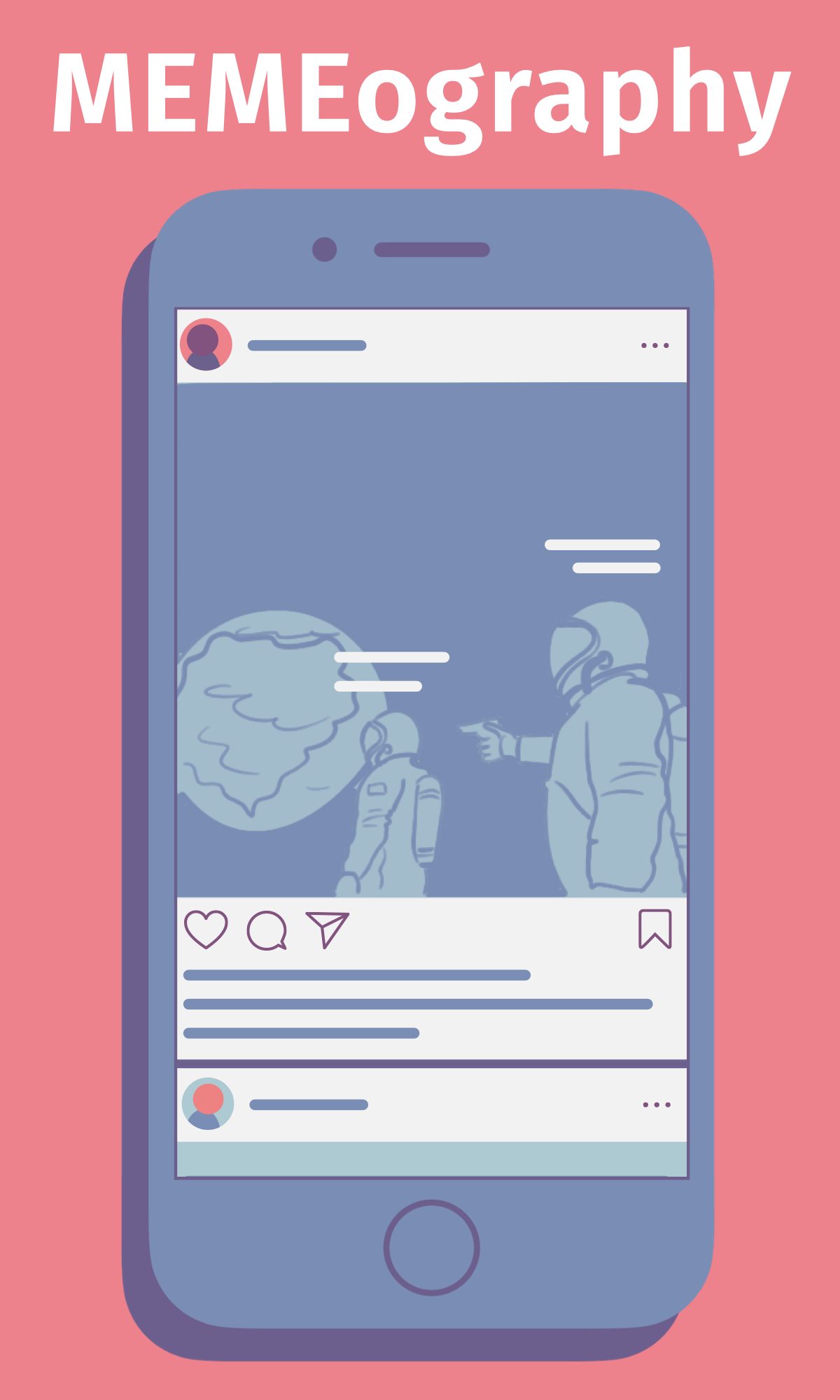
MIRIA: A Mixed Reality Toolkit for the In-Situ Visualization and Analysis of Spatio-Temporal Interaction Data
Wolfgang Büschel (Interactive Media Lab Dresden, Technische Universität Dresden), Anke Lehmann (Interactive Media Lab Dresden, Technische Universität Dresden), Raimund Dachselt (Interactive Media Lab Dresden, Technische Universität Dresden)
Abstract | Tags: Full Paper | Links:
@inproceedings{2021BueschelMiria,
title = {MIRIA: A Mixed Reality Toolkit for the In-Situ Visualization and Analysis of Spatio-Temporal Interaction Data},
author = {Wolfgang Büschel (Interactive Media Lab Dresden, Technische Universität Dresden) and Anke Lehmann (Interactive Media Lab Dresden, Technische Universität Dresden) and Raimund Dachselt (Interactive Media Lab Dresden, Technische Universität Dresden)},
url = {https://imld.de, Website - Interactive Media Lab Dresden
https://twitter.com/imldresden, Twitter - Interactive Media Lab Dresden
https://youtu.be/TZUMpbExkds, YouTube - Teaser
https://youtu.be/mnFZ-skGH5s, YouTube - Video},
doi = {10.1145/3411764.3445651},
year = {2021},
date = {2021-05-01},
abstract = {In this paper, we present MIRIA, a Mixed Reality Interaction Analysis toolkit designed to support the in-situ visual analysis of user interaction in mixed reality and multi-display environments. So far, there are few options to effectively explore and analyze interaction patterns in such novel computing systems. With MIRIA, we address this gap by supporting the analysis of user movement, spatial interaction, and event data by multiple, co-located users directly in the original environment. Based on our own experiences and an analysis of the typical data, tasks, and visualizations used in existing approaches, we identify requirements for our system. We report on the design and prototypical implementation of MIRIA, which is informed by these requirements and offers various visualizations such as 3D movement trajectories, position heatmaps, and scatterplots. To demonstrate the value of MIRIA for real-world analysis tasks, we conducted expert feedback sessions using several use cases with authentic study data.},
keywords = {Full Paper},
pubstate = {published},
tppubtype = {inproceedings}
}
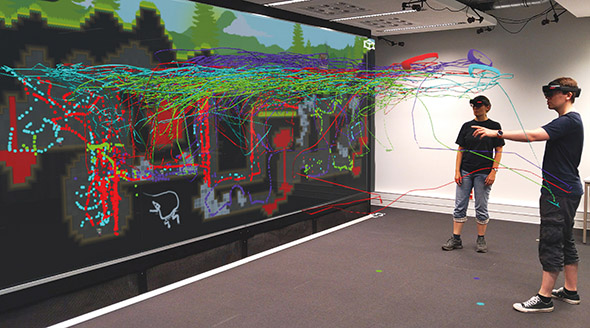
Oh, Snap! A Fabrication Pipeline to Magnetically Connect Conventional and 3D-Printed Electronics
Martin Schmitz (Technical University of Darmstadt), Jan Riemann (Technical University of Darmstadt), Florian Müller (Technical University of Darmstadt), Steffen Kreis (Technical University of Darmstadt), Max Mühlhäuser (Technical University of Darmstadt)
Abstract | Tags: Best Paper, Full Paper | Links:
@inproceedings{2021SchmitzSnap,
title = {Oh, Snap! A Fabrication Pipeline to Magnetically Connect Conventional and 3D-Printed Electronics},
author = {Martin Schmitz (Technical University of Darmstadt) and Jan Riemann (Technical University of Darmstadt) and Florian Müller (Technical University of Darmstadt) and Steffen Kreis (Technical University of Darmstadt) and Max Mühlhäuser (Technical University of Darmstadt)},
url = {https://www.teamdarmstadt.de, Website - Telecooperation Lab
https://www.facebook.com/teamdarmstadt/, Facebook - Team Darmstadt
https://youtu.be/ado4a_chzqo, YouTube - Teaser},
doi = {10.1145/3411764.3445641},
year = {2021},
date = {2021-05-01},
abstract = {3D printing has revolutionized rapid prototyping by speeding up the creation of custom-shaped objects. With the rise of multi-material 3Dprinters, these custom-shaped objects can now be made interactive in a single pass through passive conductive structures. However, connecting conventional electronics to these conductive structures often still requires time-consuming manual assembly involving many wires, soldering or gluing. To alleviate these shortcomings, we propose Oh, Snap!: a fabrication pipeline and interfacing concept to magnetically connect a 3D-printed object equipped with passive sensing structures to conventional sensing electronics. To this end, Oh, Snap! utilizes ferromagnetic and conductive 3D-printed structures, printable in a single pass on standard printers. We further present a proof-of-concept capacitive sensing board that enables easy and robust magnetic assembly to quickly create interactive 3D-printed objects. We evaluate Oh, Snap! by assessing the robustness and quality of the connection and demonstrate its broad applicability by a series of example applications.},
keywords = {Best Paper, Full Paper},
pubstate = {published},
tppubtype = {inproceedings}
}
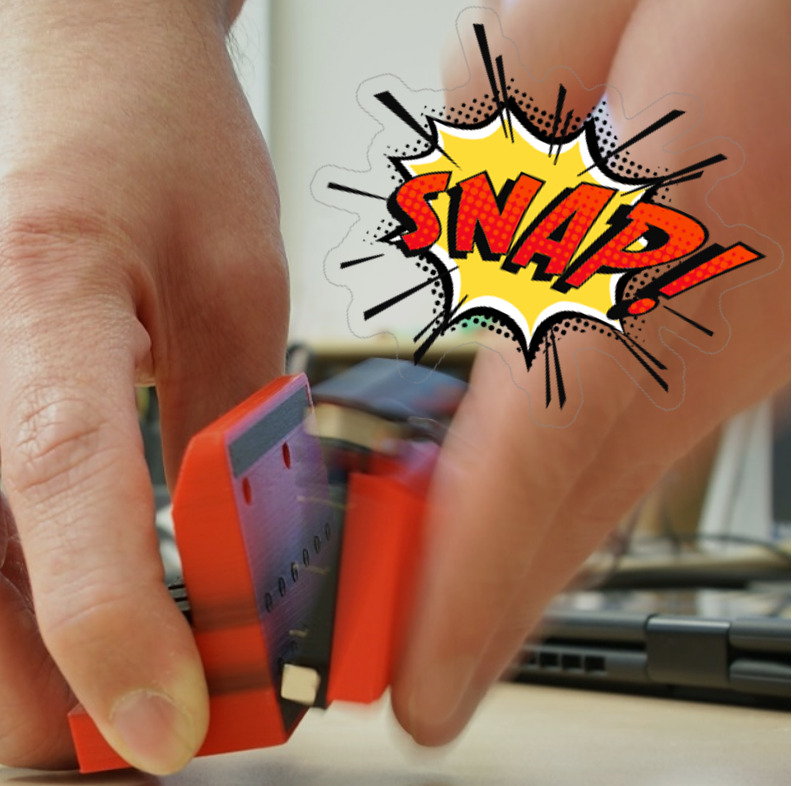
On Activism and Academia: Reflecting Together and Sharing Experiences Among Critical Friends
Debora de Castro Leal (University of Siegen), Angelika Strohmayer (Northumbria University), Max Krüger (University of Siegen)
Abstract | Tags: Full Paper | Links:
@inproceedings{2021deCastroOn,
title = {On Activism and Academia: Reflecting Together and Sharing Experiences Among Critical Friends},
author = {Debora de Castro Leal (University of Siegen) and Angelika Strohmayer (Northumbria University) and Max Krüger (University of Siegen)},
url = {https://www.linkedin.com/in/deboracastroleal/, LinkedIn - Debora de Csatro Leal},
doi = {10.1145/3411764.3445263},
year = {2021},
date = {2021-05-01},
abstract = {In recent years HCI and CSCW work has increasingly begun to address complex social problems and issues of social justice worldwide. Such activist-leaning work is not without problems. Through the experiences and reflections of an activist becoming academic and an academic becoming an activist, we outline these difficulties such as (1) the risk of perpetuating violence, oppression and exploitation when working with marginalised communities, (2) the reception of activist-academic work within our academic communities, and (3) problems of social justice that exist within our academic communities. Building on our own experiences, practices and existing literature from a variety of disciplines we advocate for the possibility of an activist-academic practice, outline possible ways forward and formulate questions we need to answer for HCI to contribute to a more just world.},
keywords = {Full Paper},
pubstate = {published},
tppubtype = {inproceedings}
}
On Ubiquitous Technology, a Digital World and their Influence on People's Feeling and Control of Presence in Everyday Life
Nađa Terzimehić (LMU Munich), Ceenu George (LMU Munich), Renate Häuslschmid (University of Freiburg), Heinrich Hussmann (LMU Munich)
Abstract | Tags: Late Breaking Work | Links:
@inproceedings{2021TerzimehicUbiquitous,
title = {On Ubiquitous Technology, a Digital World and their Influence on People's Feeling and Control of Presence in Everyday Life},
author = {Nađa Terzimehić (LMU Munich) and Ceenu George (LMU Munich) and Renate Häuslschmid (University of Freiburg) and Heinrich Hussmann (LMU Munich)},
url = {http://www.medien.ifi.lmu.de/, Website - Media Informatic LMU Munich},
doi = {10.1145/3411763.3451831},
year = {2021},
date = {2021-05-07},
abstract = {Ubiquitous technology, e.g., smartphones or tablets, has created a continuously available digital world, drastically changing our feeling of being in the here and now -- named presence. We thus increasingly shift between the real and the digital world, ranging from losing awareness of real surroundings to cutting out the digital world to truly be in the real one. In this work, we aim to explore the middle ground in between. We move beyond classic VR research on presence and look at everyday ubiquitous technology and its influence on presence in the real and digital world. By means of a focus group (N=6) and a subsequent online survey (N=36), we gathered individual notions of presence as well as experiences and situations in which people move between the worlds. We discuss the need to further explore presence and its dynamics across the real and digital worlds in everyday life.},
keywords = {Late Breaking Work},
pubstate = {published},
tppubtype = {inproceedings}
}
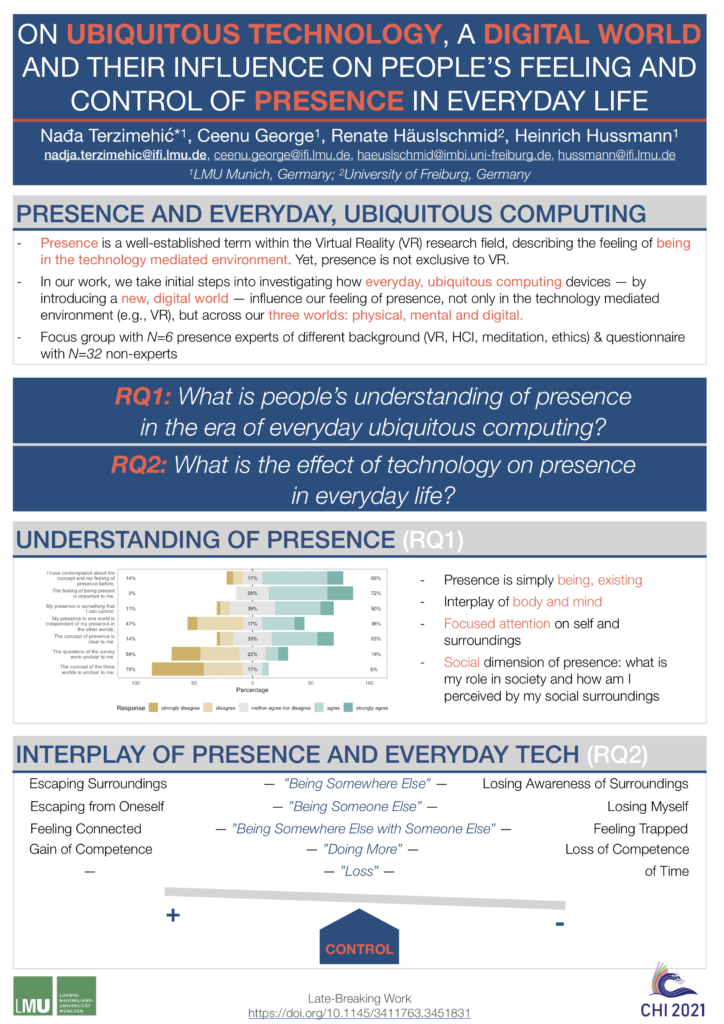
Out of Your Mind!? Embodied Interaction in Sports
Vincent van Rheden (University of Salzburg), Thomas Grah (University of Salzburg), Alexander Meschtscherjakov (University of Salzburg), Rakesh Patibanda (Monash University), Wanyu Liu (IRCAM Centre Pompidou), Florian Daiber (DFKI, Saarland Informatics Campus), Elise van den Hoven (University of Technology Sydney, Eindhoven University of Technology), Florian Floyd Mueller (Monash University)
Abstract | Tags: Workshop | Links:
@inproceedings{2021RhedenMind,
title = {Out of Your Mind!? Embodied Interaction in Sports},
author = {Vincent van Rheden (University of Salzburg) and Thomas Grah (University of Salzburg) and Alexander Meschtscherjakov (University of Salzburg) and Rakesh Patibanda (Monash University) and Wanyu Liu (IRCAM Centre Pompidou) and Florian Daiber (DFKI, Saarland Informatics Campus) and Elise van den Hoven (University of Technology Sydney, Eindhoven University of Technology) and Florian Floyd Mueller (Monash University)},
url = {https://umtl.cs.uni-saarland.de, Website - UMTLab
https://www.facebook.com/UMTLab/, Facebook - UMTLab
https://sports-hci.com/, Workshop Website},
doi = {10.1145/3411763.3441329},
year = {2021},
date = {2021-05-07},
abstract = {People engage in sportive activities for reasons beyond improving their athletic performance. They also seek experiences like fun, adventure, a feeling of oneness, clear their heads, and flow. Since sport is a highly bodily experience, we argue that taking an embodied interaction perspective to inspire interaction design of sports systems is a promising direction in HCI research and practice. This workshop will address the challenges of designing interactive systems in the realm of sports from an embodied interaction perspective focusing on athletes' experience rather than performance. We will explore how interactive systems enhance sports experience without distracting from the actual goal of the athlete, such as freeing the mind. We will focus on several topics of interest such as sensory augmentation, augmented experience, multi-modal interaction, and motor learning in sports.},
keywords = {Workshop},
pubstate = {published},
tppubtype = {inproceedings}
}
Physiological and Perceptual Responses to Athletic Avatars while Cycling in Virtual Reality
Martin Kocur (University of Regensburg), Florian Habler (University of Regensburg), Valentin Schwind (Frankfurt University of Applied Sciences), Paweł W. Woźniak (Utrecht University), Christian Wolff (University of Regensburg), Niels Henze (University of Regensburg)
Abstract | Tags: Full Paper | Links:
@inproceedings{2021KocurPhysiological,
title = {Physiological and Perceptual Responses to Athletic Avatars while Cycling in Virtual Reality},
author = {Martin Kocur (University of Regensburg) and Florian Habler (University of Regensburg) and Valentin Schwind (Frankfurt University of Applied Sciences) and Paweł W. Woźniak (Utrecht University) and Christian Wolff (University of Regensburg) and Niels Henze (University of Regensburg)},
url = {http://interactionlab.io, Website - InteractionLab.io
https://www.facebook.com/InteractionLab.io, Facebook - InteractionLab.io},
doi = {10.1145/3411764.3445160},
year = {2021},
date = {2021-05-01},
abstract = {Avatars in virtual reality (VR) enable embodied experiences and induce the Proteus effect - a shift in behavior and attitude to mimic one's digital representation. Previous work found that avatars associated with physical strength can decrease users' perceived exertion when performing physical tasks. However, it is unknown if an avatar's appearance can also influence the user's physiological response to exercises. Therefore, we conducted an experiment with 24 participants to investigate the effect of avatars' athleticism on heart rate and perceived exertion while cycling in VR following a standardized protocol. We found that the avatars' athleticism has a significant and systematic effect on users' heart rate and perceived exertion. We discuss potential moderators such as body ownership and users' level of fitness. Our work contributes to the emerging area of VR exercise systems.},
keywords = {Full Paper},
pubstate = {published},
tppubtype = {inproceedings}
}
Potential of Wrist-worn Vibrotactile Feedback to Enhance the Perception of Virtual Objects during Mid-air Gestures
Michael Kronester (Technische Hochschule Ingolstadt), Andreas Riener (Technische Hochschule Ingolstadt), Teo Babic (BMW Group)
Abstract | Tags: Late Breaking Work | Links:
@inproceedings{2021KronesterPotential,
title = {Potential of Wrist-worn Vibrotactile Feedback to Enhance the Perception of Virtual Objects during Mid-air Gestures},
author = {Michael Kronester (Technische Hochschule Ingolstadt) and Andreas Riener (Technische Hochschule Ingolstadt) and Teo Babic (BMW Group)},
url = {https://hcig.thi.de/, Website - HCI Technische Hochschule Ingolstadt},
doi = {10.1145/3411763.3451655},
year = {2021},
date = {2021-05-01},
abstract = {Numerous systems based on mid-air gestures have recently been proposed as a digital variant of object manipulation with hands. Simultaneously, however, direct haptic feedback is lost, eliminating an important aspect that we are familiar with from real-life interaction. We believe that smartwatches, as widely used personal devices, could provide a platform for accessible, flexible, and unobtrusive integration of haptic feedback into mid-air gesture interaction. We prototyped a vibrotactile wrist band with four vibration actuators aiming at communicating invisible, undetectable virtual object properties such as electricity, weight, and tension into 3D haptic experiences. In this paper, we present findings from a user study (n=18) that examined the suitability of different vibration patterns (variation in intensity, temporal profile, rhythm, and location). Results show that all feedback variants have a positive impact on user experience (UX) when interacting with virtual objects. Constant, continuous patterns outweigh the other variants examined.},
keywords = {Late Breaking Work},
pubstate = {published},
tppubtype = {inproceedings}
}
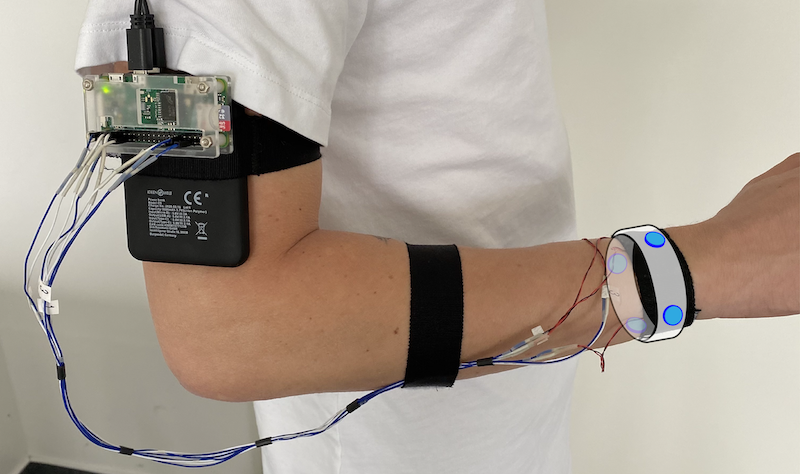
PriView - Exploring Visualisations to Support Users' Privacy Awareness
Sarah Prange (Bundeswehr University Munich, LMU Munich), Ahmed Shams (German University in Cairo), Robin Piening (LMU Munich), Yomna Abdelrahman (Bundeswehr University Munich), Florian Alt (Bundeswehr University Munich)
Abstract | Tags: Full Paper | Links:
@inproceedings{2021PrangePriView,
title = {PriView - Exploring Visualisations to Support Users' Privacy Awareness},
author = {Sarah Prange (Bundeswehr University Munich, LMU Munich) and Ahmed Shams (German University in Cairo) and Robin Piening (LMU Munich) and Yomna Abdelrahman (Bundeswehr University Munich) and Florian Alt (Bundeswehr University Munich)},
url = {https://www.unibw.de/usable-security-and-privacy, Website - Usable Security and Privacy Group, Research Institute CODE
https://www.unibw.de/usable-security-and-privacy-en/research/projects/priview, Project Website
https://youtu.be/o2CAhVFsjNk, YouTube Teaser Video},
doi = {10.1145/3411764.3445067},
year = {2021},
date = {2021-05-01},
abstract = {We present PriView, a concept that allows privacy-invasive devices in the users’ vicinity to be visualised. PriView is motivated by an ever-increasing number of sensors in our environments tracking potentially sensitive data (e.g., audio and video). At the same time, users are oftentimes unaware of this, which violates their privacy. Knowledge about potential recording would enable users to avoid accessing such areas or not to disclose certain information. We built two prototypes: a) a mobile application capable of detecting smart devices in the environment using a thermal camera, and b) VR mockups of six scenarios where PriView might be useful (e.g., a rental apartment). In both, we included several types of visualisation. Results of our lab study (N=24) indicate that users prefer simple, permanent indicators while wishing for detailed visualisations on demand. Our exploration is meant to support future designs of privacy visualisations for varying smart environments.},
keywords = {Full Paper},
pubstate = {published},
tppubtype = {inproceedings}
}
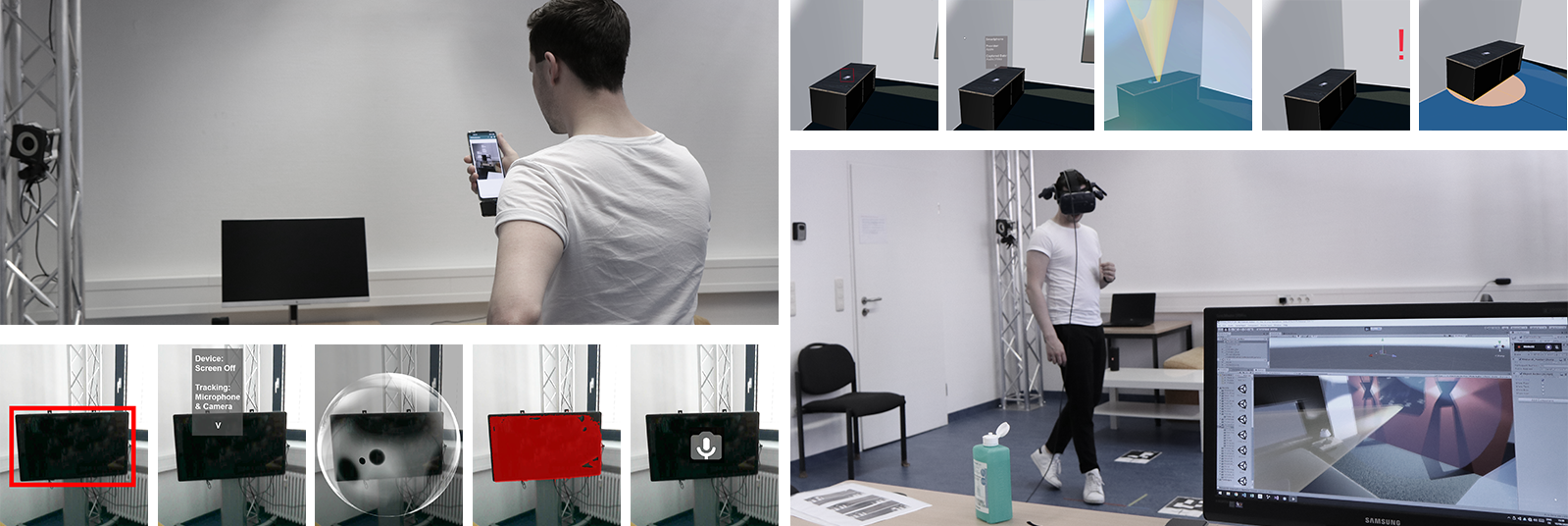
Quantified Cycling Safety: Towards a Mobile Sensing Platform to Understand Perceived Safety of Cyclists
Andrii Matviienko (Technical University of Darmstadt), Florian Heller (Hasselt University), Bastian Pfleging (Eindhoven University of Technology)
Abstract | Tags: Late Breaking Work | Links:
@inproceedings{2021MatviienkoQuantified,
title = {Quantified Cycling Safety: Towards a Mobile Sensing Platform to Understand Perceived Safety of Cyclists},
author = {Andrii Matviienko (Technical University of Darmstadt) and Florian Heller (Hasselt University) and Bastian Pfleging (Eindhoven University of Technology)},
url = {https://teamdarmstadt.de, Website - Team Darmstadt
https://www.facebook.com/teamdarmstadt, Facebook - Team Darmstadt},
doi = {10.1145/3411763.3451678},
year = {2021},
date = {2021-05-01},
abstract = {Today's level of cyclists' road safety is primarily estimated using accident reports and self-reported measures. However, the former is focused on post-accident situations and the latter relies on subjective input. In our work, we aim to extend the landscape of cyclists' safety assessment methods via a two-dimensional taxonomy, which covers data source (internal/external) and type of measurement (objective/subjective). Based on this taxonomy, we classify existing methods and present a mobile sensing concept for quantified cycling safety that fills the identified methodological gap by collecting data about body movements and physiological data. Finally, we outline a list of use cases and future research directions within the scope of the proposed taxonomy and sensing concept.},
keywords = {Late Breaking Work},
pubstate = {published},
tppubtype = {inproceedings}
}

Questionnaires and Qualitative Feedback Methods to Measure User Experience in Mixed Reality
Tobias Drey (Ulm University), Michael Rietzler (Ulm University), Enrico Rukzio (Ulm University)
Abstract | Tags: Other | Links:
@inproceedings{2021DreyQuestionnaires,
title = {Questionnaires and Qualitative Feedback Methods to Measure User Experience in Mixed Reality},
author = {Tobias Drey (Ulm University) and Michael Rietzler (Ulm University) and Enrico Rukzio (Ulm University)},
url = {https://arxiv.org/abs/2104.06221},
doi = {-},
year = {2021},
date = {2021-05-01},
abstract = {Evaluating the user experience of a software system is an essential final step of every research. Several concepts such as flow, affective state, presences, or immersion exist to measure user experience. Typical measurement techniques analyze physiological data, gameplay data, and questionnaires. Qualitative feedback methods are another approach to collect detailed user insights. In this position paper, we will discuss how we used questionnaires and qualitative feedback methods in previous mixed reality work to measure user experience. We will present several measurement examples, discuss their current limitations, and provide guideline propositions to support comparable mixed reality user experience research in the future.},
keywords = {Other},
pubstate = {published},
tppubtype = {inproceedings}
}
Quick, Print This Page! The Value of Analogue Media in a Digital World
Luke Haliburton (LMU Munich), Matthias Hoppe (LMU Munich), Albrecht Schmidt (LMU Munich), Thomas Kosch (TU Darmstadt)
Abstract | Tags: alt.chi | Links:
@inproceedings{2021HaliburtonQuick,
title = {Quick, Print This Page! The Value of Analogue Media in a Digital World},
author = {Luke Haliburton (LMU Munich) and Matthias Hoppe (LMU Munich) and Albrecht Schmidt (LMU Munich) and Thomas Kosch (TU Darmstadt)},
url = {https://www.um.informatik.uni-muenchen.de/, Website - Human-Centered Ubiquitous Media},
doi = {10.1145/3411763.3450375},
year = {2021},
date = {2021-05-01},
abstract = {Quick, print this page! (Hint: Print to PDF will also work, or check the supplementary material if you are having access trouble!) Otherwise, the information in this document might be digitally manipulated, and initial creative intention and contribution will be changed. You will lose your access to this document when the database containing this paper is decommissioned or compromised. This paper highlights the relevance of features from analogue media in an increasingly fragile digital world. Digital content can be altered to change its meaning or be deleted altogether. In analogue media, this is much more difficult without anyone noticing. Just imagine the impact if YouTube was decommissioned and all its content was rendered unavailable. In this paper, we outline concrete commercial examples and insight from the research of issues with distribution, storage, and manipulation of digital media and its impact on users. We conclude with strategies to preserve content, access, and artistic freedom in an increasingly digital future.},
keywords = {alt.chi},
pubstate = {published},
tppubtype = {inproceedings}
}
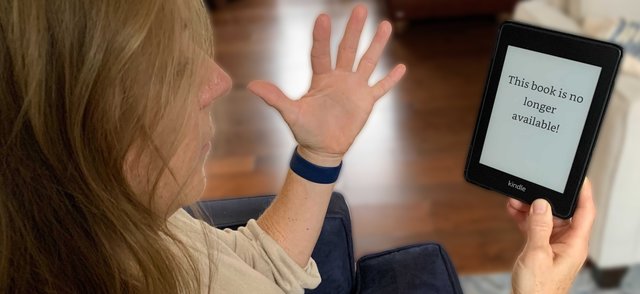
Reading in VR: The Effect of Text Presentation Type and Location
Rufat Rzayev (University of Regensburg), Polina Ugnivenko (University of Regensburg), Sarah Graf (University of Regensburg), Valentin Schwind (Frankfurt University of Applied Sciences), Niels Henze (University of Regensburg)
Abstract | Tags: Full Paper | Links:
@inproceedings{2021RzayevReading,
title = {Reading in VR: The Effect of Text Presentation Type and Location},
author = {Rufat Rzayev (University of Regensburg) and Polina Ugnivenko (University of Regensburg) and Sarah Graf (University of Regensburg) and Valentin Schwind (Frankfurt University of Applied Sciences) and Niels Henze (University of Regensburg)},
url = {interactionlab.io, Website - InteractionLab.io
https://www.facebook.com/InteractionLab.io, Facebook - InteractionLab.io},
doi = {10.1145/3411764.3445606},
year = {2021},
date = {2021-05-01},
abstract = {Reading is a fundamental activity to obtain information both in the real and the digital world. Virtual reality (VR) allows novel approaches for users to view, read, and interact with a text. However, for efficient reading, it is necessary to understand how a text should be displayed in VR without impairing the VR experience. Therefore, we conducted a study with 18 participants to investigate text presentation type and location in VR. We compared world-fixed, edge-fixed, and head-fixed text locations. Texts were displayed using Rapid Serial Visual Presentation (RSVP) or as a paragraph. We found that RSVP is a promising presentation type for reading short texts displayed in edge-fixed or head-fixed location in VR. The paragraph presentation type using world-fixed or edge-fixed location is promising for reading long text if movement in the virtual environment is not required. Insights from our study inform the design of reading interfaces for VR applications.},
keywords = {Full Paper},
pubstate = {published},
tppubtype = {inproceedings}
}
Real-World Presence in the Era of Ubiquitous Computing
Nađa Terzimehić (LMU Munich)
Abstract | Tags: Other | Links:
@inproceedings{2021TerzimehicRealWorld,
title = {Real-World Presence in the Era of Ubiquitous Computing},
author = {Nađa Terzimehić (LMU Munich)},
url = {https://www.medien.ifi.lmu.de/, Media Informatics Group LMU Munich
http://www.medien.ifi.lmu.de/team/nadja.terzimehic/Poster_DC_BetweenWorlds_white.png, Doctoral Consortium Poster},
doi = {10.1145/3411763.3443427},
year = {2021},
date = {2021-05-01},
abstract = {In the era of everyday ubiquitous computing, all of us have at least once lost track of time, space or our social environment when using our smartphone. In such situations, we might not feel present in the here and now in the physical real world. Presence has been a long term topic of interest in virtual reality research as the feeling of being there, in a technology-mediated virtual world. However, we have yet to understand our feeling of being here and now in the physical real world under the wide availability and easy accessibility of smartphones. In my thesis, I want to examine the concept of real-world presence from a theoretical, users’ and technology development perspective. I aim at understanding current and developing new mobile solutions, with the goal of supporting our presence in the physical real world.},
keywords = {Other},
pubstate = {published},
tppubtype = {inproceedings}
}
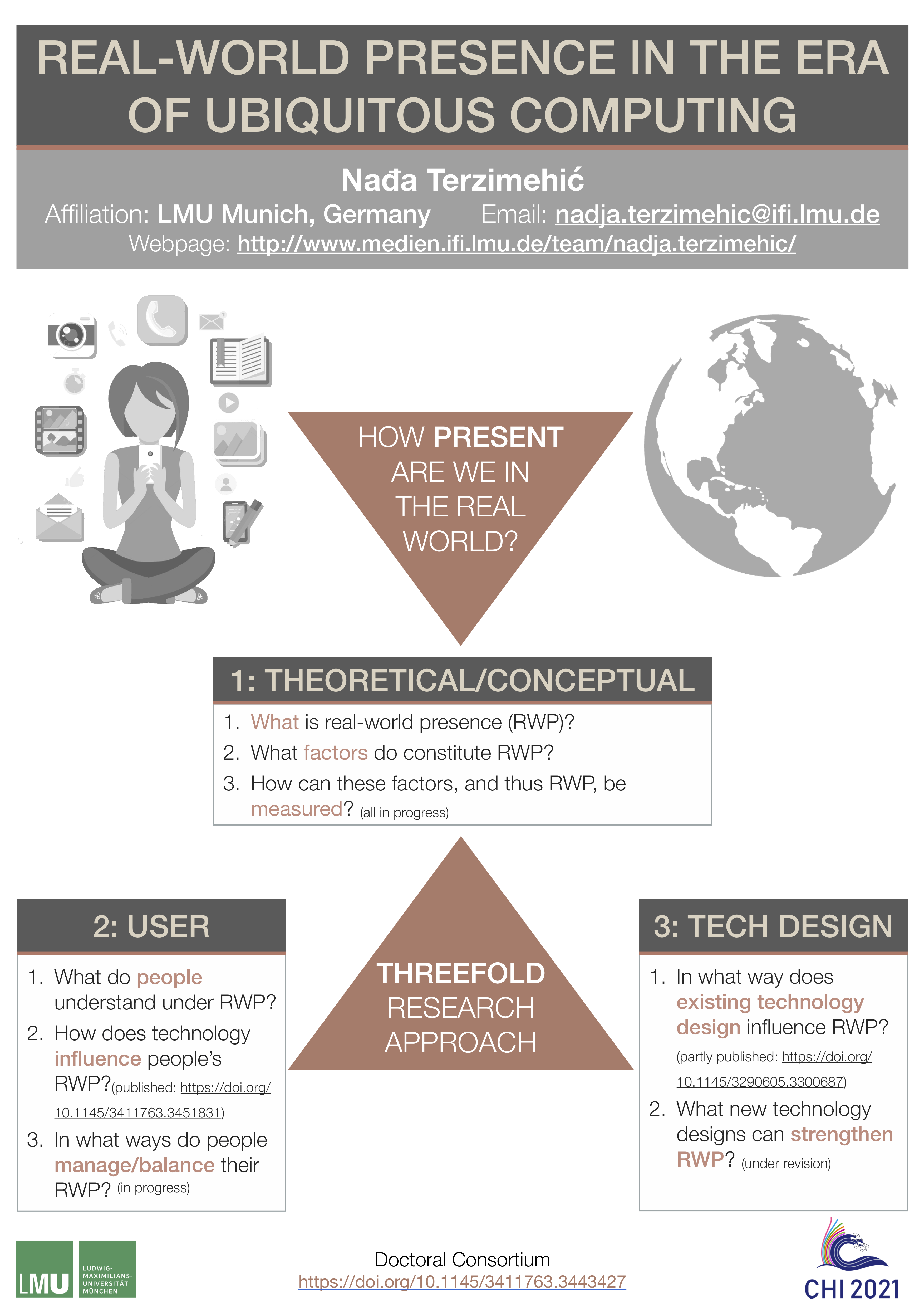
ReverseORC: Reverse Engineering of Resizable User Interface Layouts with OR-Constraints
Yue Jiang (Max Planck Institute for Informatics), Wolfgang Stuerzlinger (Simon Fraser University), Christof Lutteroth (University of Bath)
Abstract | Tags: Full Paper | Links:
@inproceedings{2021JiangReverse,
title = {ReverseORC: Reverse Engineering of Resizable User Interface Layouts with OR-Constraints},
author = {Yue Jiang (Max Planck Institute for Informatics) and Wolfgang Stuerzlinger (Simon Fraser University) and Christof Lutteroth (University of Bath)},
url = {https://yuejiang-nj.github.io/, Website - Yue Jiang
https://twitter.com/YueJiang_nj, Twitter - Yue Jiang
https://youtu.be/D9H4V4Tff6A, YouTube - Teaser
https://youtu.be/uBVRtUvLFSk, YouTube - Video},
doi = {10.1145/3411764.3445043},
year = {2021},
date = {2021-05-01},
abstract = {Reverse engineering (RE) of user interfaces (UIs) plays an important role in software evolution. However, the large diversity of UI technologies and the need for UIs to be resizable make this challenging.
We propose ReverseORC, a novel RE approach able to discover diverse layout types and their dynamic resizing behaviours independently of their implementation, and to specify them by using OR constraints. Unlike previous RE approaches, ReverseORC infers flexible layout constraint specifications by sampling UIs at different sizes and analyzing the differences between them. It can create specifications that replicate even some non-standard layout managers with complex dynamic layout behaviours. We demonstrate that ReverseORC works across different platforms with very different layout approaches, e.g., for GUIs as well as for the Web. Furthermore, it can be used to detect and fix problems in legacy UIs, extend UIs with enhanced layout behaviours, and support the creation of flexible UI layouts.},
keywords = {Full Paper},
pubstate = {published},
tppubtype = {inproceedings}
}
We propose ReverseORC, a novel RE approach able to discover diverse layout types and their dynamic resizing behaviours independently of their implementation, and to specify them by using OR constraints. Unlike previous RE approaches, ReverseORC infers flexible layout constraint specifications by sampling UIs at different sizes and analyzing the differences between them. It can create specifications that replicate even some non-standard layout managers with complex dynamic layout behaviours. We demonstrate that ReverseORC works across different platforms with very different layout approaches, e.g., for GUIs as well as for the Web. Furthermore, it can be used to detect and fix problems in legacy UIs, extend UIs with enhanced layout behaviours, and support the creation of flexible UI layouts.

Serious Snacking: A Survival Analysis of how Snacking Mechanics Affect Attrition in a Mobile Serious Game
Dmitry Alexandrovsky (DMLab, University of Bremen), Maximilian Achim Friehs (University College Dublin), Jendrik Grittner (University of Bremen), Susanne Putze (DMLab, University of Bremen), Max V. Birk (Eindhoven University of Technology), Rainer Malaka (DMLab, University of Bremen), Regan L. Mandryk (University of Saskatchewan)
Abstract | Tags: Full Paper | Links:
@inproceedings{2021AlexandrovskySerious,
title = {Serious Snacking: A Survival Analysis of how Snacking Mechanics Affect Attrition in a Mobile Serious Game},
author = {Dmitry Alexandrovsky (DMLab, University of Bremen) and Maximilian Achim Friehs (University College Dublin) and Jendrik Grittner (University of Bremen) and Susanne Putze (DMLab, University of Bremen) and Max V. Birk (Eindhoven University of Technology) and Rainer Malaka (DMLab, University of Bremen) and Regan L. Mandryk (University of Saskatchewan)},
url = {http://dm.tzi.de, Website - DMLab
https://www.youtube.com/watch?v=N5zGyauM-qk, YouTube - Teaser},
doi = {10.1145/3411764.3445689},
year = {2021},
date = {2021-05-01},
abstract = {Many serious games are most effective when played regularly; however, little is known about how individual game elements support player adherence over time. This work draws on evidence from existing frameworks and game design theories as well as from the design of casual games to investigate how individual game mechanics affect player attrition in a serious game. We implemented a math-learning game in which we could individually layer various game mechanics, and over the course of $3$ weeks, $99$ participants played one of six versions: Baseline, Rewards, Novelty, Completion, Waiting, or Blocking. We compared the game versions by analyzing the players' performance as well as behaviour. Using survival analysis, we identified that the addition of Completion and Blocking mechanics facilitated the strongest sustained engagement. These findings are congruent with existing theories of player experience and promote the development of guidelines on designing for sustained engagement in serious games.},
keywords = {Full Paper},
pubstate = {published},
tppubtype = {inproceedings}
}
Sharing Heartbeats: Motivations of Citizen Scientists in Times of Crises
Daniel Diethei (University of Bremen), Jasmin Niess (University of Bremen), Carolin Stellmacher (University of Bremen), Evropi Stefanidi (University of Bremen), Johannes Schöning (University of Bremen)
Abstract | Tags: Full Paper | Links:
@inproceedings{2021DietheiSharing,
title = {Sharing Heartbeats: Motivations of Citizen Scientists in Times of Crises},
author = {Daniel Diethei (University of Bremen) and Jasmin Niess (University of Bremen) and Carolin Stellmacher (University of Bremen) and Evropi Stefanidi (University of Bremen) and Johannes Schöning (University of Bremen)},
url = {http://hci.uni-bremen.de/, Website - HCI University of Bremen
https://twitter.com/hcibremen, Twitter - HCI University of Bremen
https://youtu.be/YSDmENCVH9A, YouTube - Video Teaser},
doi = {10.1145/3411764.3445665},
year = {2021},
date = {2021-05-01},
abstract = {With the rise of COVID-19 cases globally, many countries released digital tools to mitigate the effects of the pandemic. In Germany the Robert Koch Institute (RKI) published the Corona-Data-Donation- App, a virtual citizen science (VCS) project, to establish an early warning system for the prediction of potential COVID-19 hotspots using data from wearable devices. While work on motivation for VCS projects in HCI often presents egoistic motives as prevailing, there is little research on such motives in crises situations. In this pa- per, we explore the socio-psychological processes and motivations to share personal data during a pandemic. Our findings indicate that collective motives dominated among app reviews (n=464) and in in-depth interviews (n=10). We contribute implications for fu- ture VCS tools in times of crises that highlight the importance of communication, transparency and responsibility.},
keywords = {Full Paper},
pubstate = {published},
tppubtype = {inproceedings}
}
Shortcut Gestures for Mobile Text Editing on Fully Touch Sensitive Smartphones
Huy Viet Le (University of Stuttgart), Sven Mayer (LMU Munich), Maximilian Weiß (University of Stuttgart), Jonas Vogelsang (University of Stuttgart), Henrike Weingärtner (University of Stuttgart), Niels Henze (University of Regensburg)
Abstract | Tags: | Links:
@article{2021LeShortcut,
title = {Shortcut Gestures for Mobile Text Editing on Fully Touch Sensitive Smartphones},
author = {Huy Viet Le (University of Stuttgart) and Sven Mayer (LMU Munich) and Maximilian Weiß (University of Stuttgart) and Jonas Vogelsang (University of Stuttgart) and Henrike Weingärtner (University of Stuttgart) and Niels Henze (University of Regensburg)},
url = {http://interactionlab.io, Website - InteractionLab.io
https://www.facebook.com/InteractionLab.io, Facebook - InteractionLab.io},
doi = {10.1145/3396233},
year = {2021},
date = {2021-05-01},
abstract = {While advances in mobile text entry enable smartphone users to type almost as fast as on hardware keyboards, text-heavy activities are still not widely adopted. One reason is the lack of shortcut mechanisms. In this article, we determine shortcuts for text-heavy activities, elicit shortcut gestures, implement them for a fully touch-sensitive smartphone, and conduct an evaluation with potential users. We found that experts perform around 800 keyboard shortcuts per day, which are not available on smartphones. Interviews revealed the lack of shortcuts as a major limitation that prevents mobile text editing. Therefore, we elicited gestures for the 22 most important shortcuts for smartphones that are touch-sensitive on the whole device surface. We implemented the gestures for a fully touch-sensitive smartphone using deep learning and evaluated them in realistic scenarios to gather feedback. We show that the developed prototype is perceived as intuitive and faster than recent commercial approaches.},
keywords = {},
pubstate = {published},
tppubtype = {article}
}
SoloFinger: Robust Microgestures while Grasping Everyday Object
Adwait Sharma (Saarland Informatics Campus), Michael A. Hedderich (Saarland Informatics Campus) and Divyanshu Bhardwaj (Saarland Informatics Campus), Bruno Fruchard (Saarland Informatics Campus), Jess McIntosh (University of Copenhagen), Aditya Shekhar Nittala (Saarland Informatics Campus), Dietrich Klakow (Saarland Informatics Campus), Daniel Ashbrook (University of Copenhagen), Jürgen Steimle (Saarland Informatics Campus)
Abstract | Tags: Full Paper | Links:
@inproceedings{2021SharmaSoloFinger,
title = {SoloFinger: Robust Microgestures while Grasping Everyday Object},
author = {Adwait Sharma (Saarland Informatics Campus) and Michael A. Hedderich (Saarland Informatics Campus) and
Divyanshu Bhardwaj (Saarland Informatics Campus) and Bruno Fruchard (Saarland Informatics Campus) and Jess McIntosh (University of Copenhagen) and Aditya Shekhar Nittala (Saarland Informatics Campus) and Dietrich Klakow (Saarland Informatics Campus) and Daniel Ashbrook (University of Copenhagen) and Jürgen Steimle (Saarland Informatics Campus)},
url = {https://hci.cs.uni-saarland.de/, Website - HCI Saarland University
https://hci.cs.uni-saarland.de/, YouTube - Video Teaser},
doi = {10.1145/3411764.3445197},
year = {2021},
date = {2021-05-01},
abstract = {Using microgestures, prior work has successfully enabled gestural interactions while holding objects. Yet, these existing methods are prone to false activations caused by natural finger movements while holding or manipulating the object. We address this issue with SoloFinger, a novel concept that allows design of microgestures that are robust against movements that naturally occur during primary activities. Using a data-driven approach, we establish that single-finger movements are rare in everyday hand-object actions and infer a single-finger input technique resilient to false activation. We demonstrate this concept's robustness using a white-box classifier on a pre-existing dataset comprising 36 everyday hand-object actions. Our findings validate that simple SoloFinger gestures can relieve the need for complex finger configurations or delimiting gestures and that SoloFinger is applicable to diverse hand-object actions. Finally, we demonstrate SoloFinger's high performance on commodity hardware using random forest classifiers.},
keywords = {Full Paper},
pubstate = {published},
tppubtype = {inproceedings}
}
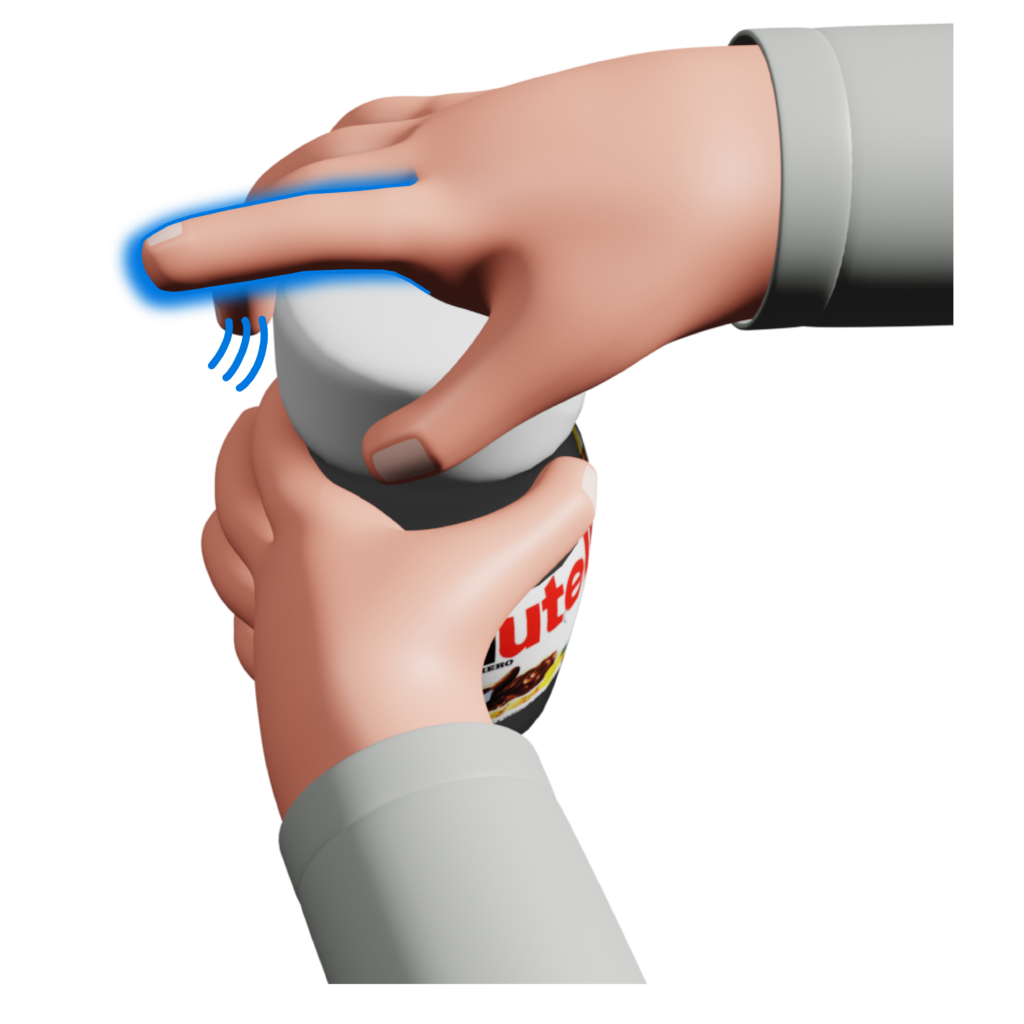
SpatialProto: Exploring Real-World Motion Captures for Rapid Prototyping of Interactive Mixed Reality
Leon Müller (LMU Munich, Germany), Ken Pfeuffer (Bundeswehr University Munich), Jan Gugenheimer (Télécom Paris - LTCI Institut, Polytechnique de Paris, Paris, France), Bastian Pfleging (Eindhoven University of Technology, Eindhoven, Netherlands, LMU Munich, Munich, Germany), Sarah Prange (Bundeswehr University Munich, Munich, Germany, LMU Munich, Munich, Germany), Florian Alt (Bundeswehr University Munich, Munich, Germany)
Abstract | Tags: Full Paper | Links:
@inproceedings{Mueller2021Spatial,
title = {SpatialProto: Exploring Real-World Motion Captures for Rapid Prototyping of Interactive Mixed Reality},
author = {Leon Müller (LMU Munich, Germany) and Ken Pfeuffer (Bundeswehr University Munich) and Jan Gugenheimer (Télécom Paris - LTCI Institut and Polytechnique de Paris, Paris, France) and Bastian Pfleging (Eindhoven University of Technology, Eindhoven, Netherlands and LMU Munich, Munich, Germany) and Sarah Prange (Bundeswehr University Munich, Munich, Germany and LMU Munich, Munich, Germany) and
Florian Alt (Bundeswehr University Munich, Munich, Germany)},
url = {https://www.unibw.de/usable-security-and-privacy (BW Uni lab page)
http://www.medien.ifi.lmu.de/ (LMU lab page)
https://youtu.be/uMY7myjt4e4 (teaser)
https://youtu.be/hKr0HsgJ19U (video figure)},
doi = {10.1145/3411764.3445560},
year = {2021},
date = {2021-05-07},
publisher = {ACM},
abstract = {Spatial computing devices that blend virtual and real worlds have the potential to soon become ubiquitous. Yet, creating experiences for spatial computing is non-trivial and needs skills in programming and 3D content creation, rendering them inaccessible to a wider group of users. We present SpatialProto, an in-situ spatial prototyping system for lowering the barrier to engage in spatial prototyping. With a depth-sensing capable mixed reality headset, SpatialProto lets users record animated objects of the real-world environment (e.g. paper, clay, people, or any other prop), extract only the relevant parts, and directly place and transform these recordings in their physical environment. We describe the design and implementation of SpatialProto, a user study evaluating the system's prototype with non-expert users (n = 9), and demonstrate applications where multiple captures are fused for compelling augmented reality experiences.},
note = {Joint work between UniBW, LMU, Télécom Paris and TU/e. Was a bachelor thesis at LMU, but supervised at UniBW},
keywords = {Full Paper},
pubstate = {published},
tppubtype = {inproceedings}
}

Squish This: Force Input on Soft Surfaces for Visual Targeting Tasks
Bruno Fruchard (Saarland Informatics Campus), Paul Strohmeier (Saarland Informatics Campus), Roland Bennewitz (Leibniz Institute for New Materials), Jürgen Steimle (Saarland Informatics Campus)
Abstract | Tags: Full Paper | Links:
@inproceedings{2021FruchardSquish,
title = {Squish This: Force Input on Soft Surfaces for Visual Targeting Tasks},
author = {Bruno Fruchard (Saarland Informatics Campus), Paul Strohmeier (Saarland Informatics Campus), Roland Bennewitz (Leibniz Institute for New Materials), Jürgen Steimle (Saarland Informatics Campus)},
url = {https://hci.cs.uni-saarland.de/projects/squish-this/, Project Website
https://www.youtube.com/watch?v=6-Gb_Eo6ERo, YouTube Teaser Video},
doi = {10.1145/3411764.3445623},
year = {2021},
date = {2021-05-01},
abstract = {Today's typical input device is flat, rigid and made of glass. However, advances in sensing technology and interaction design suggest thinking about input on other surface, including soft materials. While touching rigid and soft materials might feel similar, they clearly feel different when pressure is applied to them. Yet, to date, studies only investigated force input on rigid surfaces. We present a first systematic evaluation of the effects of compliance on force input. Results of a visual targeting task for three levels of softness indicate that high force levels appear more demanding for soft surfaces, but that performance is otherwise similar. Performance remained very high (~5% for 20 force levels) regardless of the compliance, suggesting force input was underestimated so far. We infer implications for the design of force input on soft surfaces and conclude that interaction models used on rigid surfaces might be used on soft surfaces.},
keywords = {Full Paper},
pubstate = {published},
tppubtype = {inproceedings}
}

STREAM: Exploring the Combination of Spatially-Aware Tablets with Augmented Reality Head-Mounted Displays for Immersive Analytics
Sebastian Hubenschmid (University of Konstanz), Johannes Zagermann (University of Konstanz), Simon Butscher (University of Konstanz), Harald Reiterer (University of Konstanz)
Abstract | Tags: Full Paper | Links:
@inproceedings{2021HubenschmidStream,
title = {STREAM: Exploring the Combination of Spatially-Aware Tablets with Augmented Reality Head-Mounted Displays for Immersive Analytics},
author = {Sebastian Hubenschmid (University of Konstanz) and Johannes Zagermann (University of Konstanz) and Simon Butscher (University of Konstanz) and Harald Reiterer (University of Konstanz)},
url = {https://hci.uni-konstanz.de/en/, Website - HCI Group Konstanz
https://twitter.com/HCIGroupKN, Twitter - @HCIGroupKN
https://youtu.be/sIfW0Q3HGZI, YouTube - Teaser Video
https://www.youtube.com/watch?v=BtwAbytRrJQ, YouTube - Video Figure
https://github.com/hcigroupkonstanz/STREAM, Find STREAM on GitHub},
doi = {10.1145/3411764.3445298},
year = {2021},
date = {2021-05-01},
abstract = {Recent research in the area of immersive analytics demonstrated the utility of head-mounted augmented reality devices for visual data analysis. However, it can be challenging to use the by default supported mid-air gestures to interact with visualizations in augmented reality (e.g. due to limited precision). Touch-based interaction (e.g. via mobile devices) can compensate for these drawbacks, but is limited to two-dimensional input. In this work we present STREAM: Spatially-aware Tablets combined with Augmented Reality Head-Mounted Displays for the multimodal interaction with 3D visualizations. We developed a novel eyes-free interaction concept for the seamless transition between the tablet and the augmented reality environment. A user study reveals that participants appreciated the novel interaction concept, indicating the potential for spatially-aware tablets in augmented reality. Based on our findings, we provide design insights to foster the application of spatially-aware touch devices in augmented reality and research implications indicating areas that need further investigation.},
keywords = {Full Paper},
pubstate = {published},
tppubtype = {inproceedings}
}
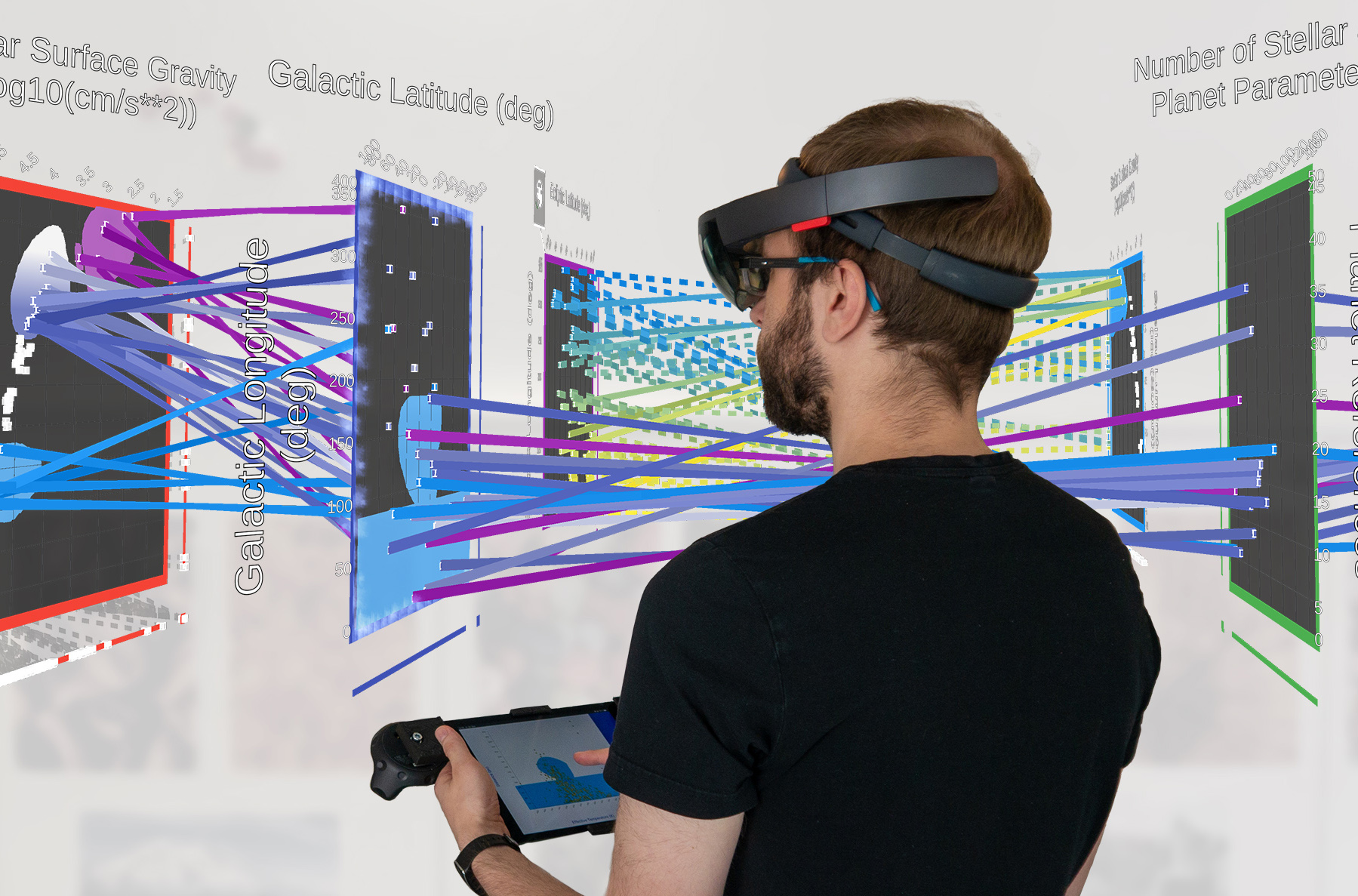
The Development and Validation of the Technology-Supported Reflection Inventory
Marit Bentvelzen (Utrecht University), Jasmin Niess (University of Bremen), Mikołaj P. Woźniak (Lodz University of Technology), Paweł W. Woźniak (Utrecht University)
Abstract | Tags: Full Paper, Honorable Mention | Links:
@inproceedings{Bentvelzen2021,
title = {The Development and Validation of the Technology-Supported Reflection Inventory},
author = {Marit Bentvelzen (Utrecht University) and Jasmin Niess (University of Bremen) and Mikołaj P. Woźniak (Lodz University of Technology) and Paweł W. Woźniak (Utrecht University)},
url = {https://twitter.com/HCIBremen
https://hci.uni-bremen.de/ (lab page)
https://www.youtube.com/watch?v=ZuJRehDJf-4 (teaser)},
doi = {10.1145/3411764.3445673},
year = {2021},
date = {2021-05-07},
publisher = {ACM},
abstract = {Reflection is an often addressed design goal in Human-Computer Interaction (HCI) research. An increasing number of artefacts for reflection have been developed in recent years. However, evaluating if and how an interactive technology helps a user reflect is still complex. This makes it difficult to compare artefacts (or prototypes) for reflection, impeding future design efforts. To address this issue, we developed the Technology-Supported Reflection Inventory (TSRI), which is a scale that evaluates how effectively a system supports reflection. We first created a list of possible scale items based on past work in defining reflection. The items were then reviewed by experts. Next, we performed exploratory factor analysis to reduce the scale to its final length of nine items. Subsequently, we confirmed test-retest validity of our instrument, as well as its construct validity. The TSRI enables researchers and practitioners to compare prototypes designed to support reflection. },
keywords = {Full Paper, Honorable Mention},
pubstate = {published},
tppubtype = {inproceedings}
}
The Impact of Multiple Parallel Phrase Suggestions on Email Input and Composition Behaviour of Native and Non-Native English Writers
Daniel Buschek (University of Bayreuth), Martin Zürn (LMU Munich), Malin Eiband (LMU Munich)
Abstract | Tags: Full Paper, Honorable Mention | Links:
@inproceedings{2021BuschekImpact,
title = {The Impact of Multiple Parallel Phrase Suggestions on Email Input and Composition Behaviour of Native and Non-Native English Writers},
author = {Daniel Buschek (University of Bayreuth) and Martin Zürn (LMU Munich) and Malin Eiband (LMU Munich)},
url = {https://www.hciai.uni-bayreuth.de/, Website - HCI+AI University of Bayreuth
https://twitter.com/DBuschek, Twitter - Daniel Buschek
https://www.youtube.com/watch?v=i-McZMd93fk, YouTube - Teaser Video
https://www.youtube.com/watch?v=NyDy3FtWpo0, YouTube - Video Figure
https://uxdesign.cc/how-can-ai-help-you-write-emails-eedd901bcdf2, Blogpost},
doi = {10.1145/3411764.3445372},
year = {2021},
date = {2021-05-01},
abstract = {We present an in-depth analysis of the impact of multi-word suggestion choices from a neural language model on user behaviour regarding input and text composition in email writing. Our study for the first time compares different numbers of parallel suggestions, and use by native and non-native English writers, to explore a trade-off of "efficiency vs ideation", emerging from recent literature. We built a text editor prototype with a neural language model (GPT-2), refined in a prestudy with 30 people. In an online study (N=156), people composed emails in four conditions (0/1/3/6 parallel suggestions). Our results reveal (1) benefits for ideation, and costs for efficiency, when suggesting multiple phrases; (2) that non-native speakers benefit more from more suggestions; and (3) further insights into behaviour patterns. We discuss implications for research, the design of interactive suggestion systems, and the vision of supporting writers with AI instead of replacing them.},
keywords = {Full Paper, Honorable Mention},
pubstate = {published},
tppubtype = {inproceedings}
}
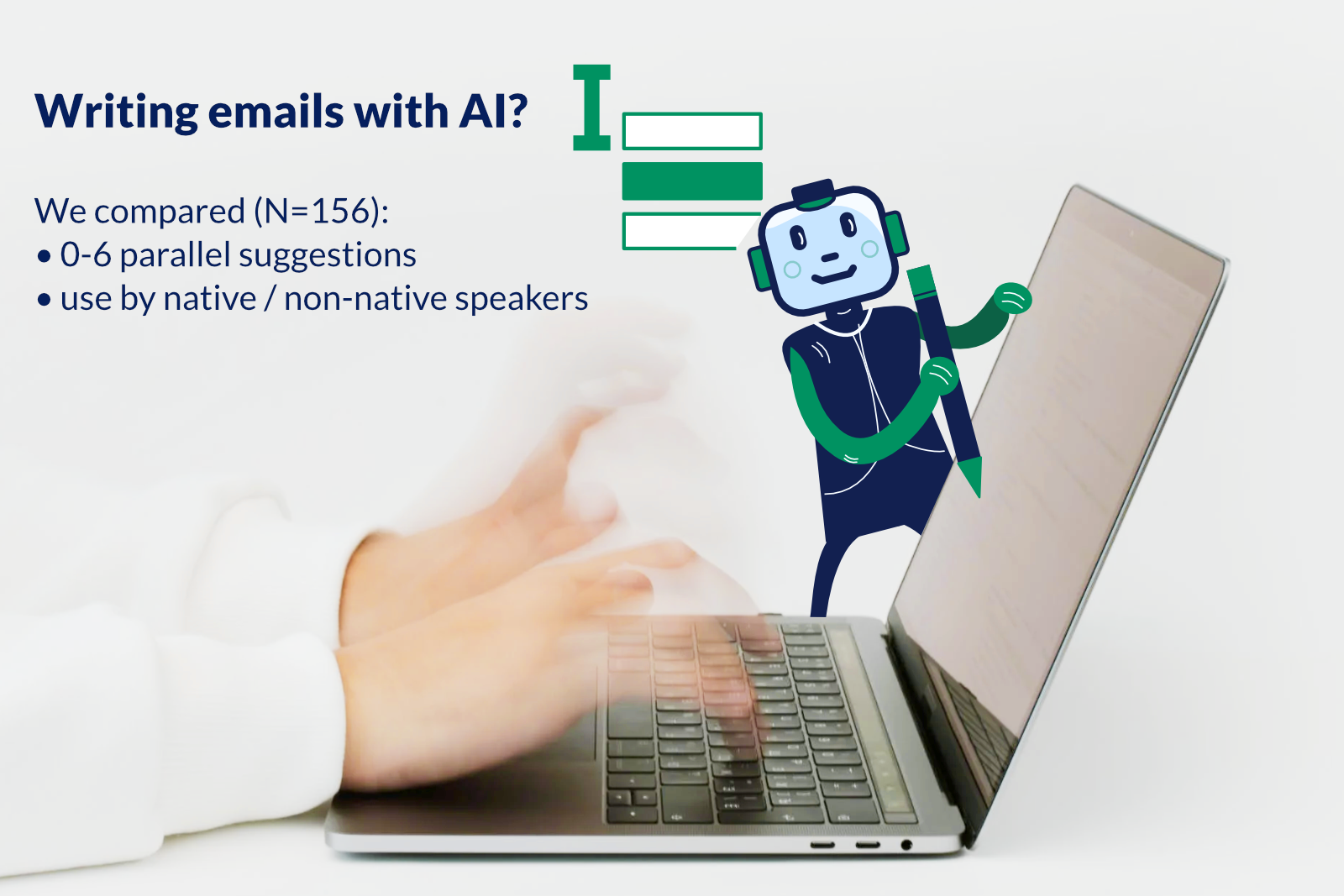
The Role of Social Presence for Cooperation in Augmented Reality on Head Mounted Devices
Niklas Osmers (TU Clausthal), Michael Prilla (TU Clausthal), Oliver Blunk (TU Clausthal), Gordon Brown (TU Clausthal), Marc Janssen (TU Clausthal), Nicolas Kahrl (TU Clausthal)
Abstract | Tags: Full Paper | Links:
@inproceedings{2021OsmersRole,
title = {The Role of Social Presence for Cooperation in Augmented Reality on Head Mounted Devices},
author = {Niklas Osmers (TU Clausthal) and Michael Prilla (TU Clausthal) and Oliver Blunk (TU Clausthal) and Gordon Brown (TU Clausthal) and Marc Janssen (TU Clausthal) and Nicolas Kahrl (TU Clausthal)},
url = {https://www.in.tu-clausthal.de/de/abteilungen/hcis/, Website - Human-Centered Information Systems
https://twitter.com/HCISGroup, Website - Human-Centered Information Systems},
doi = {10.1145/3411764.3445633},
year = {2021},
date = {2021-05-01},
abstract = {With growing interest regarding cooperation support using Augmented Reality (AR), social presence has become a popular measure of its quality. While this concept is established throughout cooperation research, its role in AR is still unclear: Some work uses social presence as an indicator for support quality, while others found no impact at all. To clarify this role, we conducted a literature review of recent publications that empirically investigated social presence in cooperative AR. After a thorough selection procedure, we analyzed 19 publications according to factors influencing social presence and the impact of social presence on cooperation support. We found that certain interventions support social presence better than others, that social presence has an influence on user’s preferences and that the relation between social presence and cooperation quality may depend on the symmetry of the cooperation task. This contributes to existing research by clarifying the role of social presence for cooperative AR and deriving corresponding design recommendations.},
keywords = {Full Paper},
pubstate = {published},
tppubtype = {inproceedings}
}
The Technology-Mediated Reflection Model: Barriers and Assistance in Data-Driven Reflection
Marit Bentvelzen (Utrecht University), Jasmin Niess (University of Bremen), Paweł W. Woźniak (Utrecht University)
Abstract | Tags: Full Paper | Links:
@inproceedings{Bentvelzen2021Barriers,
title = {The Technology-Mediated Reflection Model: Barriers and Assistance in Data-Driven Reflection},
author = {Marit Bentvelzen (Utrecht University) and Jasmin Niess (University of Bremen) and Paweł W. Woźniak (Utrecht University)},
url = {https://hci.uni-bremen.de/ (lab page)
https://twitter.com/HCIBremen
https://www.youtube.com/watch?v=03Z0ZBFIQg8 (teaser)},
doi = {10.1145/3411764.3445505},
year = {2021},
date = {2021-05-07},
publisher = {ACM},
abstract = {Current personal informatics models consider reflection as an important stage in users' journeys with trackers. However, these models describe reflection from a meta perspective and it remains unclear what this stage entails. To design interactive technologies that support reflection, we need a more thorough understanding of how people reflect on their personal data in practice. To that end, we conducted semi-structured interviews with users of fitness trackers and an online survey to study practices in reflecting on fitness data. Our results show that users reported reflecting on data despite lacking reflection support from their tracking technology. Based on our results, we introduce the Technology-Mediated Reflection Model, which describes conditions and barriers for reflection on personal data. Our model consists of the temporal and conceptual cycles of reflection and helps designers identify the possible barriers a user might face when using a system for reflection. },
keywords = {Full Paper},
pubstate = {published},
tppubtype = {inproceedings}
}
Think Harder! Investigating the Effect of Password Strength on Cognitive Load during Password Creation
Yasmeen Abdrabou (Bundeswehr University Munich), Yomna Abdelrahman (Bundeswehr University Munich), Mohamed Khamis (University of Glasgow), Florian Alt (Bundeswehr University Munich)
Abstract | Tags: Late Breaking Work | Links:
@inproceedings{2021AbdrabouThink,
title = {Think Harder! Investigating the Effect of Password Strength on Cognitive Load during Password Creation },
author = {Yasmeen Abdrabou (Bundeswehr University Munich) and Yomna Abdelrahman (Bundeswehr University Munich) and Mohamed Khamis (University of Glasgow) and Florian Alt (Bundeswehr University Munich)},
url = {https://www.unibw.de/usable-security-and-privacy-en/publikationen/publications, Website - Usable Security and Privacy Group, Research Institute CODE},
doi = {10.1145/3411763.3451636},
year = {2021},
date = {2021-05-01},
abstract = {Strict password policies can frustrate users, reduce their productivity, and lead them to write their passwords down. This paper investigates the relation between password creation and cognitive load inferred from eye pupil diameter. We use a wearable eye tracker to monitor the user’s pupil size while creating passwords
with different strengths. To assess how creating passwords of different strength (namely weak and strong) influences users’ cognitive load, we conducted a lab study (? = 15). We asked the participants
to create and enter 6 weak and 6 strong passwords. The results showed that passwords with different strengths affect the pupil diameter, thereby giving an indication of the user’s cognitive state. Our initial investigation shows the potential for new applications in the field of cognition-aware user interfaces. For example, future
systems can use our results to determine whether the user created a strong password based on their gaze behavior, without the need to reveal the characteristics of the password.},
keywords = {Late Breaking Work},
pubstate = {published},
tppubtype = {inproceedings}
}
with different strengths. To assess how creating passwords of different strength (namely weak and strong) influences users’ cognitive load, we conducted a lab study (? = 15). We asked the participants
to create and enter 6 weak and 6 strong passwords. The results showed that passwords with different strengths affect the pupil diameter, thereby giving an indication of the user’s cognitive state. Our initial investigation shows the potential for new applications in the field of cognition-aware user interfaces. For example, future
systems can use our results to determine whether the user created a strong password based on their gaze behavior, without the need to reveal the characteristics of the password.
Understanding Everyday Experiences of Reminiscence for People Living with Blindness: Practices, Tensions and Probing New Design Possibilities.
MinYoung Yoo (SFU Surrey), William Odom (SFU Surrey), Arne Berger (HS Anhalt)
Abstract | Tags: Full Paper | Links:
@inproceedings{2021YooUnderstanding,
title = {Understanding Everyday Experiences of Reminiscence for People Living with Blindness: Practices, Tensions and Probing New Design Possibilities.},
author = {MinYoung Yoo (SFU Surrey) and William Odom (SFU Surrey) and Arne Berger (HS Anhalt)},
url = {http://arneberger.net, Website - Arne Berger
twitter.com/arneberger, Twitter - Arne Berger},
doi = {10.1145/3411764.3445212},
year = {2021},
date = {2021-05-01},
abstract = {There is growing attention in the HCI community on how technology could be designed to support experiences of reminiscence on past life experiences. Yet, this research has largely overlooked people with blindness. We present a study that aims to understand everyday experiences of reminiscence for people with blindness. We conducted a qualitative study with 9 participants with blindness to understand their personal routines, wishes and desires, and challenges and tensions regarding the experience of reminiscence. Findings are interpreted to discuss new possibilities that offer starting points for future design initiatives and openings for collaboration aimed at creating technology to better support the practices of capturing, sharing, and reflecting on significant memories of the past.},
keywords = {Full Paper},
pubstate = {published},
tppubtype = {inproceedings}
}
Understanding the Design Space of Embodied Passwords Based on Muscle Memory
Rosa van Koningsbruggen, Bart Hengeveld, Jason Alexander
Abstract | Tags: Full Paper | Links:
@inproceedings{Koningsbruggen2021EmbodiedPW,
title = {Understanding the Design Space of Embodied Passwords Based on Muscle Memory},
author = { Rosa van Koningsbruggen and Bart Hengeveld and Jason Alexander},
doi = {10.1145/3411764.3445773},
isbn = {9781450380966},
year = {2021},
date = {2021-05-07},
booktitle = {Proceedings of the 2021 CHI Conference on Human Factors in Computing Systems},
publisher = {Association for Computing Machinery},
address = {Yokohama, Japan},
series = {CHI '21},
abstract = {Passwords have become a ubiquitous part of our everyday lives, needed for every web-service and system. However, it is challenging to create safe and diverse alphanumeric passwords, and to recall them, imposing a cognitive burden on the user. Through consecutive experiments, we explored the movement space, affordances and interaction, and memorability of a tangible, handheld, embodied password. In this context, we found that: (1) a movement space of 200 mm texttimes 200 mm is preferred; (2) each context has a perceived level of safety, which—together with the affordances and link to familiarity—influences how the password is performed. Furthermore, the artefact’s dimensions should be balanced within the design itself, with the user, and the context, but there is a trade-off between the perceived safety and ergonomics; and (3) the designed embodied passwords can be recalled for at least a week, with participants creating unique passwords which were reproduced consistently.},
keywords = {Full Paper},
pubstate = {published},
tppubtype = {inproceedings}
}
Understanding User Identification in Virtual Reality Through Behavioral Biometrics and the Effect of Body Normalization
Jonathan Liebers (University of Duisburg-Essen), Mark Abdelaziz (German University in Cairo), Lukas Mecke (Bundeswehr University Munich), Alia Saad (University of Duisburg-Essen), Jonas Auda (University of Duisburg-Essen), Uwe Grünefeld (University of Duisburg-Essen), Florian Alt (Bundeswehr University Munich), Stefan Schneegass (University of Duisburg-Essen)
Abstract | Tags: Full Paper | Links:
@inproceedings{2021LiebersUnderstanding,
title = {Understanding User Identification in Virtual Reality Through Behavioral Biometrics and the Effect of Body Normalization},
author = {Jonathan Liebers (University of Duisburg-Essen) and Mark Abdelaziz (German University in Cairo) and Lukas Mecke (Bundeswehr University Munich) and Alia Saad (University of Duisburg-Essen) and Jonas Auda (University of Duisburg-Essen) and Uwe Grünefeld (University of Duisburg-Essen) and Florian Alt (Bundeswehr University Munich) and Stefan Schneegass (University of Duisburg-Essen)},
url = {http://hcigroup.de/, Website - HCI Group University of Duisburg-Essen
https://www.youtube.com/channel/UCT6prTnDEH8zUSvKSykBa2w, YouTube Channel - HCI Group University of Duisburg-Essen
https://www.youtube.com/watch?v=LwJkXJtwbzE, YouTube - Video Teaser},
doi = {10.1145/3411764.3445528},
year = {2021},
date = {2021-05-01},
abstract = {Virtual Reality (VR) is becoming increasingly popular both in the entertainment and professional domains. Behavioral biometrics have recently been investigated as a means to continuously and implicitly identify users in VR. Applications in VR can specifically benefit from this, for example, to adapt virtual environments and user interfaces as well as to authenticate users. In this work, we conduct a lab study (N=16) to explore how accurately users can be identified during two task-driven scenarios based on their spatial movement. We show that an identification accuracy of up to 90% is possible across sessions recorded on different days. Moreover, we investigate the role of users' physiology in behavioral biometrics by virtually altering and normalizing their body proportions. We find that body normalization in general increases the identification rate, in some cases by up to 38%; hence, it improves the performance of identification systems.},
keywords = {Full Paper},
pubstate = {published},
tppubtype = {inproceedings}
}
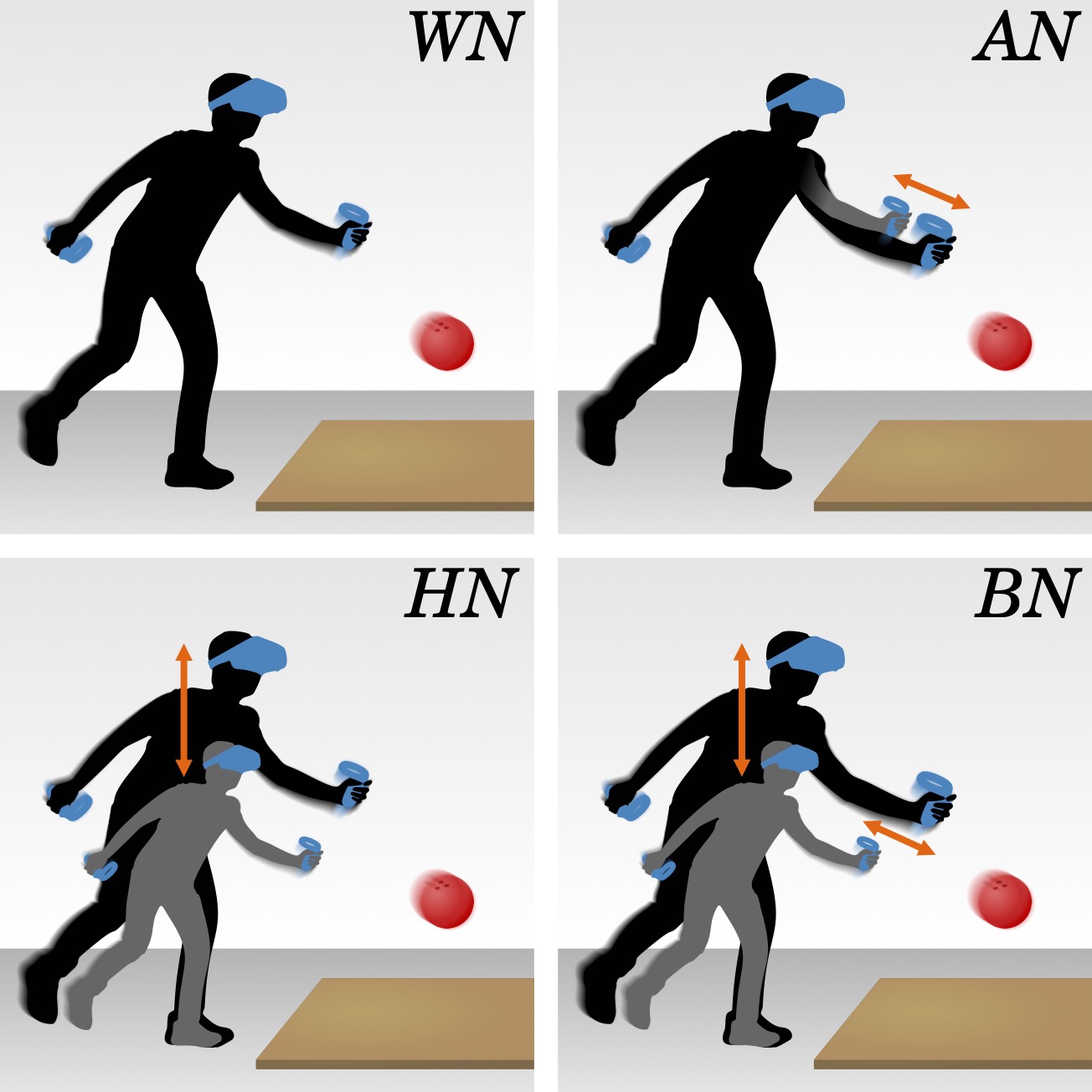
Ungrounded Vari-Dimensional Tactile Fingertip Feedback for Virtual Object Interaction
Eric M. Young (University of Pennsylvania & Max Planck Institute for Intelligent Systems), Katherine J. Kuchenbecker (Max Planck Institute for Intelligent Systems)
Abstract | Tags: Full Paper | Links:
@inproceedings{2021YoungUngrounded,
title = {Ungrounded Vari-Dimensional Tactile Fingertip Feedback for Virtual Object Interaction},
author = {Eric M. Young (University of Pennsylvania & Max Planck Institute for Intelligent Systems) and Katherine J. Kuchenbecker (Max Planck Institute for Intelligent Systems)},
url = {https://hi.is.mpg.de, Website - Haptic Intelligence Department},
doi = {10.1145/3411764.3445369},
year = {2021},
date = {2021-05-01},
abstract = {Compared to grounded force feedback, providing tactile feedback via a wearable device can free the user and broaden the potential applications of simulated physical interactions. However, neither the limitations nor the full potential of tactile-only feedback have been precisely examined. Here we investigate how the dimensionality of cutaneous fingertip feedback affects user movements and virtual object recognition. We combine a recently invented 6-DOF fingertip device with motion tracking, a head-mounted display, and novel contact-rendering algorithms to enable a user to tactilely explore immersive virtual environments. We evaluate rudimentary 1-DOF, moderate 3-DOF, and complex 6-DOF tactile feedback during shape discrimination and mass discrimination, also comparing to interactions with real objects. Results from 20 naive study participants show that higher-dimensional tactile feedback may indeed allow completion of a wider range of virtual tasks, but that feedback dimensionality surprisingly does not greatly affect the exploratory techniques employed by the user.},
keywords = {Full Paper},
pubstate = {published},
tppubtype = {inproceedings}
}
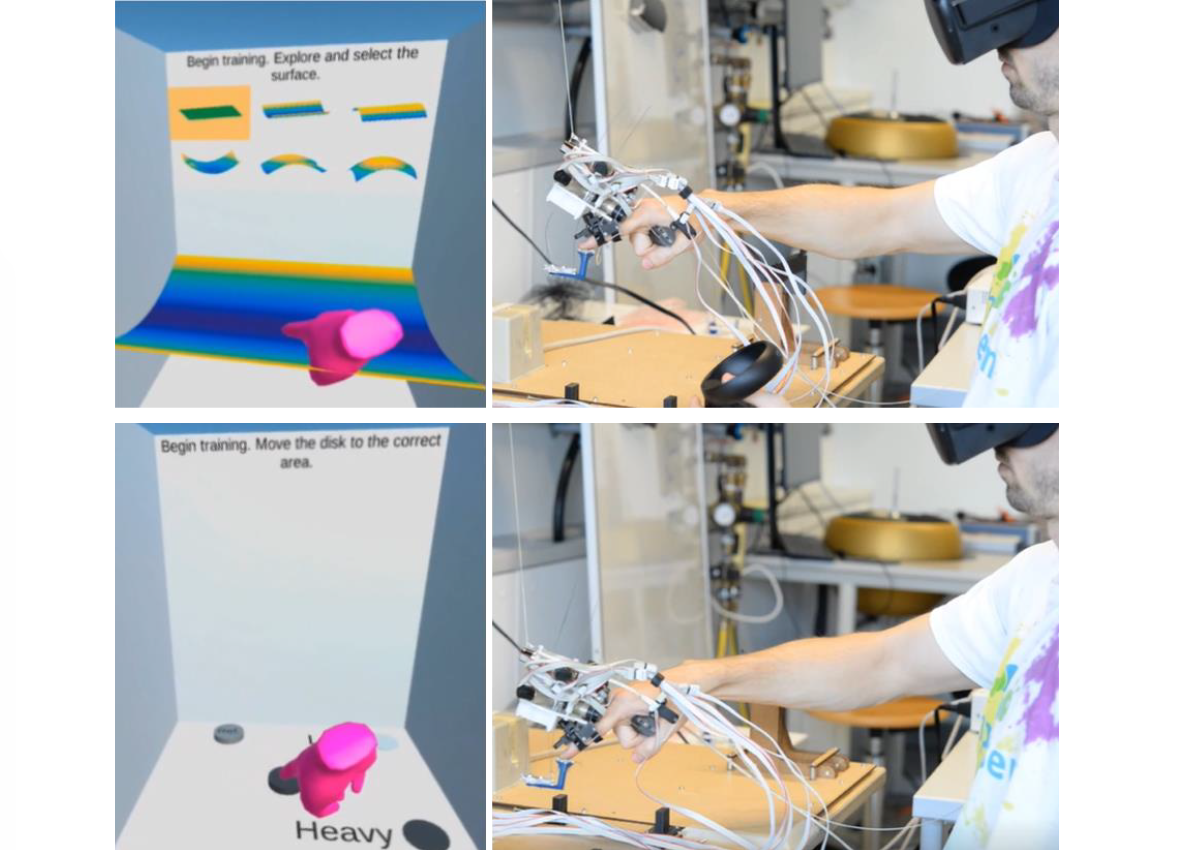
VirtualLadder: Using Interactive Projections for Agility Ladder Training
Felix Kosmalla (DFKI, Saarland Informatics Campus), Fabian Hupperich (Saarland Informatics Campus), Anke Hirsch (DFKI, Saarland Informatics Campus), Florian Daiber (DFKI, Saarland Informatics Campus), Antonio Krüger (DFKI, Saarland Informatics Campus)
Abstract | Tags: Late Breaking Work | Links:
@inproceedings{2021KosmallaVirtual,
title = {VirtualLadder: Using Interactive Projections for Agility Ladder Training},
author = {Felix Kosmalla (DFKI, Saarland Informatics Campus) and Fabian Hupperich (Saarland Informatics Campus) and Anke Hirsch (DFKI, Saarland Informatics Campus) and Florian Daiber (DFKI, Saarland Informatics Campus) and Antonio Krüger (DFKI, Saarland Informatics Campus)},
url = {https://umtl.cs.uni-saarland.de, Website - UMTLab
https://www.facebook.com/UMTLab/, Facebook - UMTLab
},
doi = {10.1145/3411763.3451638},
year = {2021},
date = {2021-05-07},
abstract = {Agility is the ability to change your body's position in a fast and efficient way while maintaining control of speed and direction. To develop this skill, the use of agility ladders is a widespread and well-known training method. While drills vary, having a human expert explaining and monitoring the exercises is usually advantageous. So far, only a few approaches to interactive systems for agility ladder training have been presented. In this work, we propose an interactive projection system to support an athlete in performing those drills. To investigate the effects of the location of those projections, we conducted an initial study with twelve participants using qualitative and quantitative methods. We found that while projecting instructions and feedback on the floor was favored, participants who were presented the same information in front of them on a projected screen partially performed better in a subsequent agility assessment.},
keywords = {Late Breaking Work},
pubstate = {published},
tppubtype = {inproceedings}
}
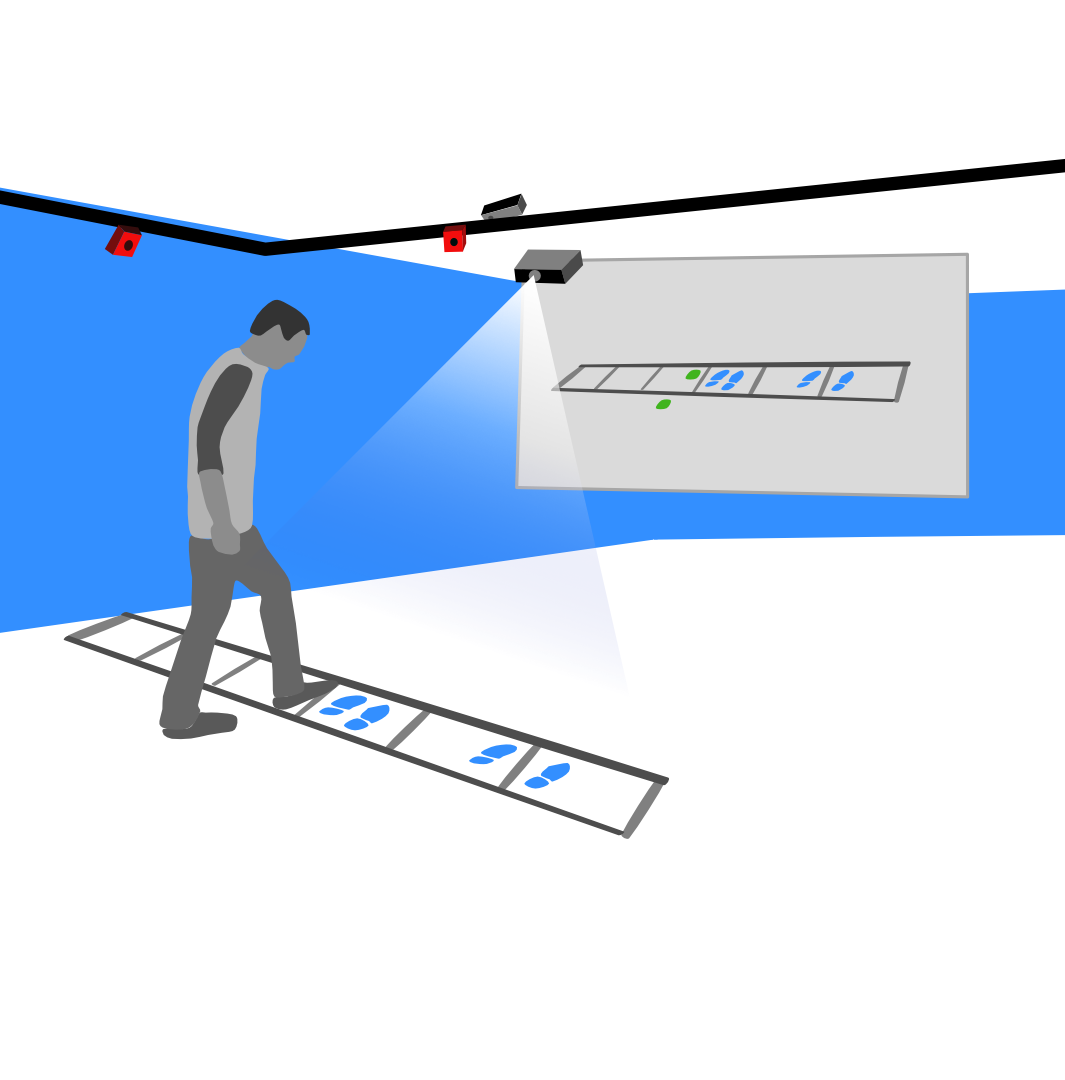
Visual Interactive Privacy Policy: The Better Choice?
Daniel Reinhardt (PsyErgo), Johannes Borchard (Vogel Communications Group), Jörn Hurtienne (PsyErgo)
Abstract | Tags: Full Paper | Links:
@inproceedings{2021ReinhardtVisual,
title = {Visual Interactive Privacy Policy: The Better Choice?},
author = {Daniel Reinhardt (PsyErgo) and Johannes Borchard (Vogel Communications Group) and Jörn Hurtienne (PsyErgo)},
url = {https://www.mcm.uni-wuerzburg.de/psyergo/startseite/, Website - PsyErgo University of Würzburg},
doi = {10.1145/3411764.3445465},
year = {2021},
date = {2021-05-01},
abstract = {Online privacy policies should enable users to make informed decisions. Current text policies, however, lack usability: users often miss crucial information and consent to them without reading. Visual representation formats may increase comprehension, but are rarely used in practice. In an iterative design process we gathered qualitative feedback on typical policy contents and on existing and newly designed representation formats. We developed design guidelines and a Visual Interactive Privacy Policy based on the Privacy Policy Nutrition Label enriched with control options and further interactive elements. In an empirical evaluation, both visual representations received higher ratings of attractiveness, stimulation, novelty and transparency compared to a standard policy long text. Interactivity improved time spent with the policy. There were no effects on conversion rate, perceived control or perceived trust, efficiency and perspicuity. More research is needed, especially with regard to the cost-benefit ratio of visual privacy policies.},
keywords = {Full Paper},
pubstate = {published},
tppubtype = {inproceedings}
}
Visuo-haptic Illusions for Linear Translation and Stretching using Physical Proxies in Virtual Reality
Martin Feick (DFKI, Saarland Informatics Campus), Niko Kleer (DFKI, Saarland Informatics Campus), André Zenner (Saarland University & DFKI, Saarland Informatics Campus), Anthony Tang (University of Toronto), Antonio Krüger (DFKI, Saarland Informatic Campus)
Abstract | Tags: Full Paper | Links:
@inproceedings{Feich2021_Visuohaptic,
title = {Visuo-haptic Illusions for Linear Translation and Stretching using Physical Proxies in Virtual Reality},
author = {Martin Feick (DFKI, Saarland Informatics Campus) and Niko Kleer (DFKI, Saarland Informatics Campus) and André Zenner (Saarland University & DFKI, Saarland Informatics Campus) and Anthony Tang (University of Toronto) and Antonio Krüger (DFKI, Saarland Informatic Campus)},
url = {https://youtu.be/xNcCpBdRdp0 (teaser)
https://www.youtube.com/watch?v=a_M84iFda2k (video figure)
https://twitter.com/umtl
https://umtl.cs.uni-saarland.de/ (lab page)},
doi = {10.1145/3411764.3445456},
year = {2021},
date = {2021-05-08},
publisher = {ACM},
abstract = {Providing haptic feedback when manipulating virtual objects is an essential part of immersive virtual reality experiences; however, it is challenging to replicate all of an object’s properties and characteristics. We propose the use of visuo-haptic illusions alongside physical proxies to enhance the scope of proxy-based interactions with virtual objects. In this work, we focus on two manipulation techniques, linear translation and stretching across different distances, and investigate how much discrepancy between the physical proxy and the virtual object may be introduced without participants noticing. In a study with 24 participants, we found that manipulation technique and travel distance significantly affect the detection thresholds, and that visuo-haptic illusions impact performance and accuracy. We show that this technique can be used to enable functional proxy objects that act as stand-ins for multiple virtual objects, illustrating the technique through a showcase VR-DJ application.},
keywords = {Full Paper},
pubstate = {published},
tppubtype = {inproceedings}
}
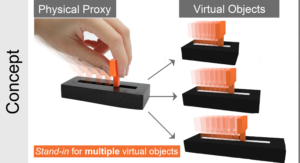
VRsneaky: Stepping into an Audible Virtual World with Gait-Aware Auditory Feedback
Felix Dietz (Bundeswehr University Munich), Matthias Hoppe (LMU Munich), Jakob Karolus (LMU Munich), Pawel Wozniak (Utrecht University), Albrecht Schmidt (LMU Munich), Tonja Machulla (LMU Munich)
Tags: Interactivity/Demonstration | Links:
@inproceedings{Dietz2021VRsneaky,
title = {VRsneaky: Stepping into an Audible Virtual World with Gait-Aware Auditory Feedback},
author = {Felix Dietz (Bundeswehr University Munich), Matthias Hoppe (LMU Munich), Jakob Karolus (LMU Munich), Pawel Wozniak (Utrecht University), Albrecht Schmidt (LMU Munich), Tonja Machulla (LMU Munich)},
url = {https://www.unibw.de/usable-security-and-privacy, Website - Usable Security and Privacy Group, Research Institute CODE
http://www.medien.ifi.lmu.de, Media Informatics Group, LMU Munich
https://youtu.be/gSoe4i-aR_g, Youtube Video},
doi = {10.1145/3334480.3383168},
year = {2021},
date = {2021-05-01},
keywords = {Interactivity/Demonstration},
pubstate = {published},
tppubtype = {inproceedings}
}
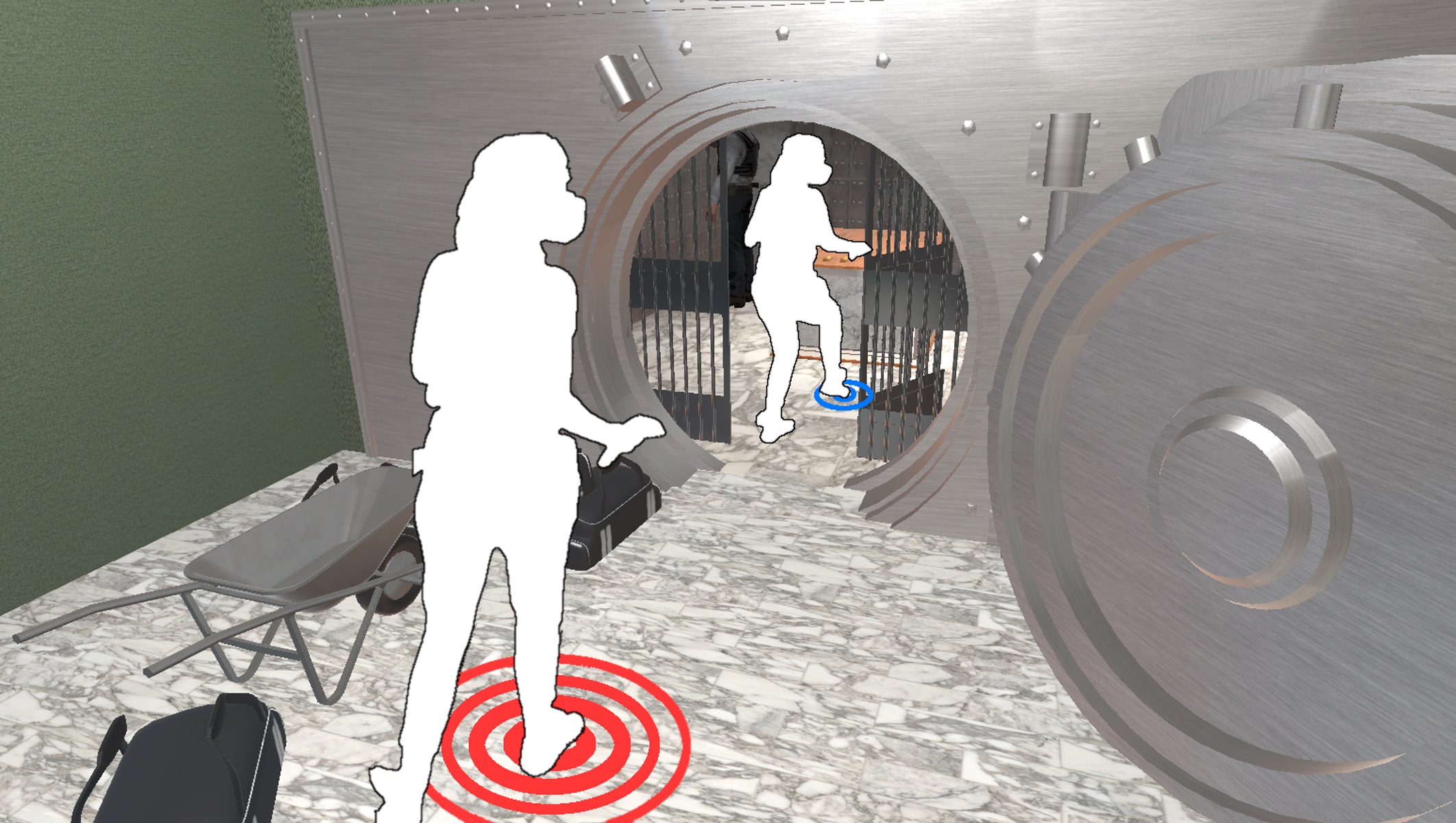
VRtangibles: Assisting Children in Creating Virtual Scenes using Tangible Objects and Touch Input
Andrii Matviienko (Technical University of Darmstadt), Marcel Langer (Technical University of Darmstadt), Florian Müller (Technical University of Darmstadt), Martin Schmitz (Technical University of Darmstadt), Max Mühlhäuser (Technical University of Darmstadt)
Abstract | Tags: Late Breaking Work | Links:
@inproceedings{2021MatviienkoVRtangibles,
title = {VRtangibles: Assisting Children in Creating Virtual Scenes using Tangible Objects and Touch Input},
author = {Andrii Matviienko (Technical University of Darmstadt) and Marcel Langer (Technical University of Darmstadt) and Florian Müller (Technical University of Darmstadt) and Martin Schmitz (Technical University of Darmstadt) and Max Mühlhäuser (Technical University of Darmstadt)},
url = {https://teamdarmstadt.de, Website - Team Darmstadt
https://www.facebook.com/teamdarmstadt, Facebook - Team Darmstadt},
doi = {10.1145/3411763.3451671},
year = {2021},
date = {2021-05-01},
abstract = {Children are increasingly exposed to virtual reality (VR) technology as end-users. However, they miss an opportunity to become active creators due to the barrier of insufficient technical background. Creating scenes in VR requires considerable programming knowledge and excludes non-tech-savvy users, e.g., school children. In this paper, we showcase a system called VRtangibles, which combines tangible objects and touch input to create virtual scenes without programming. With VRtangibles, we aim to engage children in the active creation of virtual scenes via playful hands-on activities. From the lab study with six school children, we discovered that the majority of children were successful in creating virtual scenes using VRtangibles and found it engaging and fun to use.},
keywords = {Late Breaking Work},
pubstate = {published},
tppubtype = {inproceedings}
}
